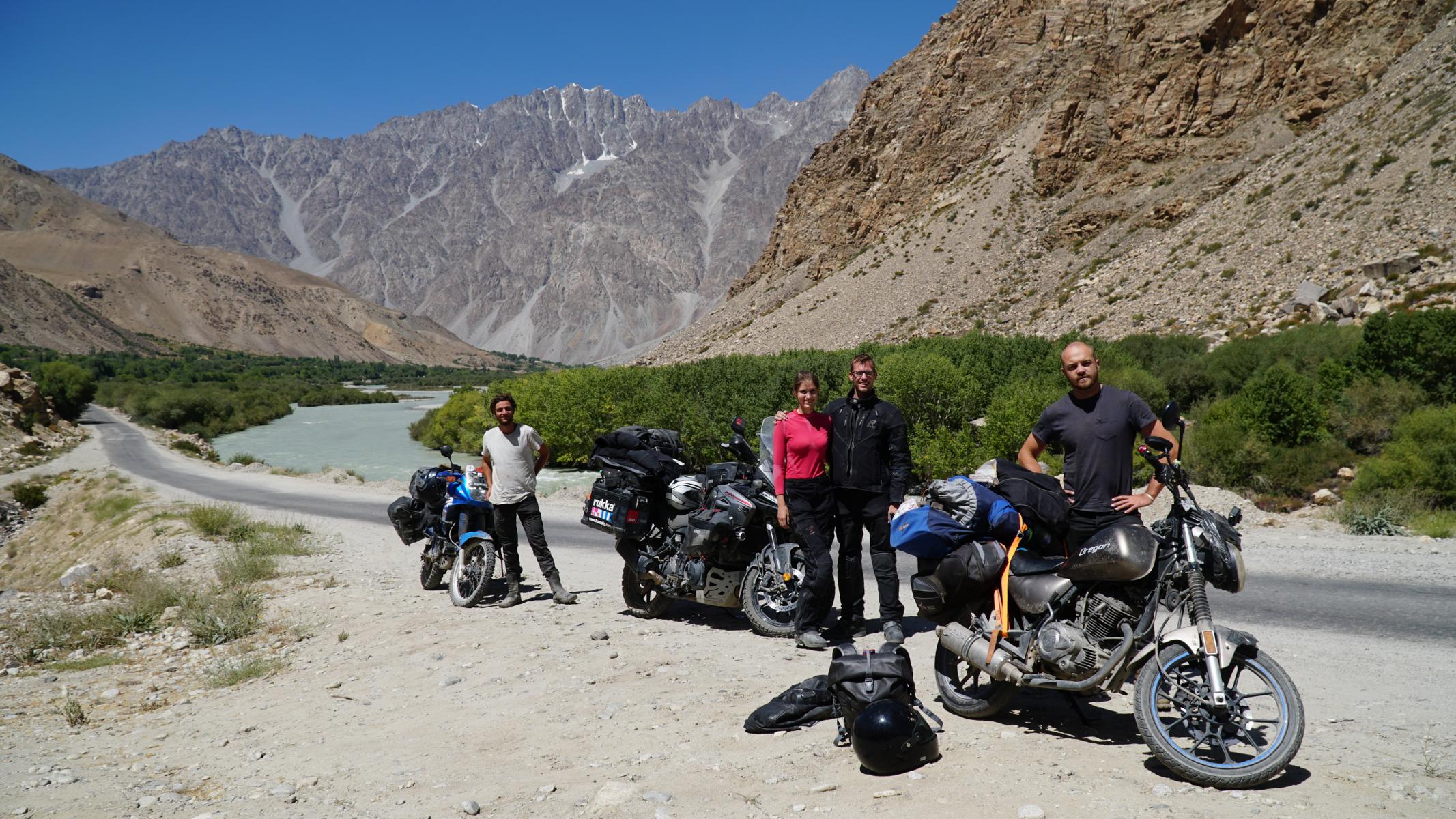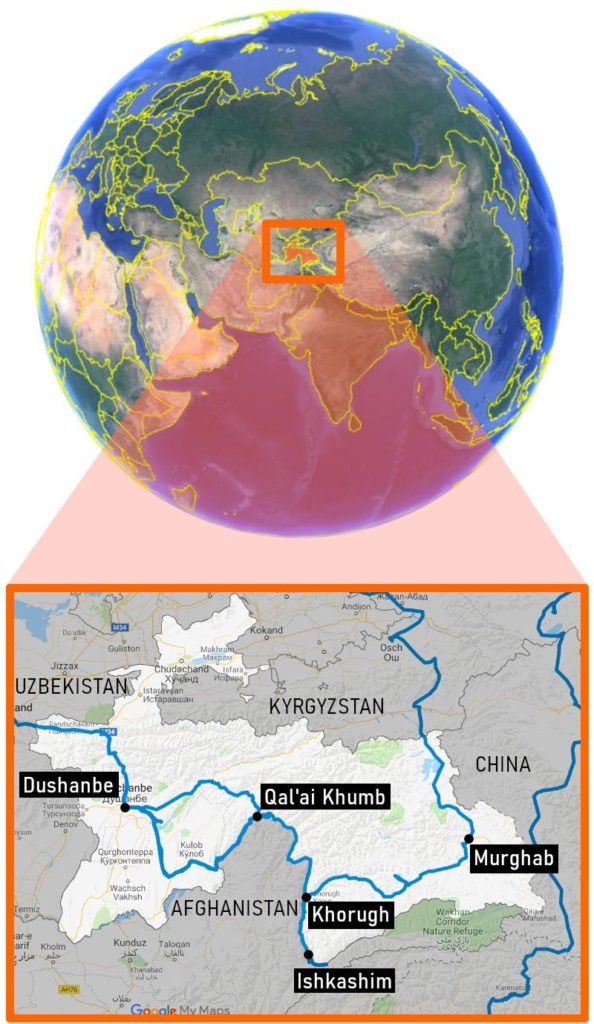
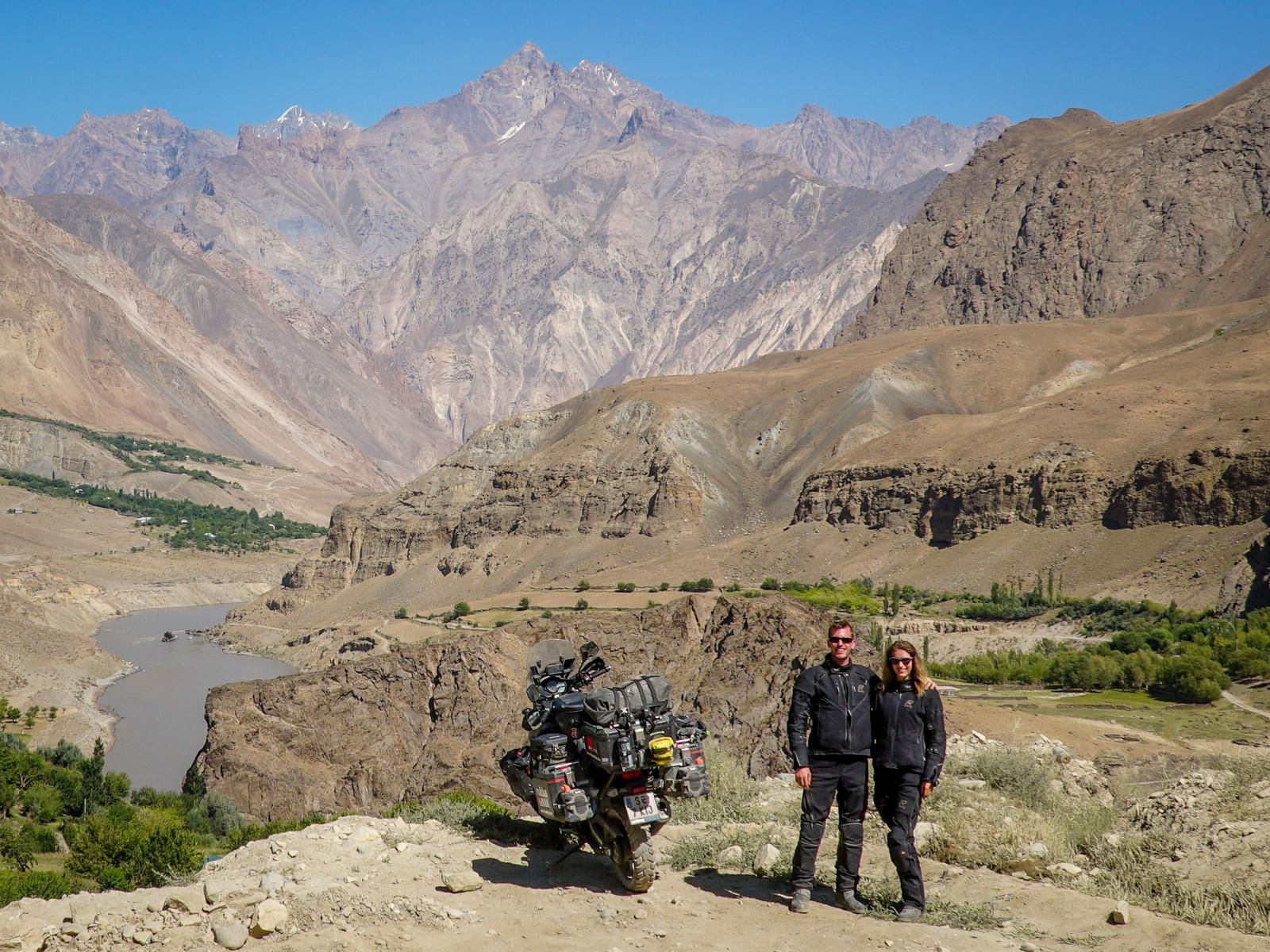
An Emotional Rollercoaster
Hardships and challenges combined with breathtaking landscapes and unique scenery:
Be prepared for the unexpected! If you just plan to do a short trip through the country, be sure to take some extra time. Instead of the planned ten days we spent more than a month struggling with bad roads, rough conditions, bad food and breakdowns. Nevertheless, the country left a lasting impression on us. Not only the high altitude took our breath away, but also the immense friendliness and helpfulness of the people living under simple conditions.
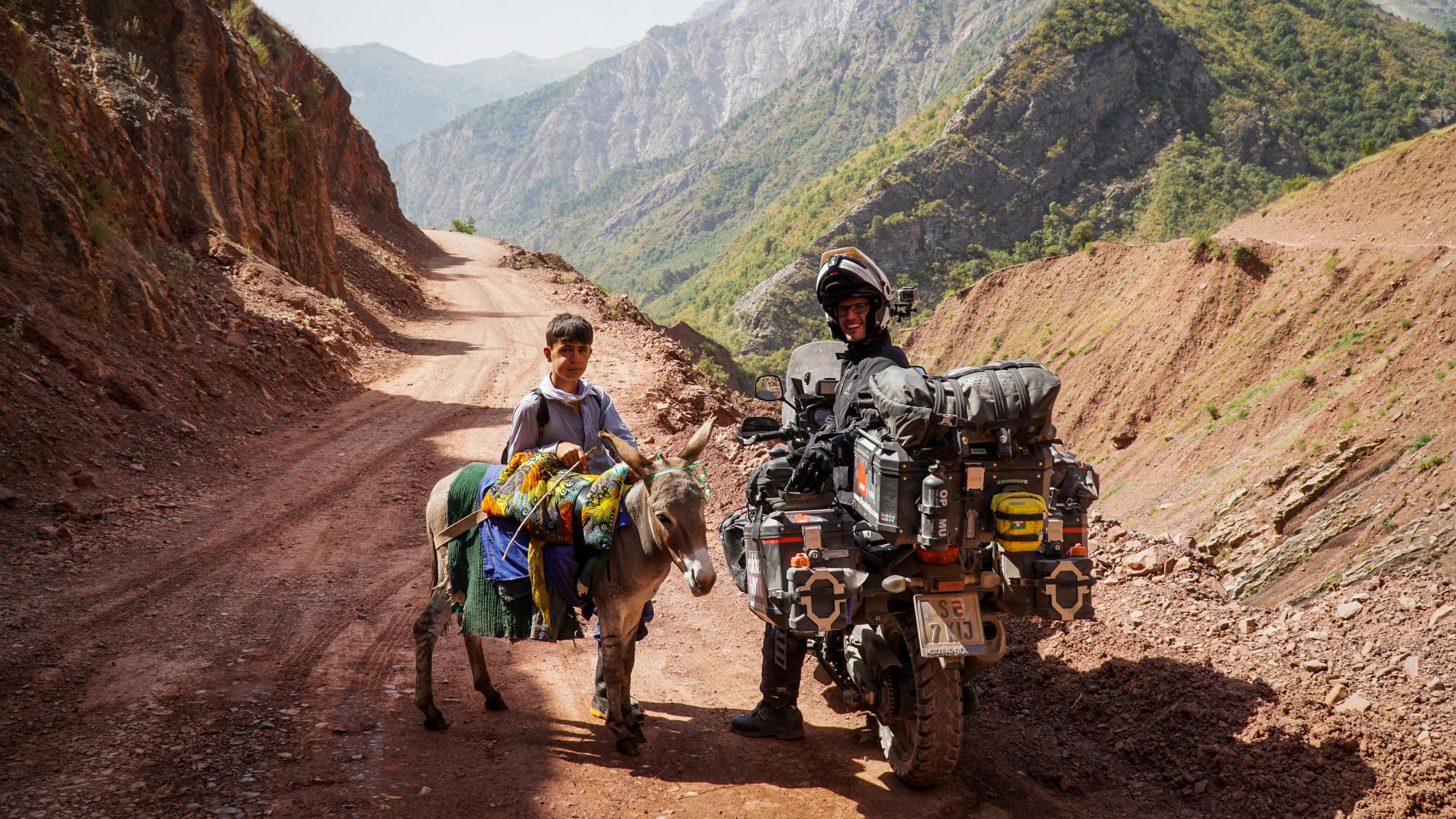
Birthday celebrations in Dushanbe
The entry at Panjakent from Uzbekistan went unexpectedly smooth. We didn`t have to pay any strange fee as we have heard from other travelers. The only thing we had to pay was a road tax that allowed us to ride the motorcycle for a duration of 16 days in the country. It turned out that the only tricky thing is to check your entry date on the visa before exiting Uzbekistan. We met three other travelers from the United States, Canada and Iran that got stuck between the borders for three days because their Tajikistan visa has not been valid then.
The landscape changed from flat dry land to green mountains. As it got dark soon after entering, we pitched our tent on the side of the road to get some sleep. We have already learned to avoid riding in the dark especially in a new country that we didn`t know yet.

In the morning we continued our way to Dushanbe, the capital of Tajikistan. On the way we went through a long, narrow, dark and extremely dusty tunnel, where cars and even trucks overtook us in high speed without being able to see the oncoming traffic. Later we learned that the so-called Anzob-tunnel, also nicknamed “tunnel of death”, was one of the most dangerous tunnels in the world. With hardly any light and no ventilation people had even died from carbon monoxide poisoning after getting stuck in a traffic jam.
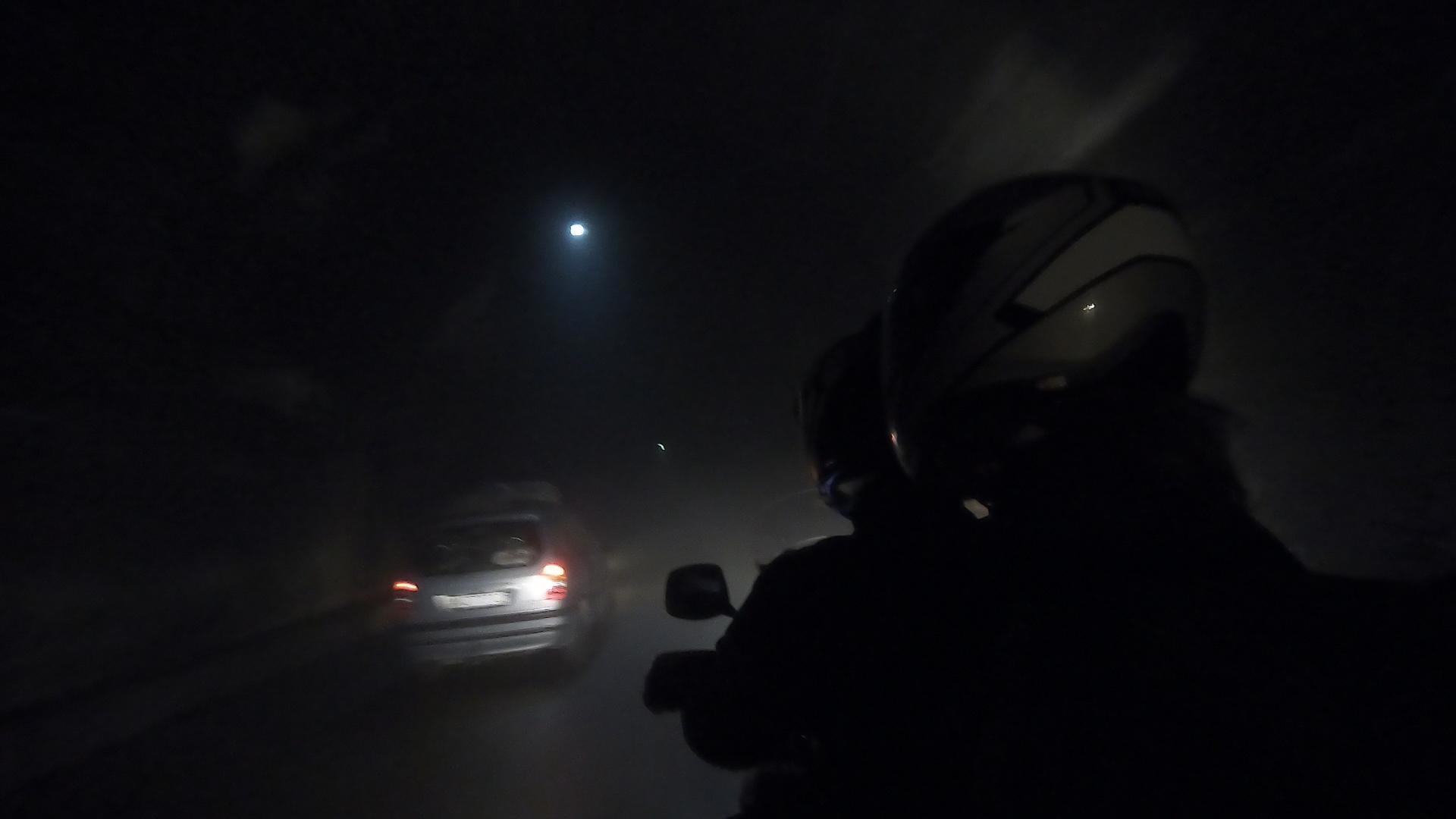
When we arrived at Greenhouse hostel in Dushanbe, we were greeted from many other overlanders travelling by car, motorcycle, bicycle or hitchhiking. The atmosphere was great. Everyone was sitting around, repairing their stuff or working on some blogposts. The perfect place to celebrate Peter’s 30th birthday.
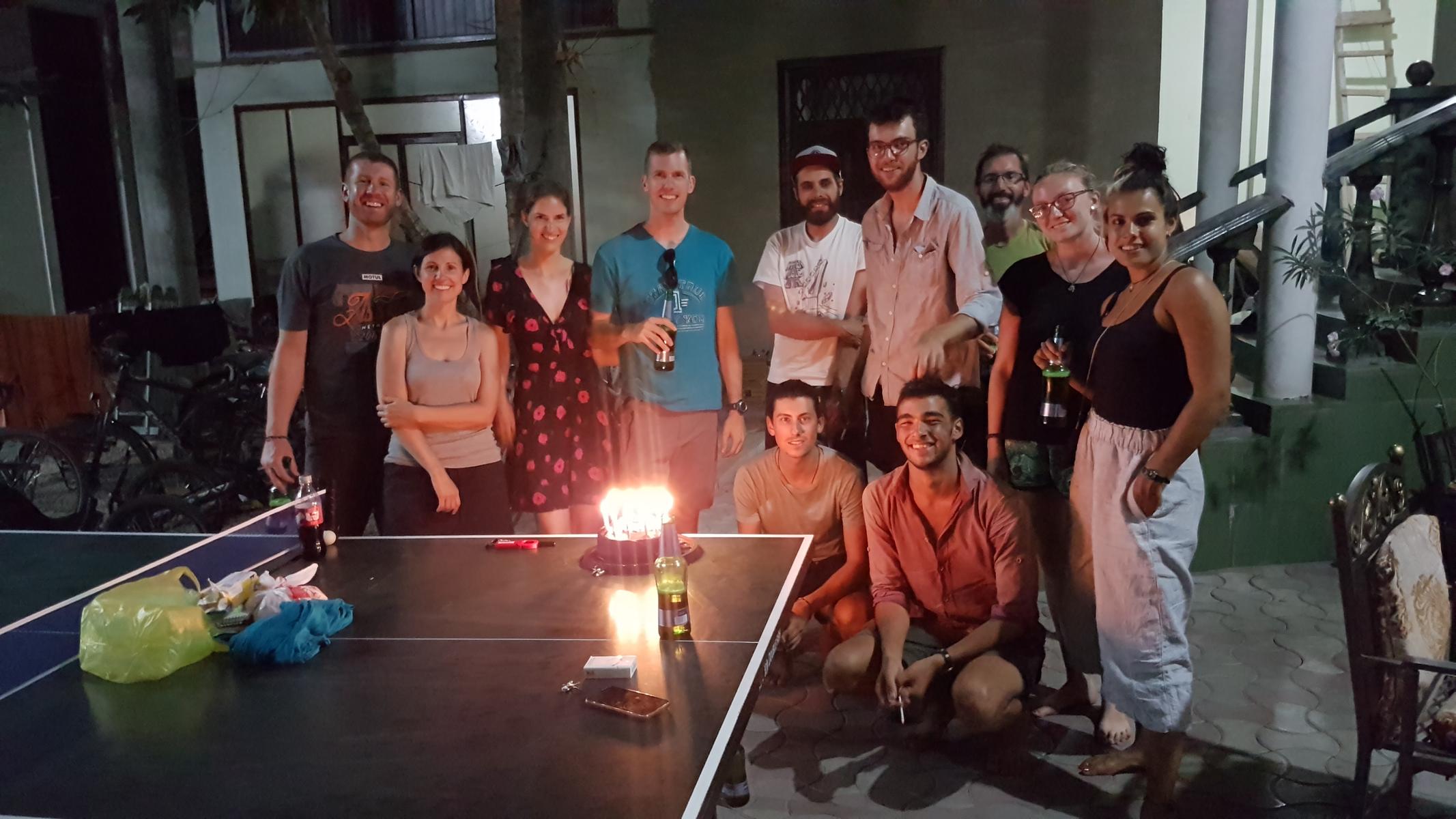
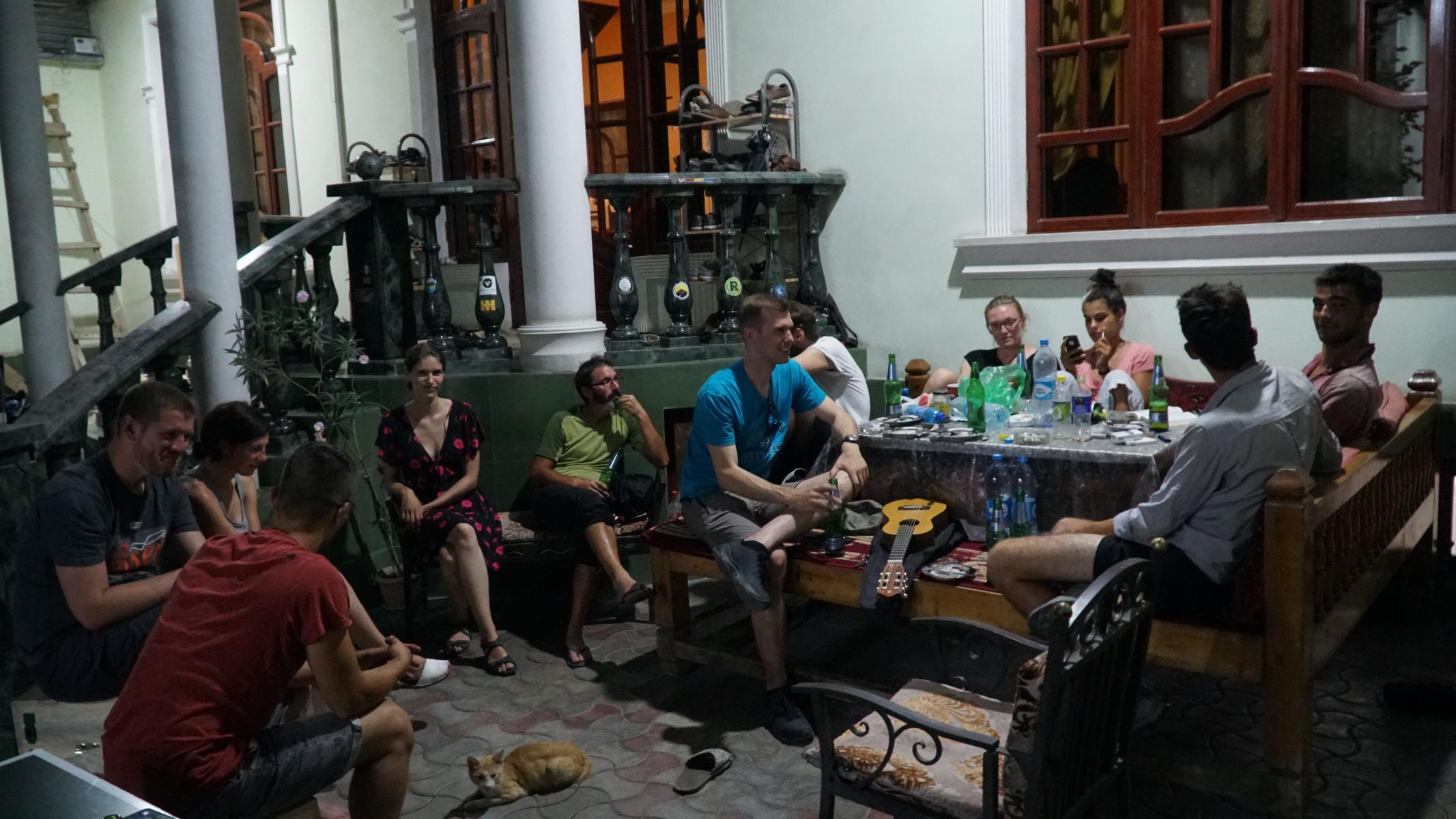
Preparing for the Pamir
From many other travelers we have heard that the Pamir Highway would be extremely challenging for the motorbike. The roads are mainly off-road and in such a bad state that a friend’s suspension even broke and he had to go back to Dushanbe to repair it. The best place to fix a bike is the Bike House Dushanbe where the owner Aziz is creative in finding solutions for nearly everything.
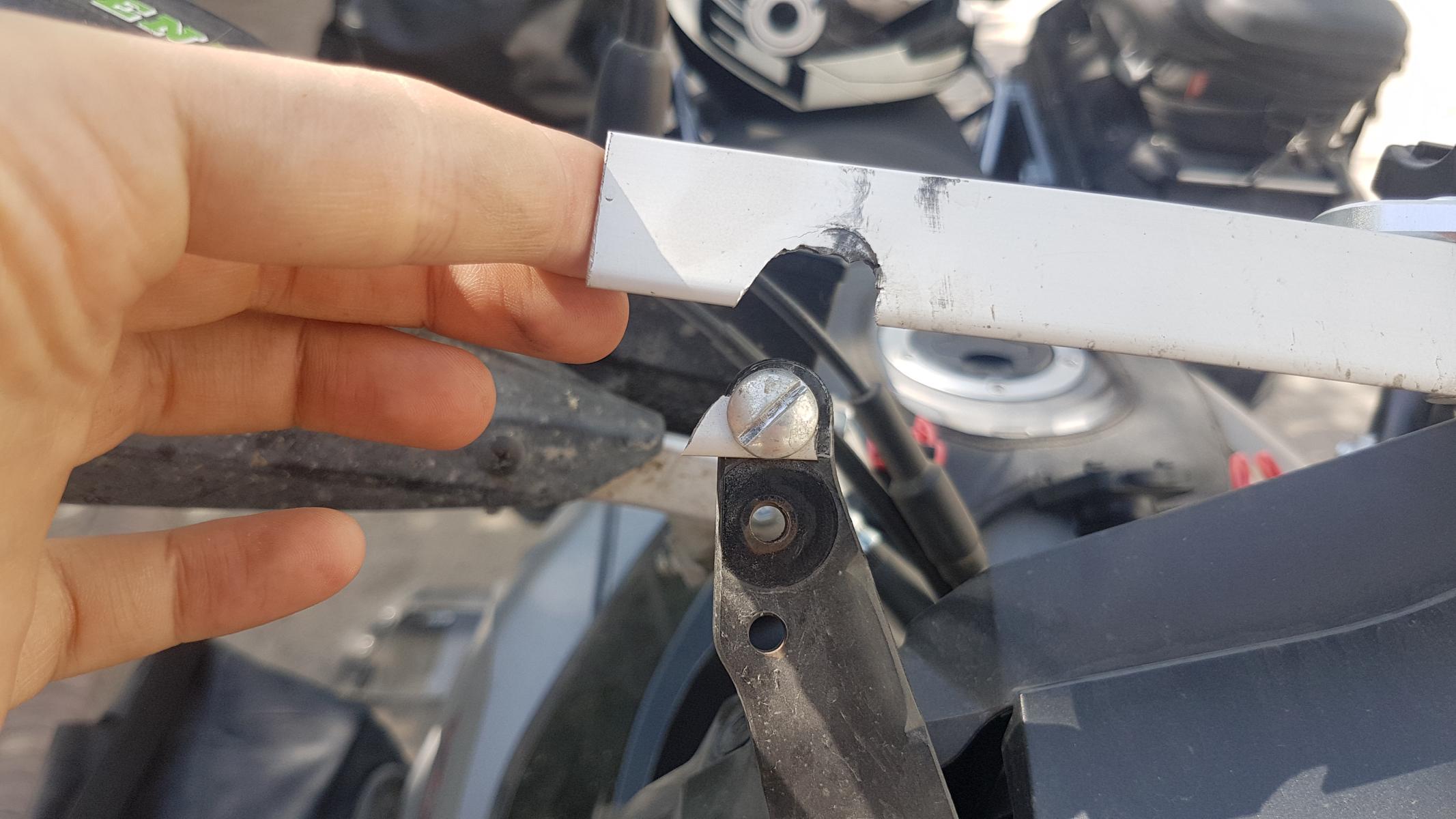
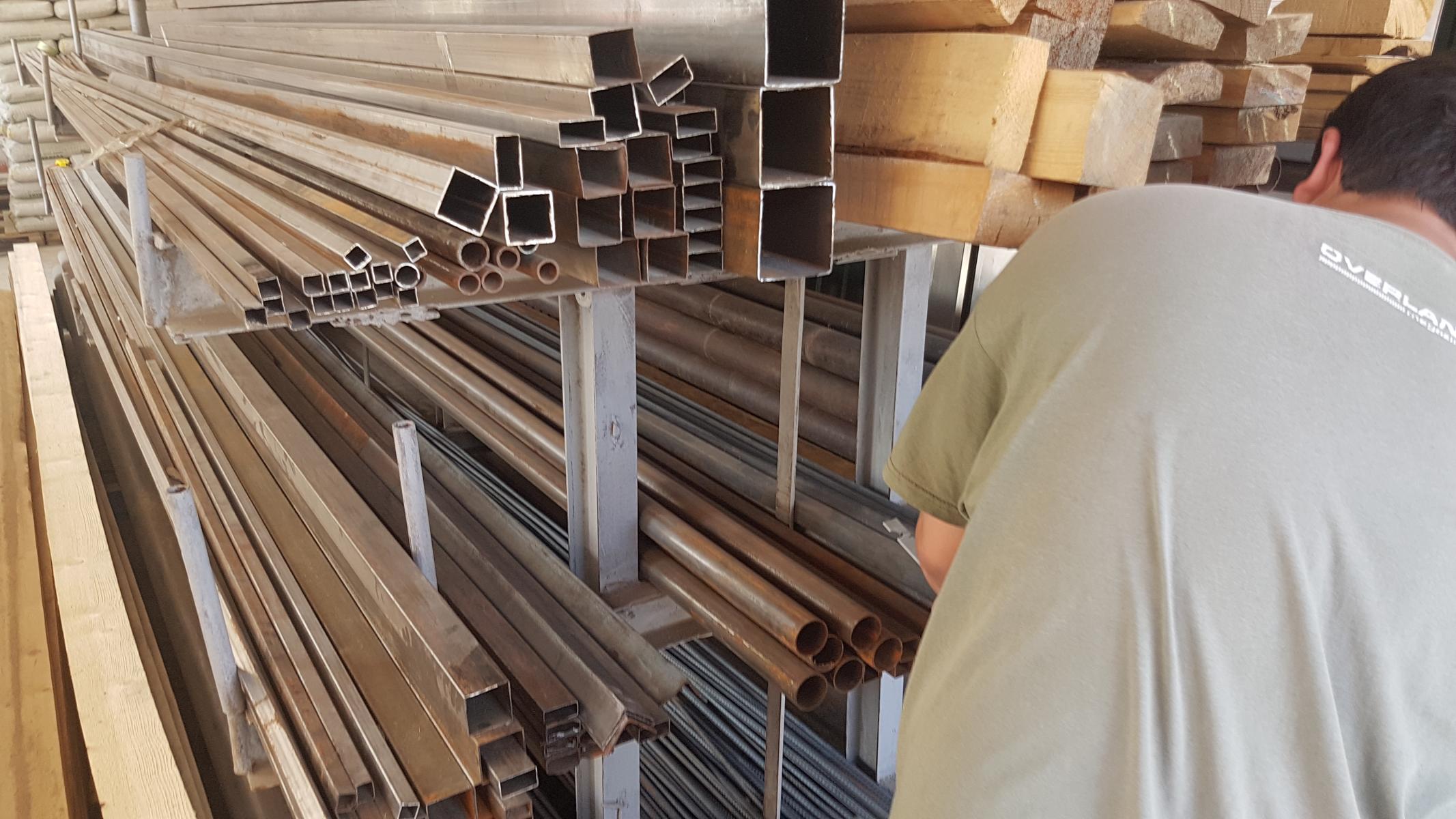
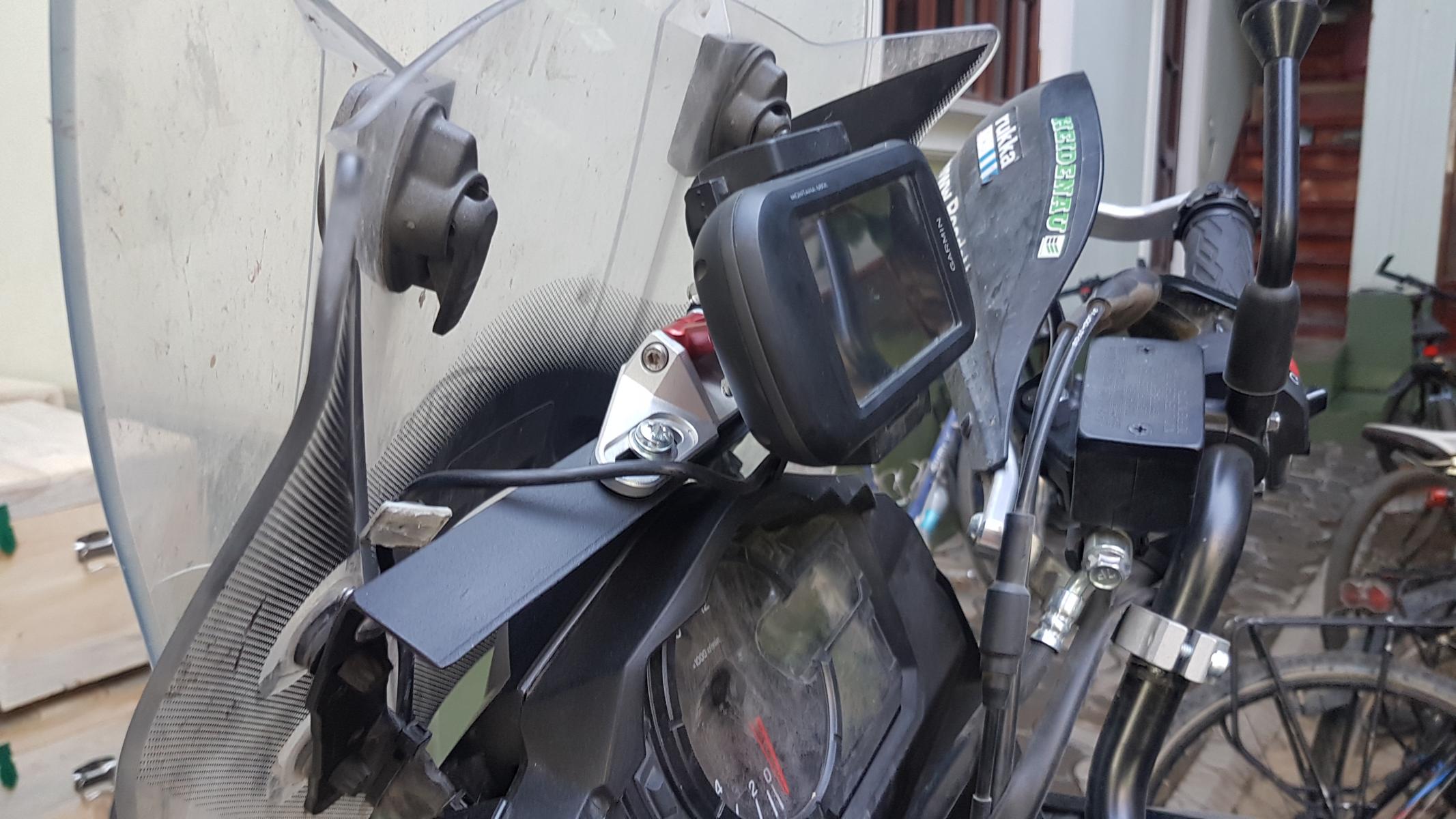
After finishing some small repair works on our bike we were ready to start the hardest and most adventurous part of our trip: the Pamir Highway. We chose to ride on the so-called north-route. Although it is more challenging than the road in the south it is much more beautiful. In Qal’ai Khumb, a small town bordering to Afghanistan, the two roads connect together again.
Strangers in the night
Our first stop was at the Nurek-Dam, the world`s second largest hand-made dam. The hydroelectric power produced is enough to supply nearly all of Tajikistan with energy.
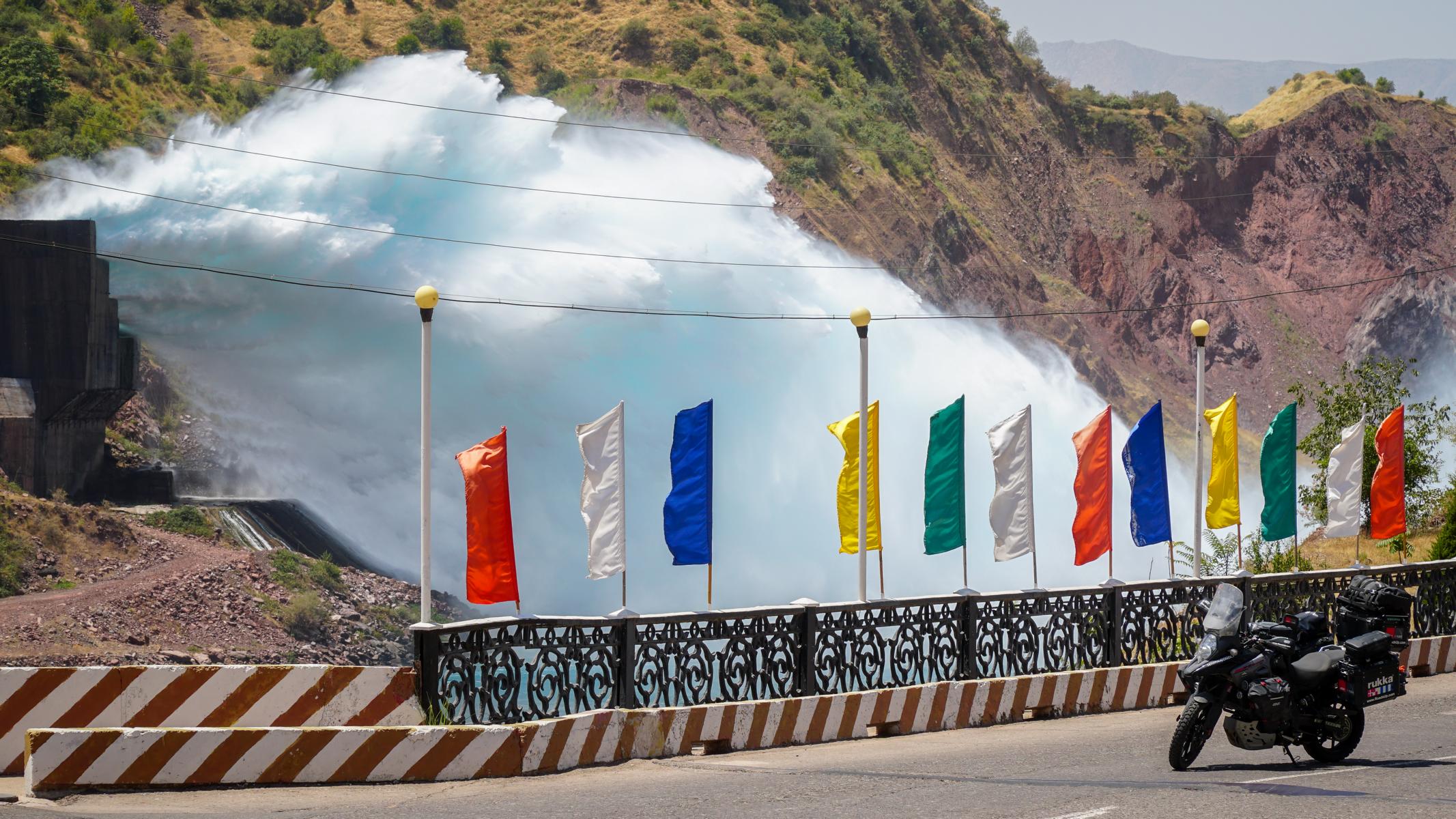
After a few kilometers riding along the northern route potholes became more and the asphalt got less. Soon we were riding on a dirt road. The scenery was fantastic and the weather became cooler and more bearable the higher we got.

At the gas station we were surprised to see that they took a bucket full of petrol and an enormous funnel to fill our tank.
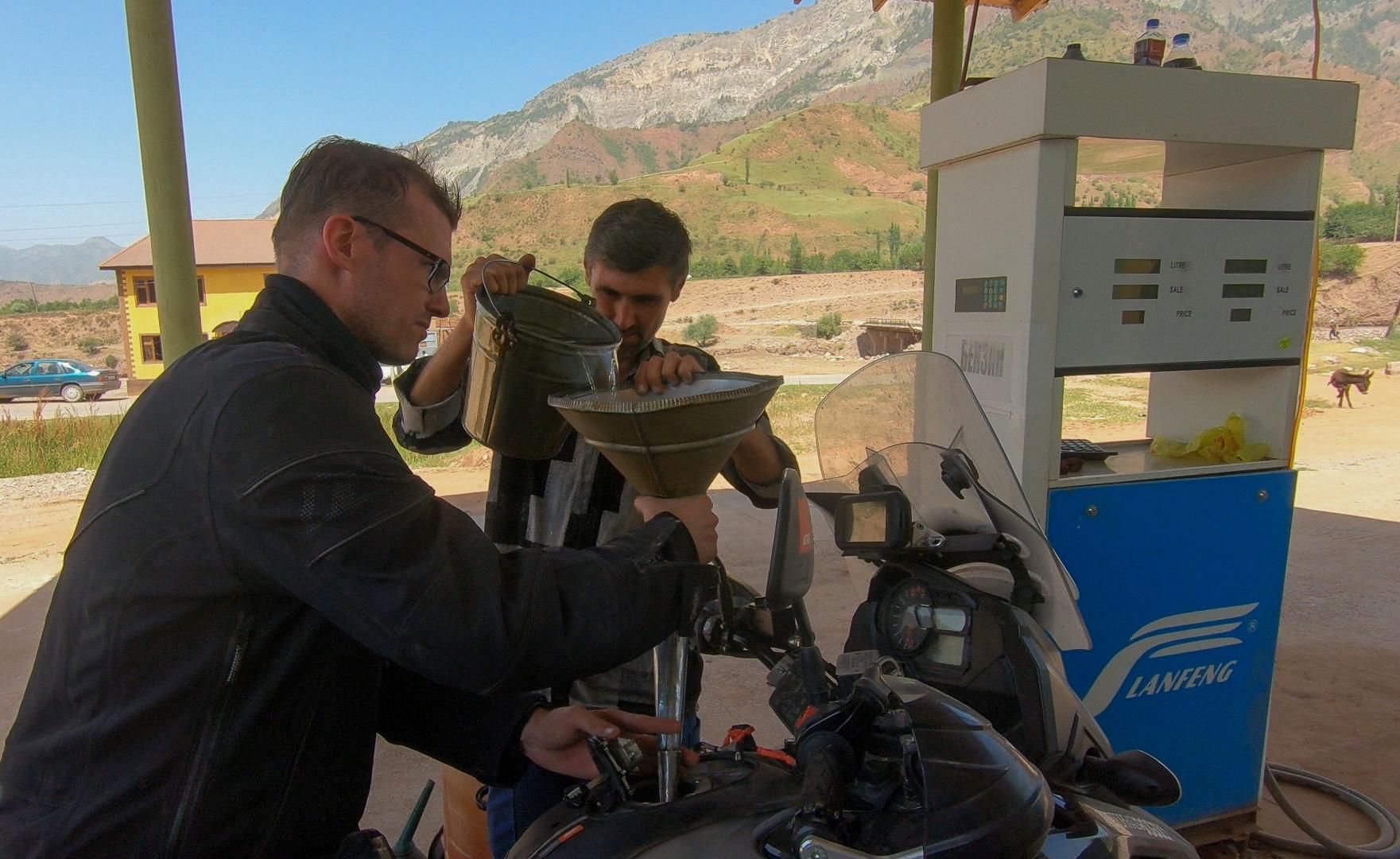
As it become afternoon we were in the middle of nowhere and decided to pitch our tent while there was still some daylight left. We found a nice secluded place far away from the road in a canyon. In the middle of the night we woke up from the noise of footsteps and muffled voices. Our heart was racing and we looked at each other bewildered. There was no reason for someone walking next to our tent at night in that secluded area. Before we could think further about getting attacked or murdered Peter decided to take action and asked loudly: “Who are you? What do you want?” They came closer and spoke something in Russian that we didn`t understand. Slowly we opened the entrance of the tent to see two men standing there, one holding a badge saying “Police” to us. Obviously they just wanted to check on us and see if we were alright or needed any help. After they left we lay there awake waiting for the heartbeat to slow down again.
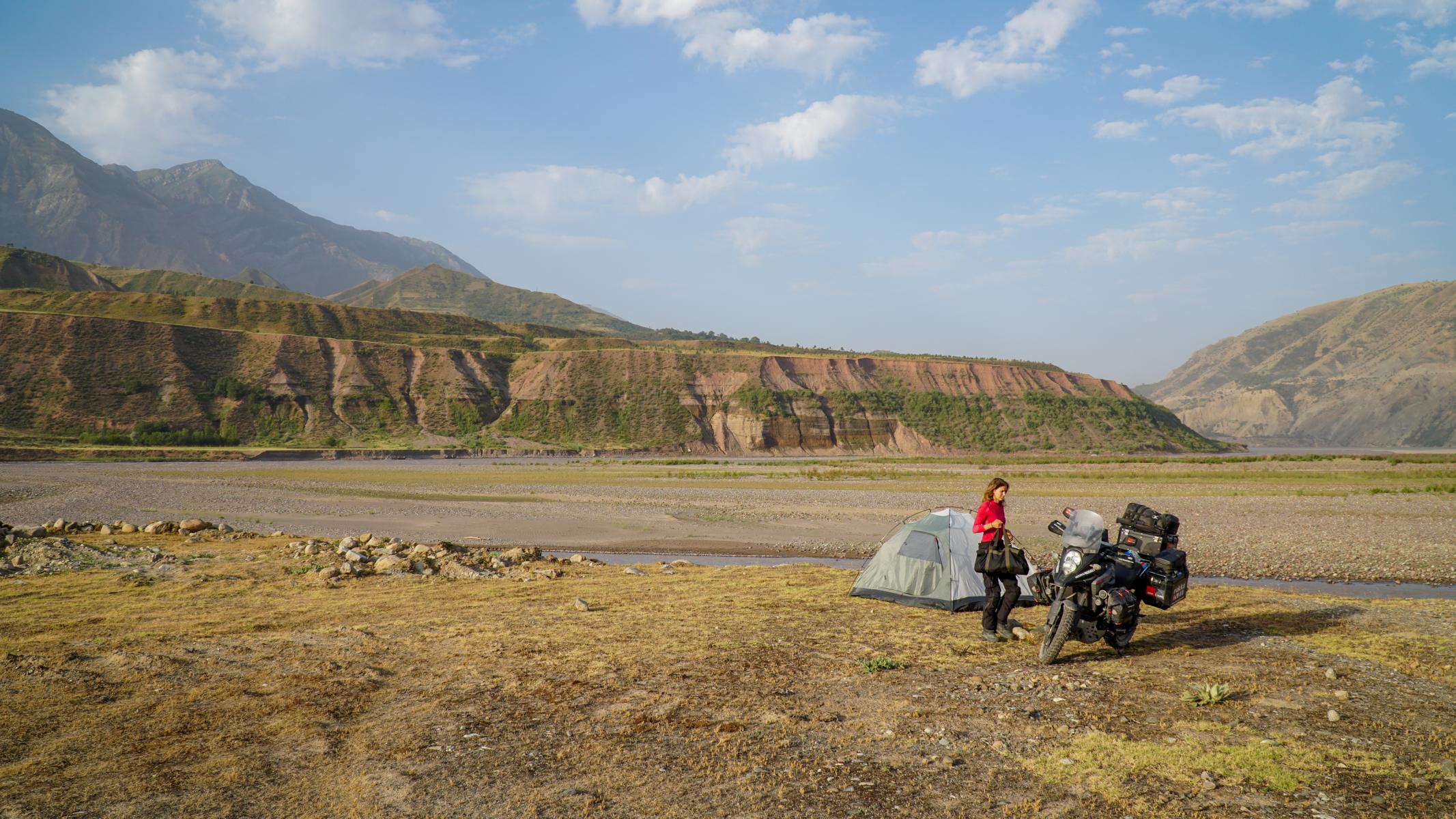
A fallen topcase
In the morning we left early to reach Qal’ai Khumb during daylight. Ahead of us lay a dirt road with small streams to cross. Muddy and stony parts were combined with a breathtaking scenery of beautiful mountains and crystal-clear rivers.
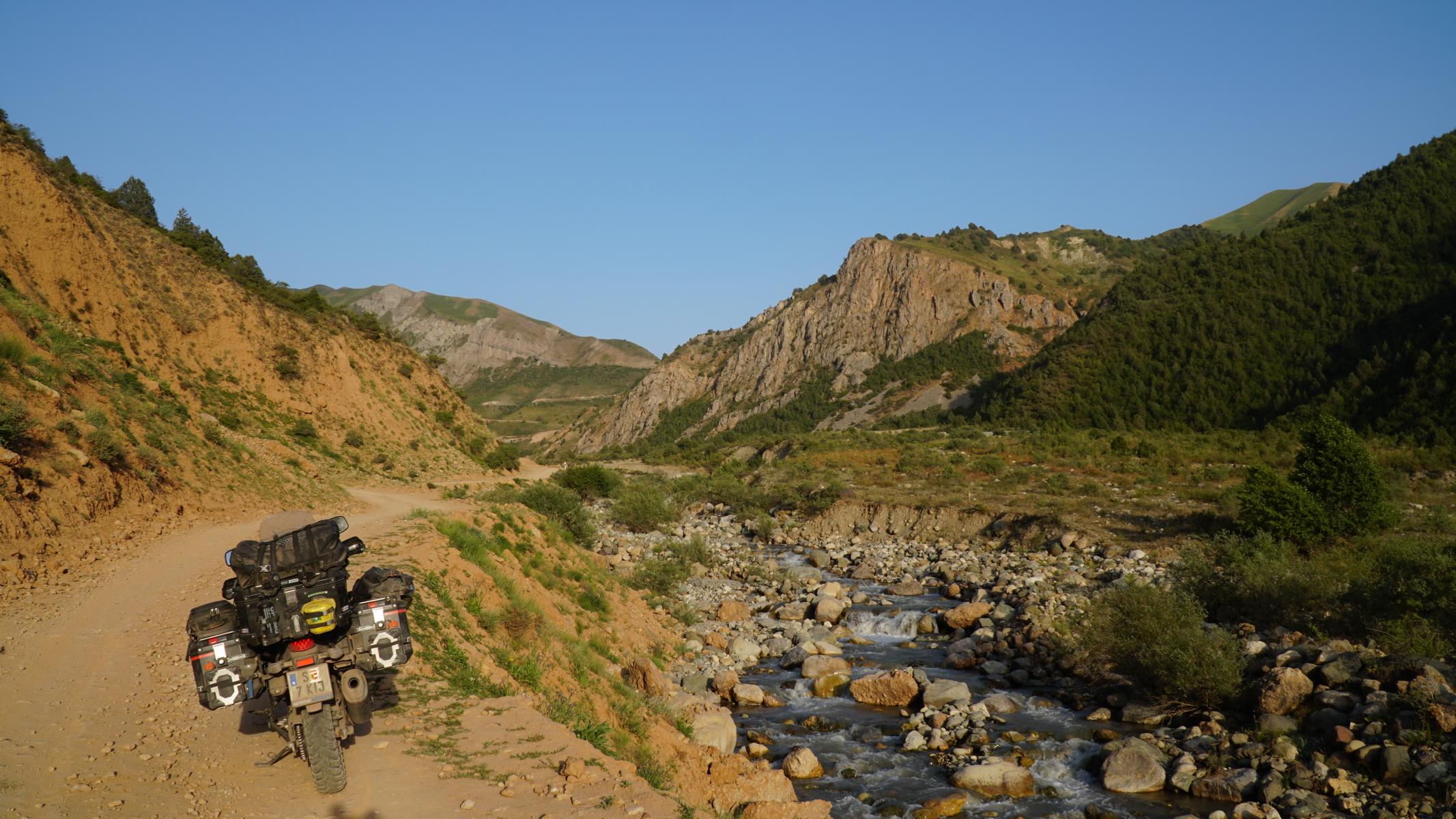
As soon as we entered the Gorno-Badakhshan Autonomous Region (GBAO) the number of military posts increased. At every stop we had to show our passports and visa with our special GBAO permit. They wrote our names, passport numbers and number plates into a big book.
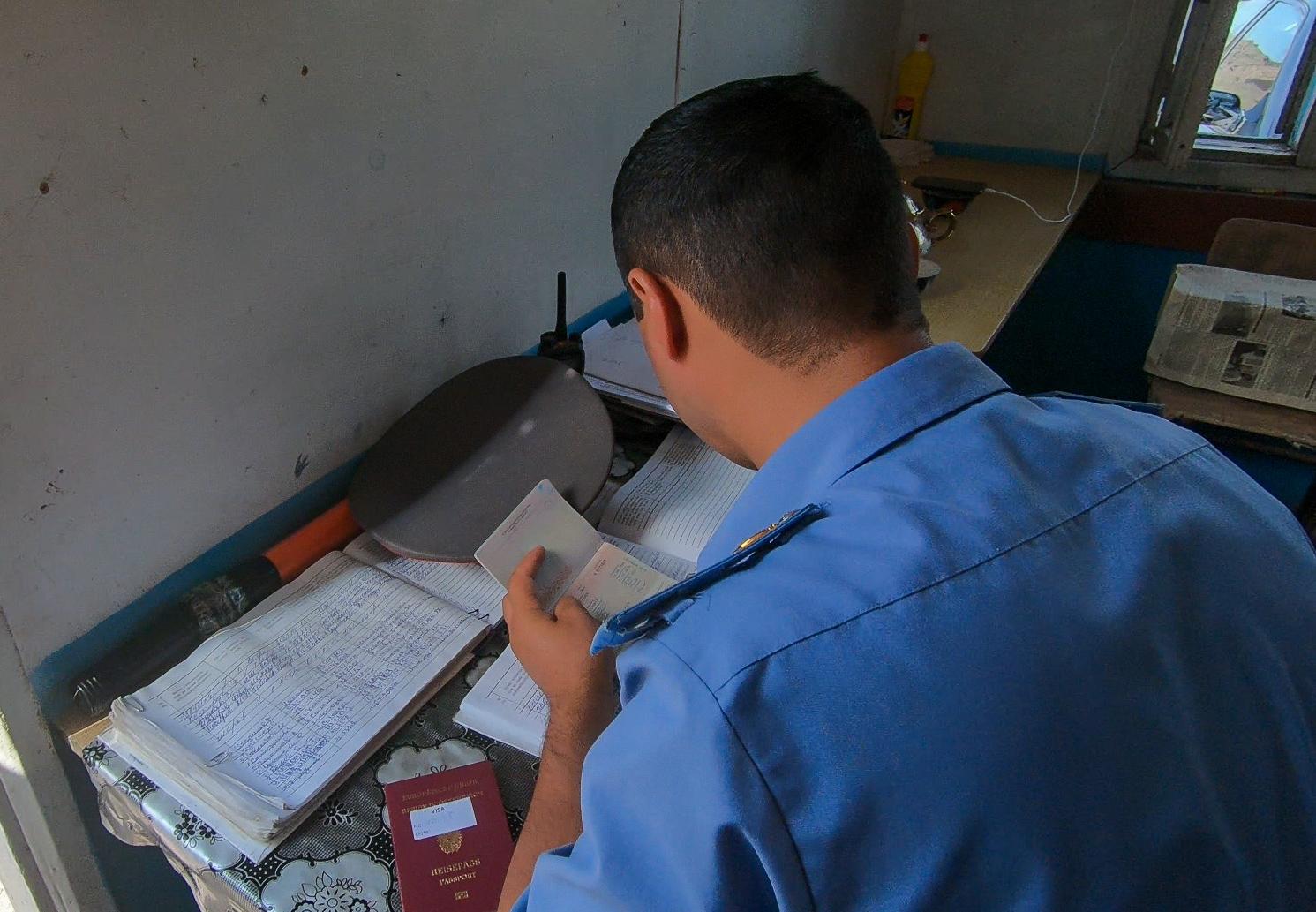
Regular signs on the wayside reminded us of the mines that are still there. They are remnants of the civil war in the 1990s. We should better not sleep in a tent in this area, we thought as we continued towards Qal’ai Khumb.

Due to bad road conditions our topcase was shaking badly the whole time. We have passed the maximum load of 10 kg by far, so we were not really surprised when suddenly the two front screws on the mount broke in the middle. Thankfully the screw thread was not damaged. We had to wait some time sitting on the dusty road in the middle of nowhere until a car stopped and agreed to take the topcase to the next town while we were following the car. There we found a mechanic who stopped all his work to help us immediately with our problem. With hardly any tool the guys managed to get out the broken screws and even found some replacements. About two hours later we were able to continue.
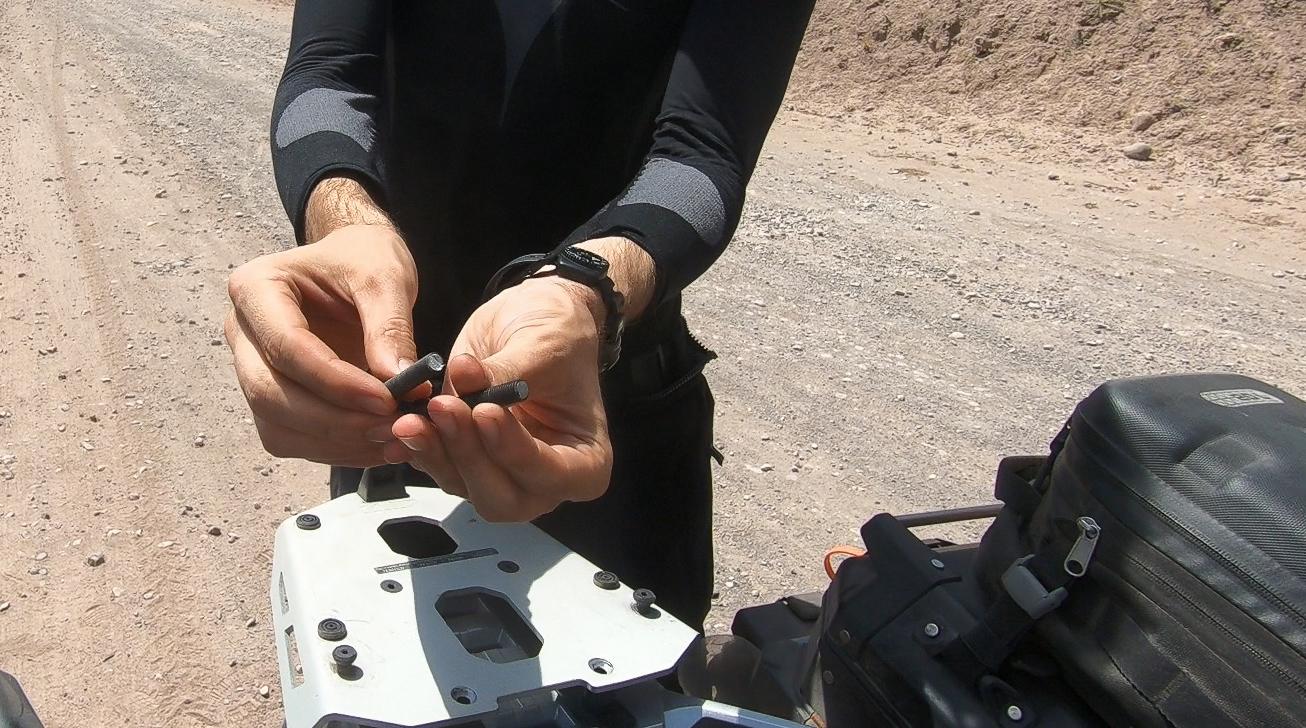
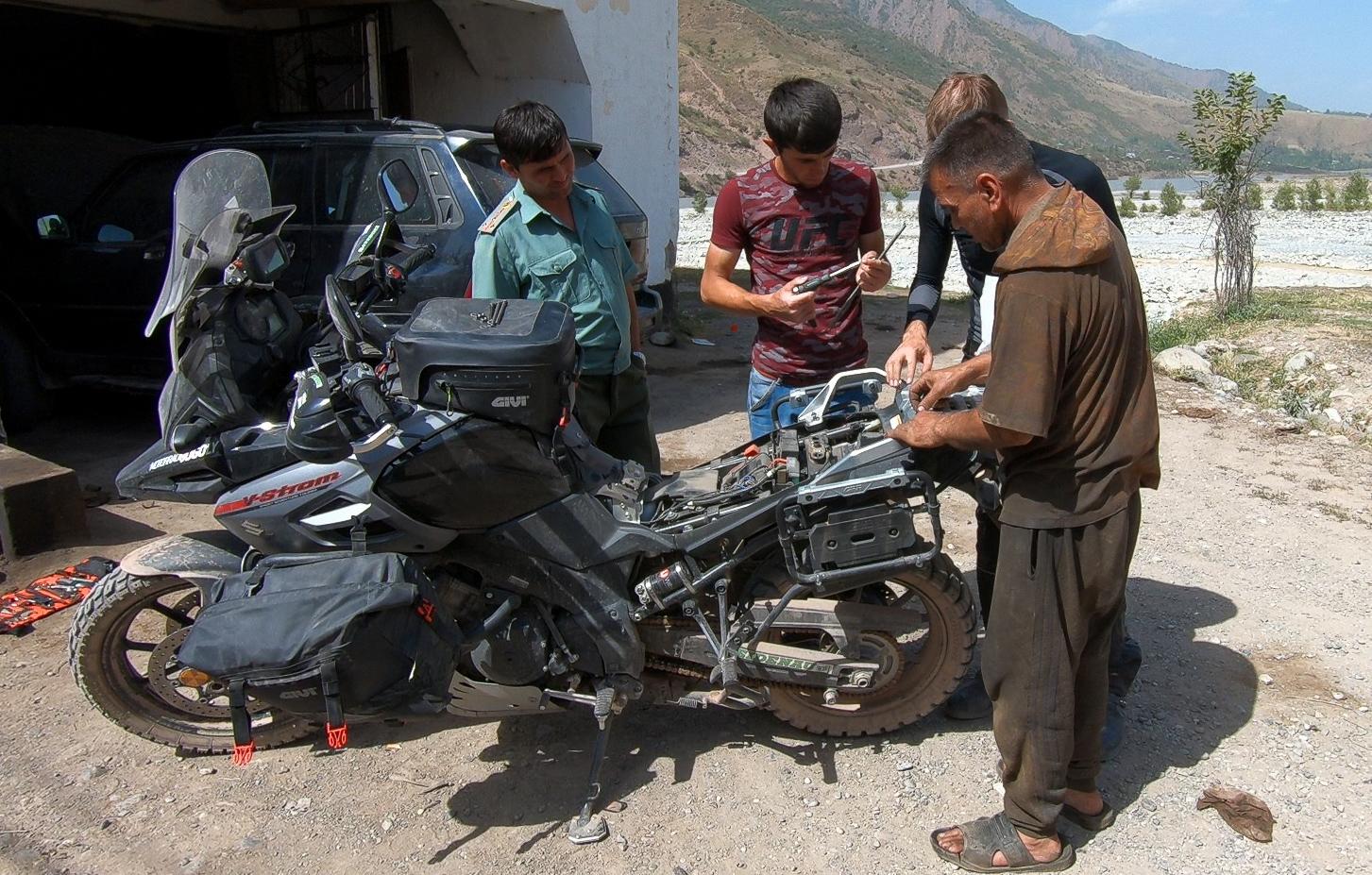
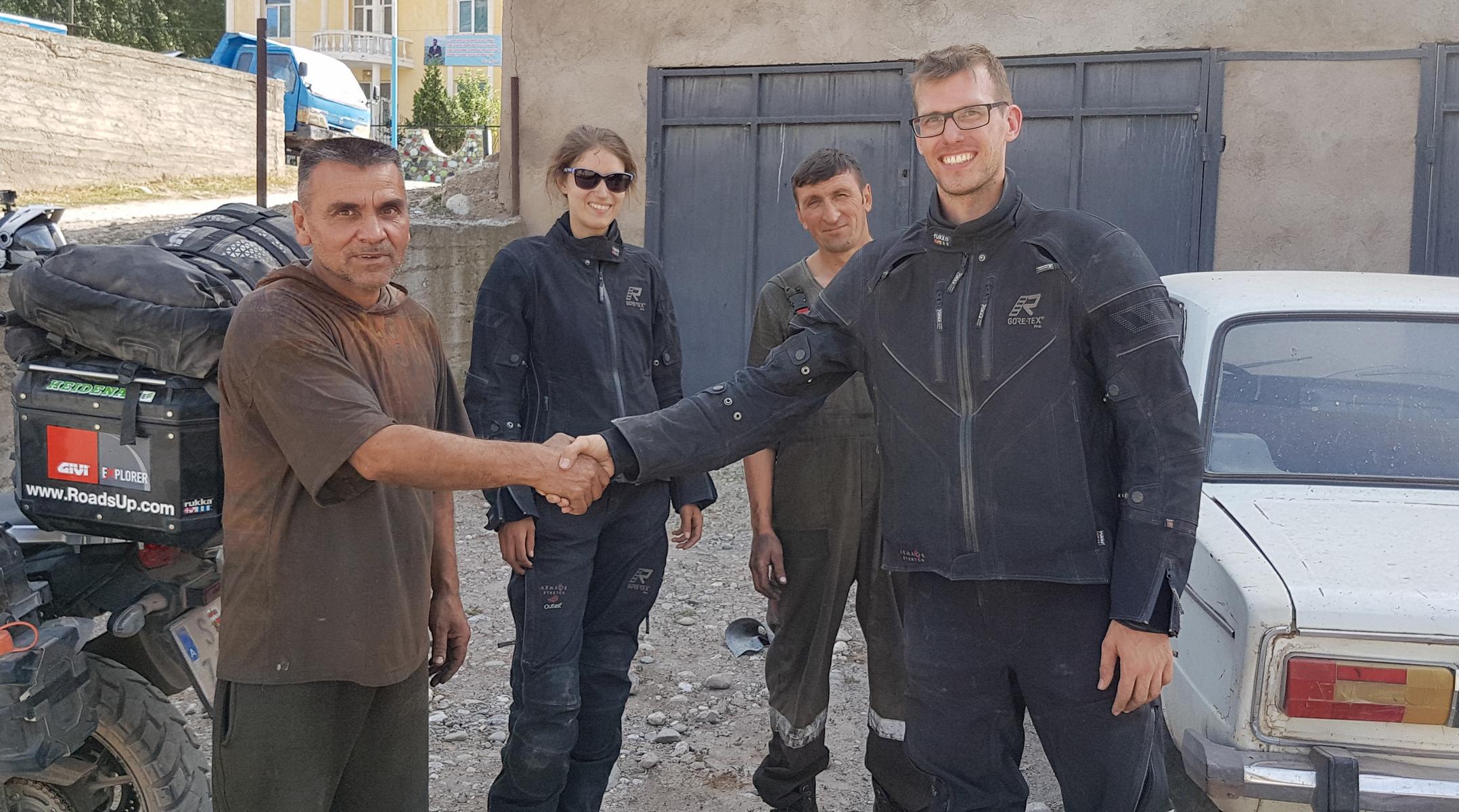
Due to the unexpected delay we had to hurry up in order to reach Qal’ai Khumb at daytime. About one hour before reaching our destination, we spotted two other travel motorcycles parking next to the road. They were desperately trying to change a tire. We helped out as much as we could by letting them use our air pump and providing a bottle of drinking water.
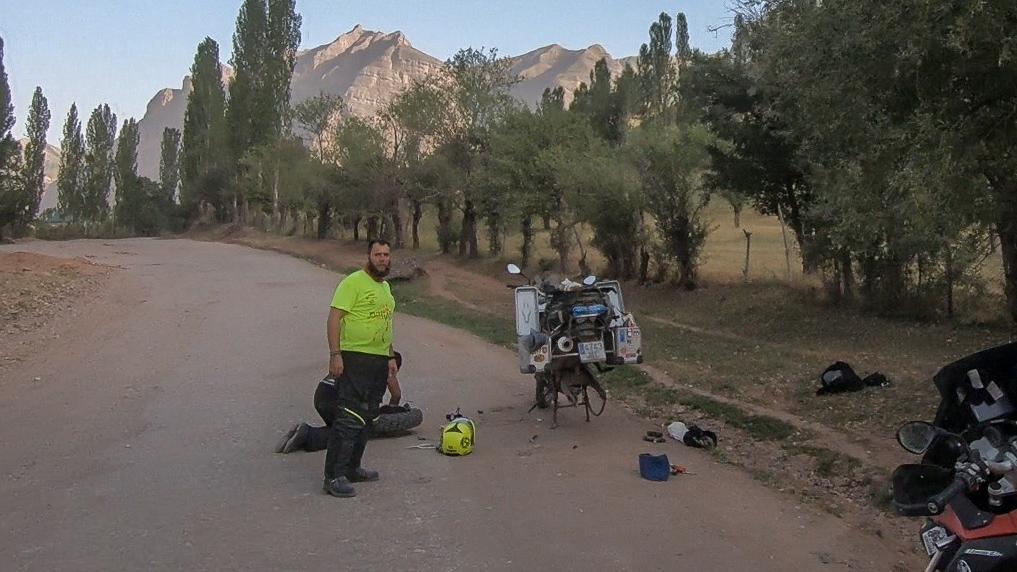
It got dark soon afterwards. Riding in the daylight was challenging but in the darkness it was even harder. One last time we had to stop at a military checkpoint for registration.

Upon arriving in Qal’ai Khumb we could hardly believe our eyes when we saw the two motorbikers we have met before arriving. Together we found a nice and cheap place and were happy to enjoy a good dinner with Davide from Italy and his friend from Spain.
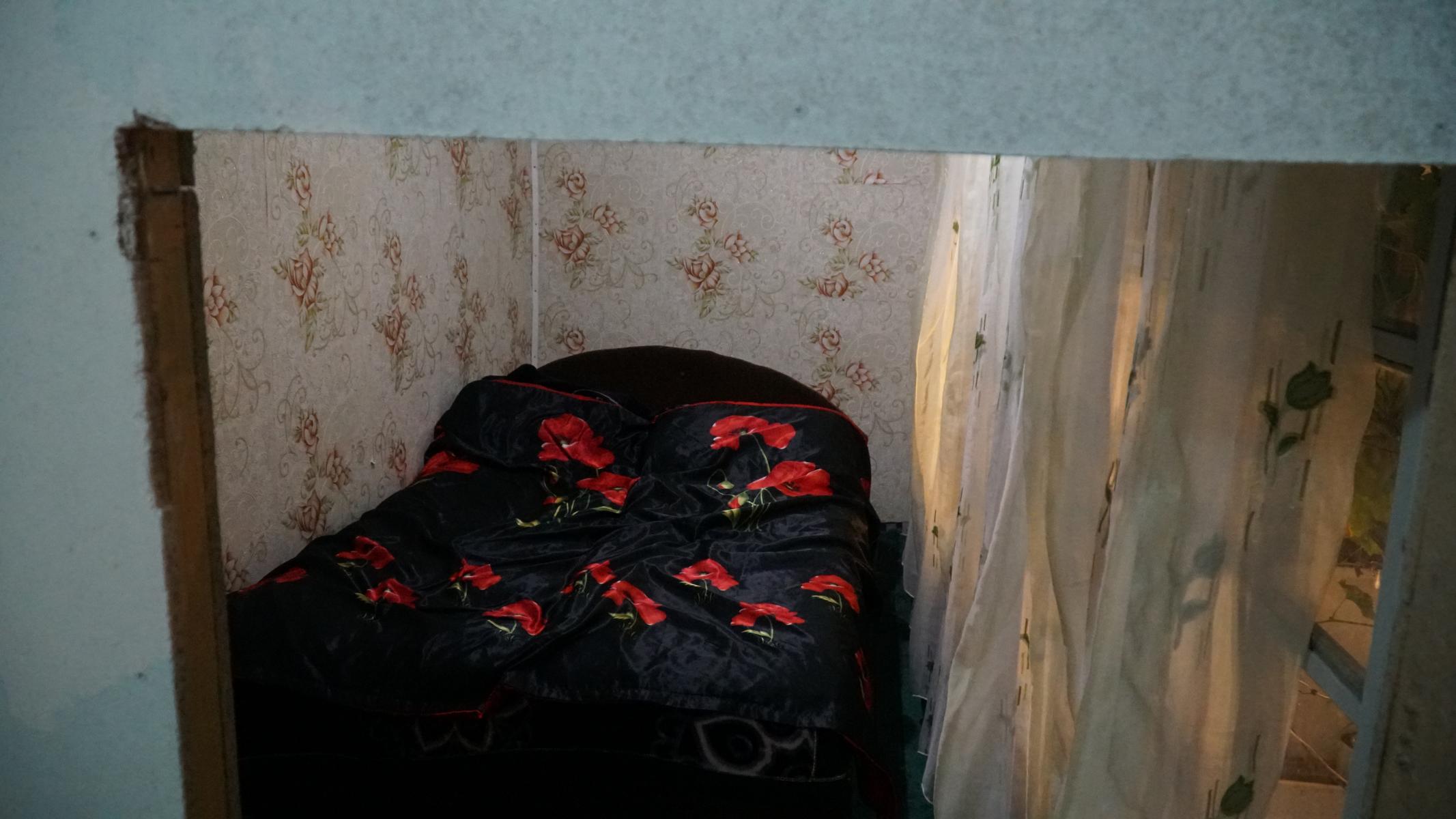
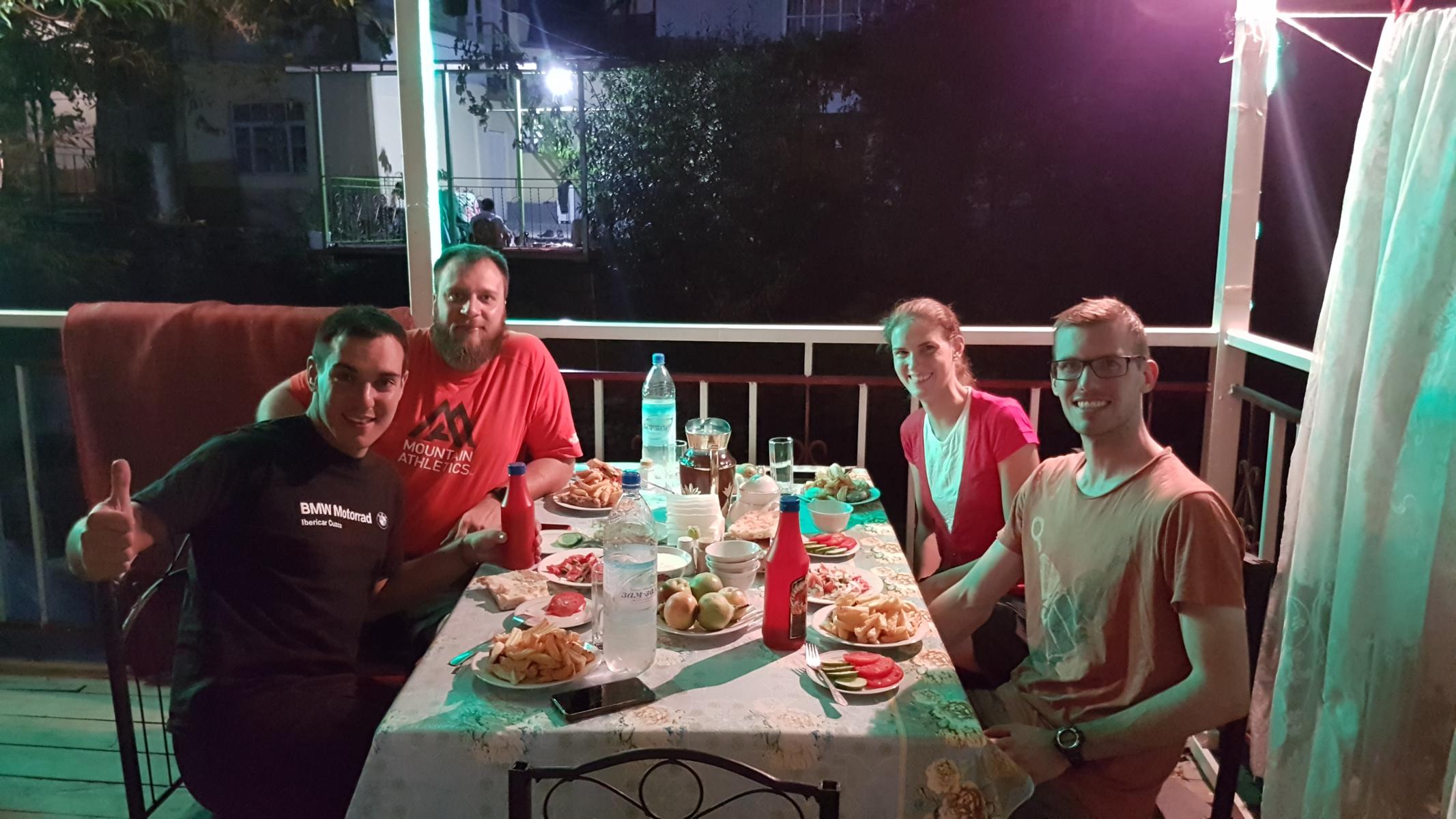
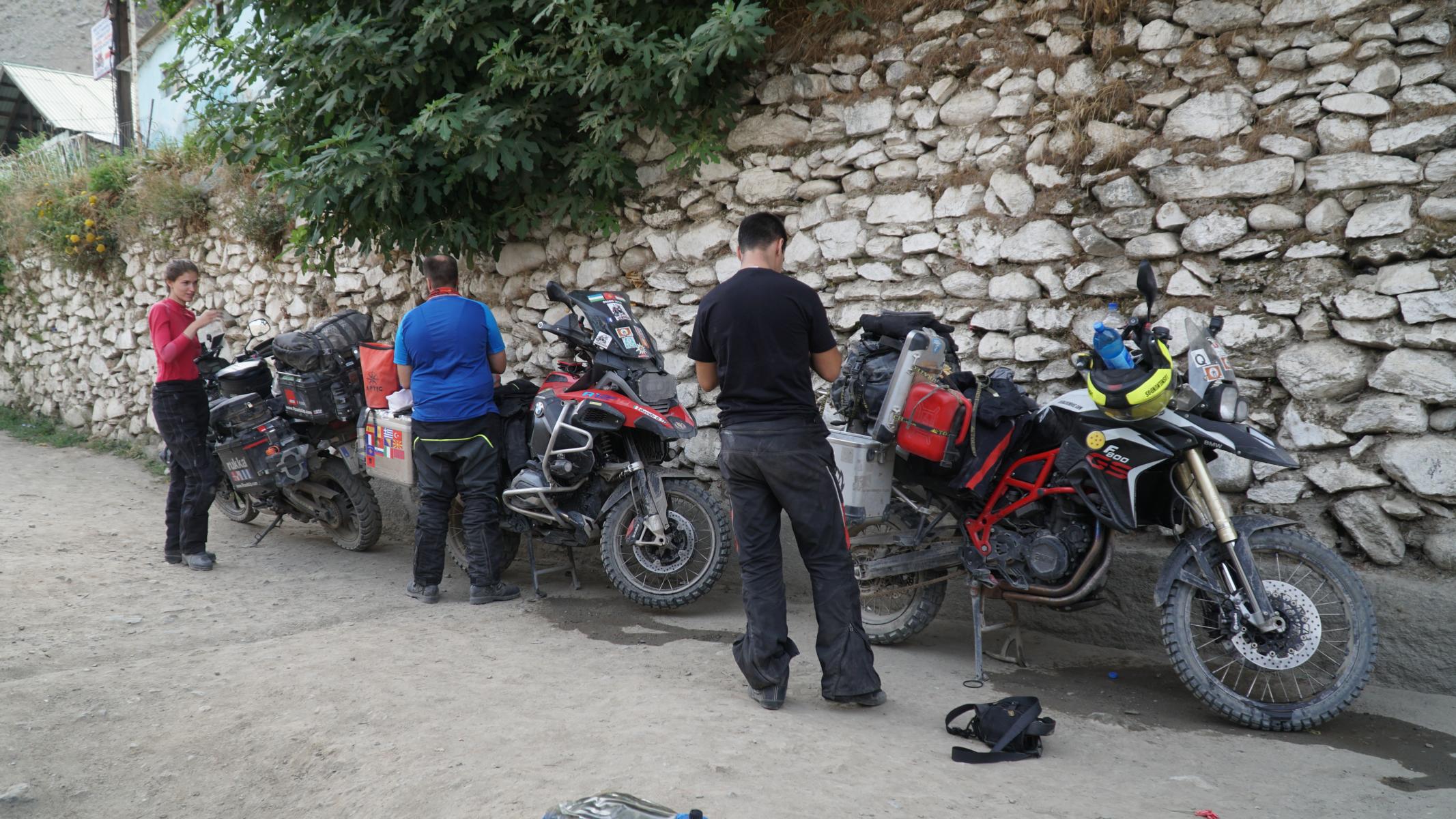
The breakdown
As we started at 8:00 am in the morning we didn’t know how eventful our day would turn out to be. The 240 kilometers between Qal’ai Khumb and Khorugh would be one of the hardest parts of the Pamir Highway for us. The three bikes with the four of us rode along the river Panj on the unpaved road along a spectacular mountainous scenery with Afghanistan within eyeshot. Suddenly our bike started to feel different and Peter stopped to take a closer look. It turned out to be not a puncture but a bent rim at the rear tire. As it was impossible to move on with a flat tire, we decided to move the bike back to Dushanbe. Meanwhile many kids were standing around fascinated by the three big motorbikes.
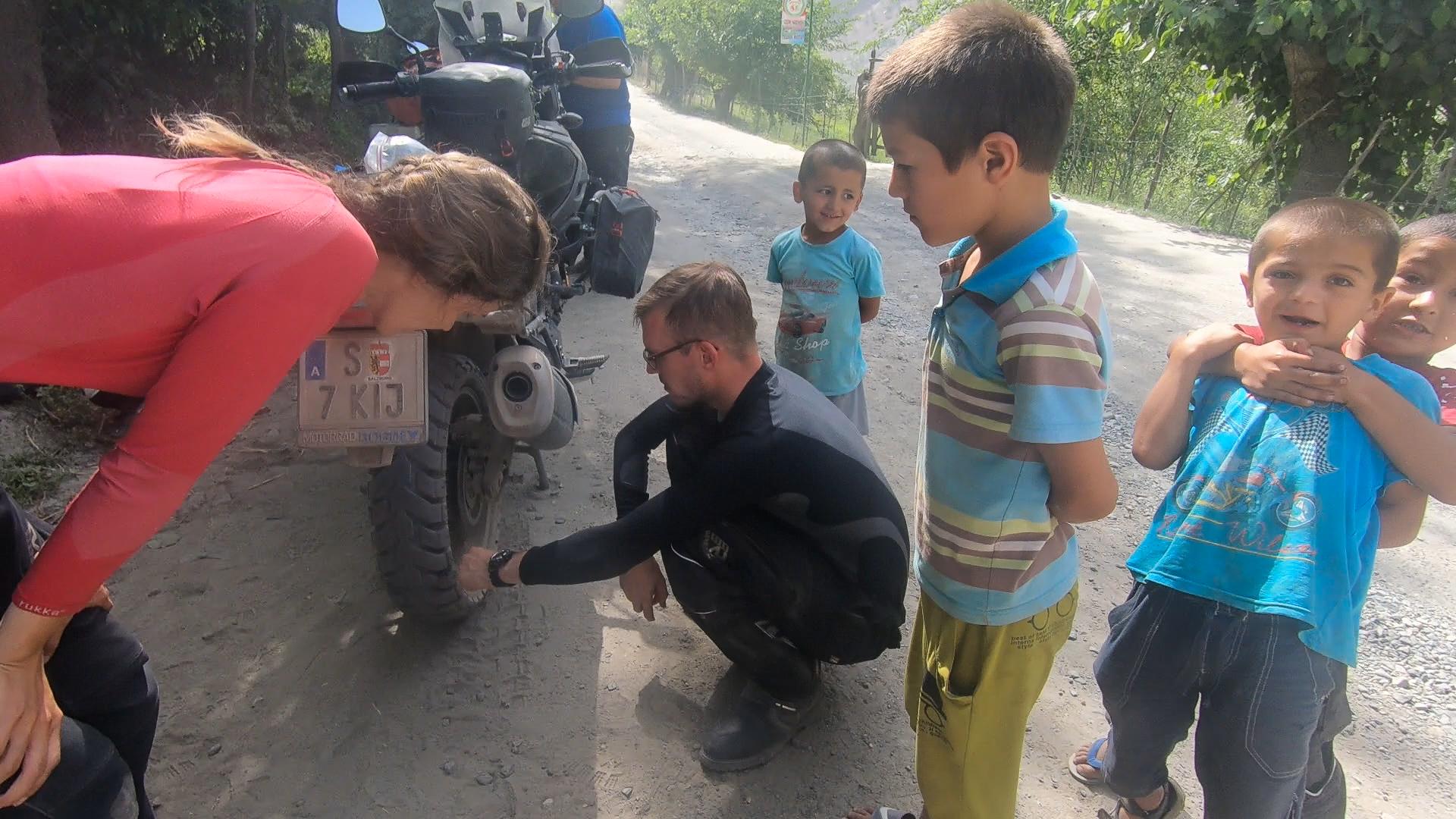
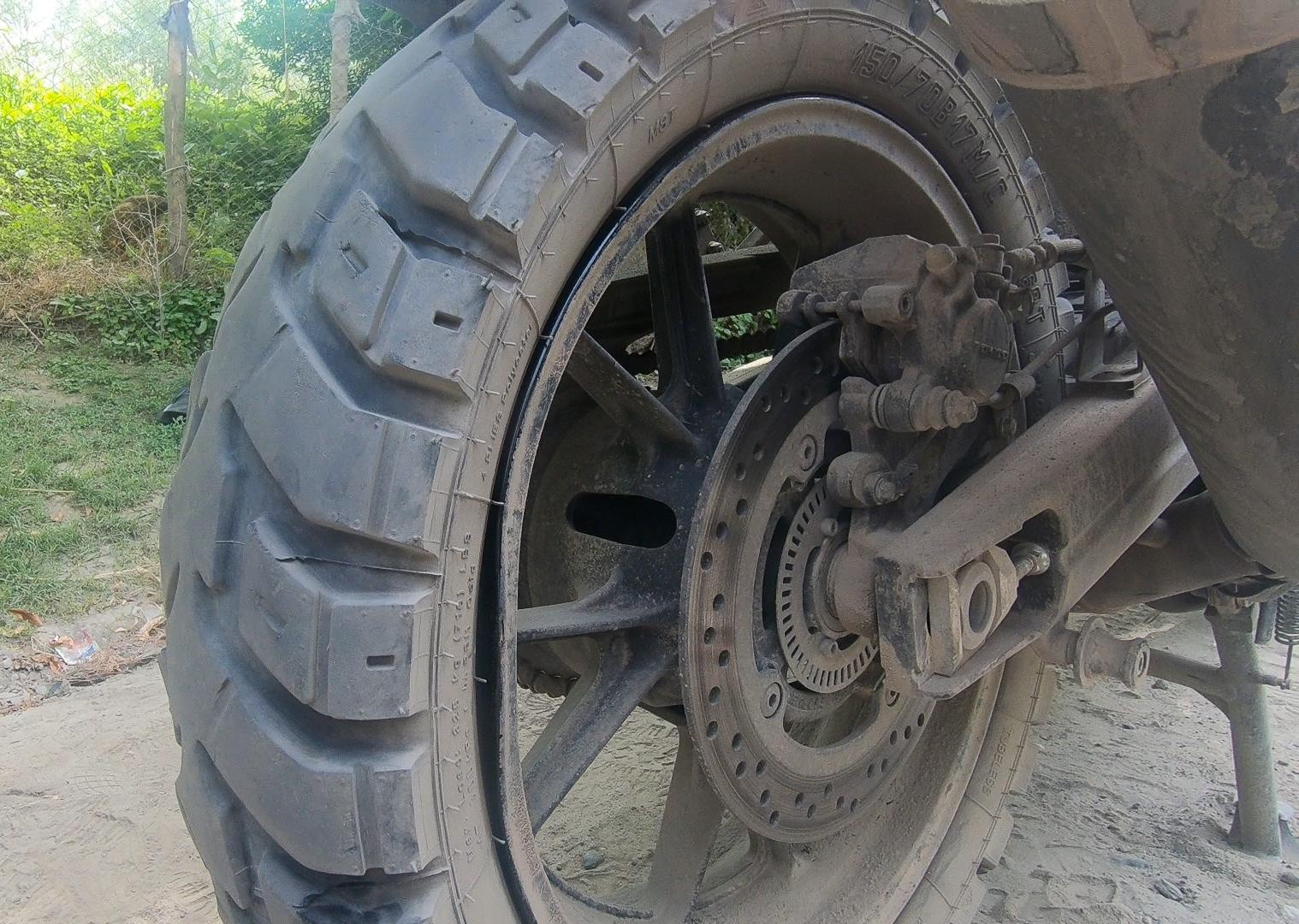
A group of bicycle riders stopped and asked if they could help us. We talked a bit and the Dutch guy called René even gave us his number if we needed any help or anything else. We have always admired the bicycle riders. Riding on the Pamir Highway at altitudes of more than 4.000 meters must be really hard.
After a while a small truck came by and we waved for it to stop. Thankfully the family travelling with an empty cow transporter agreed to take us with them towards Dushanbe. But how to get a fully packed big and heavy bike into a truck without ramp? We quickly found a solution. The vehicle parked with the back to the wall so we could use the stones as a ramp. Inside there was straw.
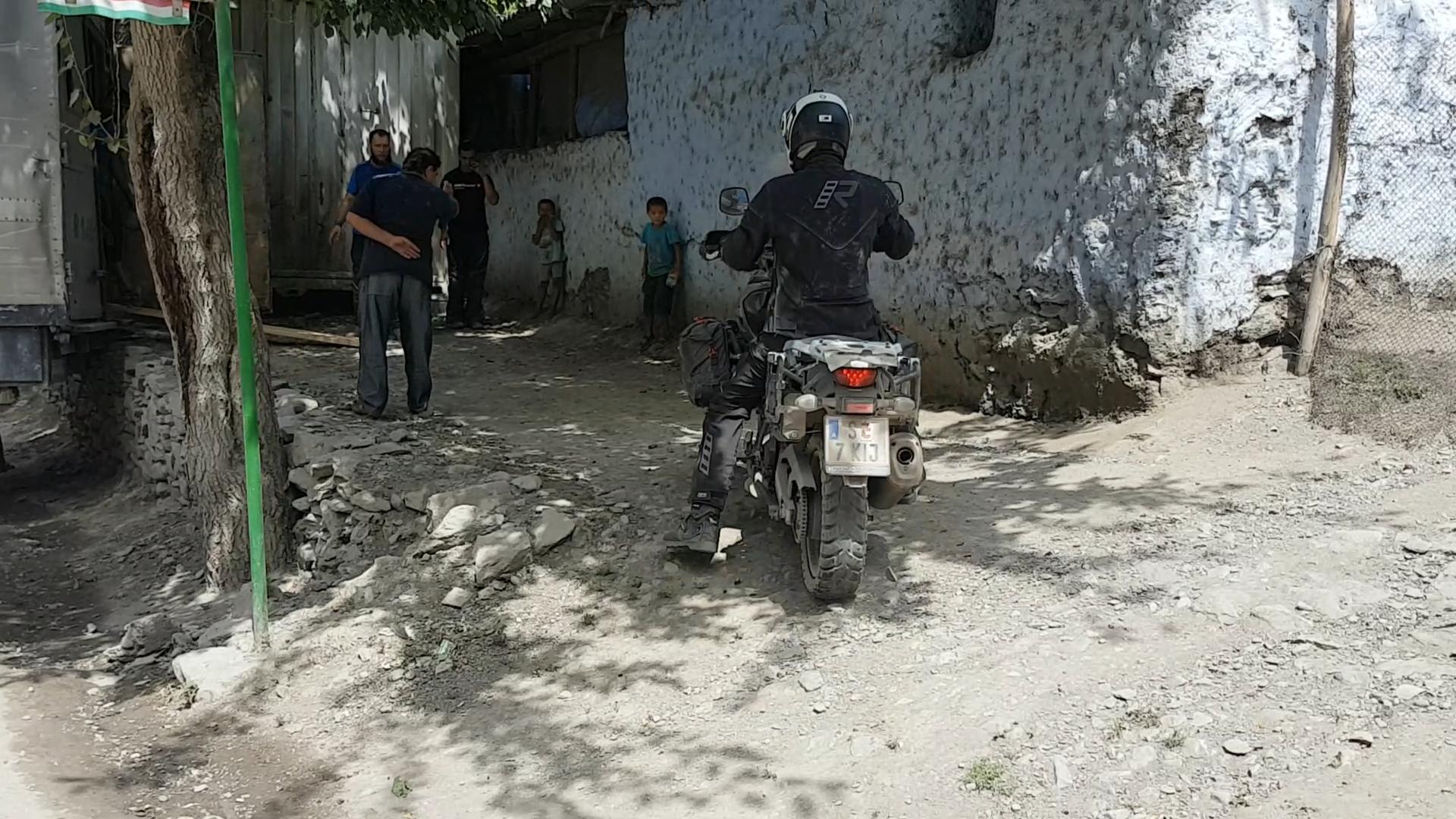
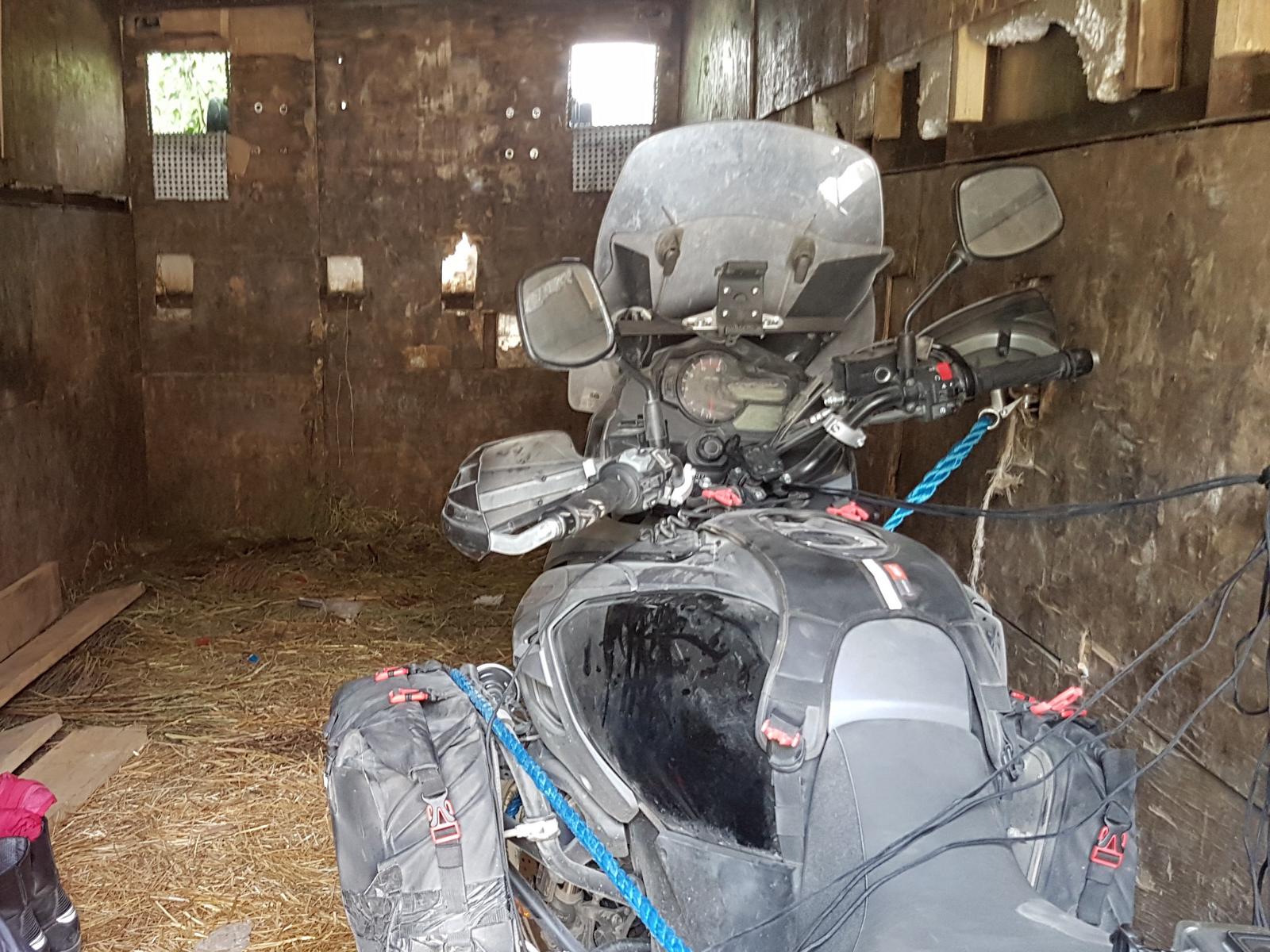
Inside the truck house there were already four people on three seats, so they moved closer to make space for us – the driver, the two of us and the mother on the three seats in the front and behind two other grown up siblings.
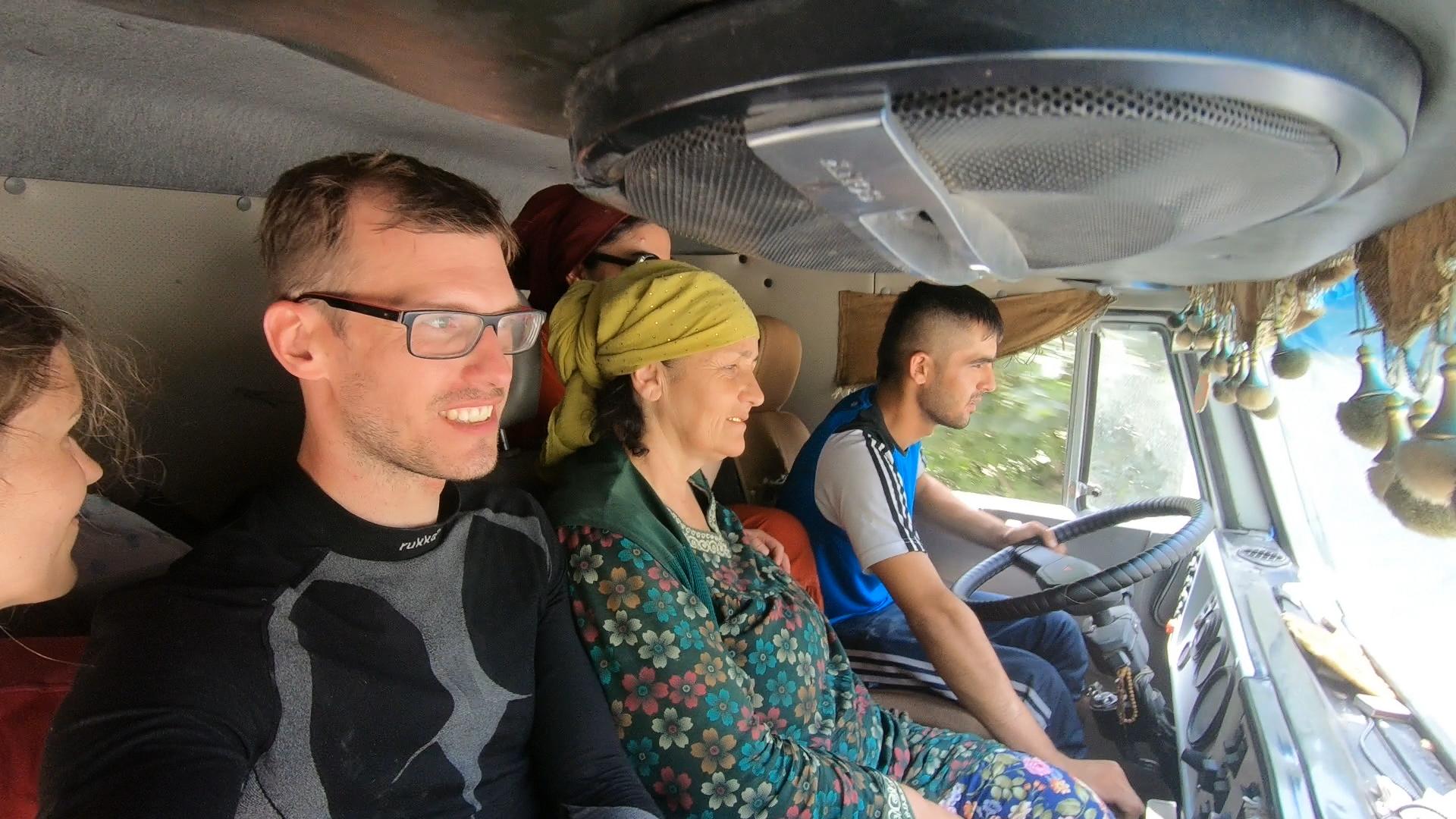
We learned that they were a mother with three of her seven children. As we didn’t really speak any Russian the conversations turned out to be quite difficult. The mother looked at the two of us and pointed first at her wedding ring then at the two of us. After Peter shook his head she wanted to know if we were siblings or related which we also declined. From that moment on she didn`t speak much to us and looked angry in our direction from time to time. The old Russian vehicle was decorated inside with a curtain to keep out the sunlight. After about two hours we stopped to eat in a restaurant. There we met the group of cyclists again.
The mother was quite angry at the waiter because the family got some soup whereas we got a different meal consisting of fried eggs with sausages. After the meal the family bought three very small chickens in a carton.
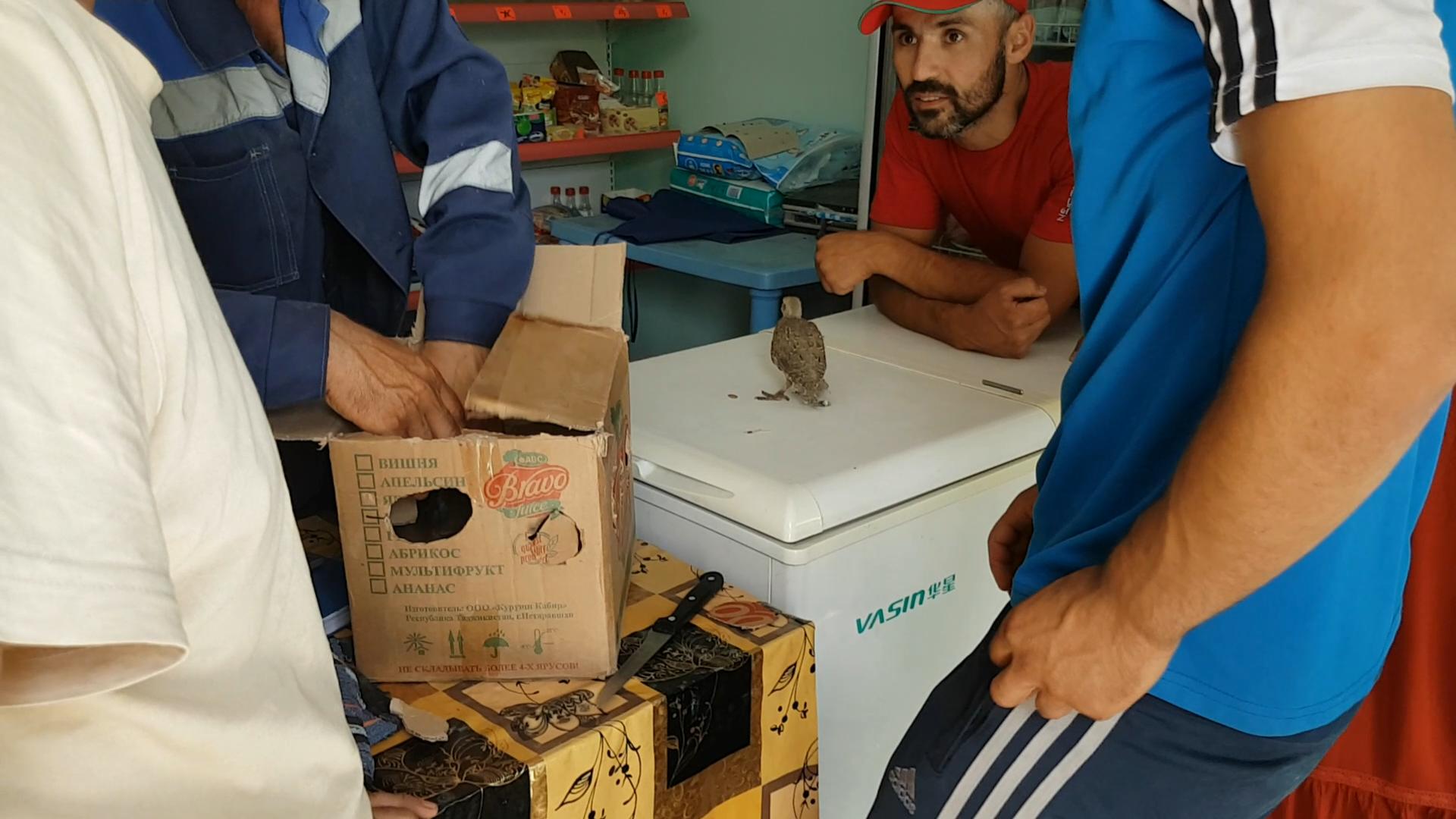
On the way we passed several police controls. Before showing their passports the driver always put some money inside the documents. A short time ago also tourists had to pay bribes to corrupt officers. As 2018 was supposed to be the year of tourism, the government punished everyone who tried to get money from tourists. The result was that only the locals still had to pay bribes. Hours passed as we were shaken up by the bumpy road. Every now and then we heard the small chickens screaming in the crowded cabin with 6 people on 3 seats. On the next stop two siblings got out of the car and jumped up and down and tried to catch something with their shoes. We were wondering about their behavior. When they returned to the truck, we understood. They had been catching grasshoppers to feed the small chickens in the box.
After ten hours of driving we reached Kulob where they planned to change their truck to a small car. Fortunately the driver organized a second truck that would bring us from Kulob to Dushanbe in the same night. The second truck reversed his vehicle so we could push the bike directly from one truck to the other.
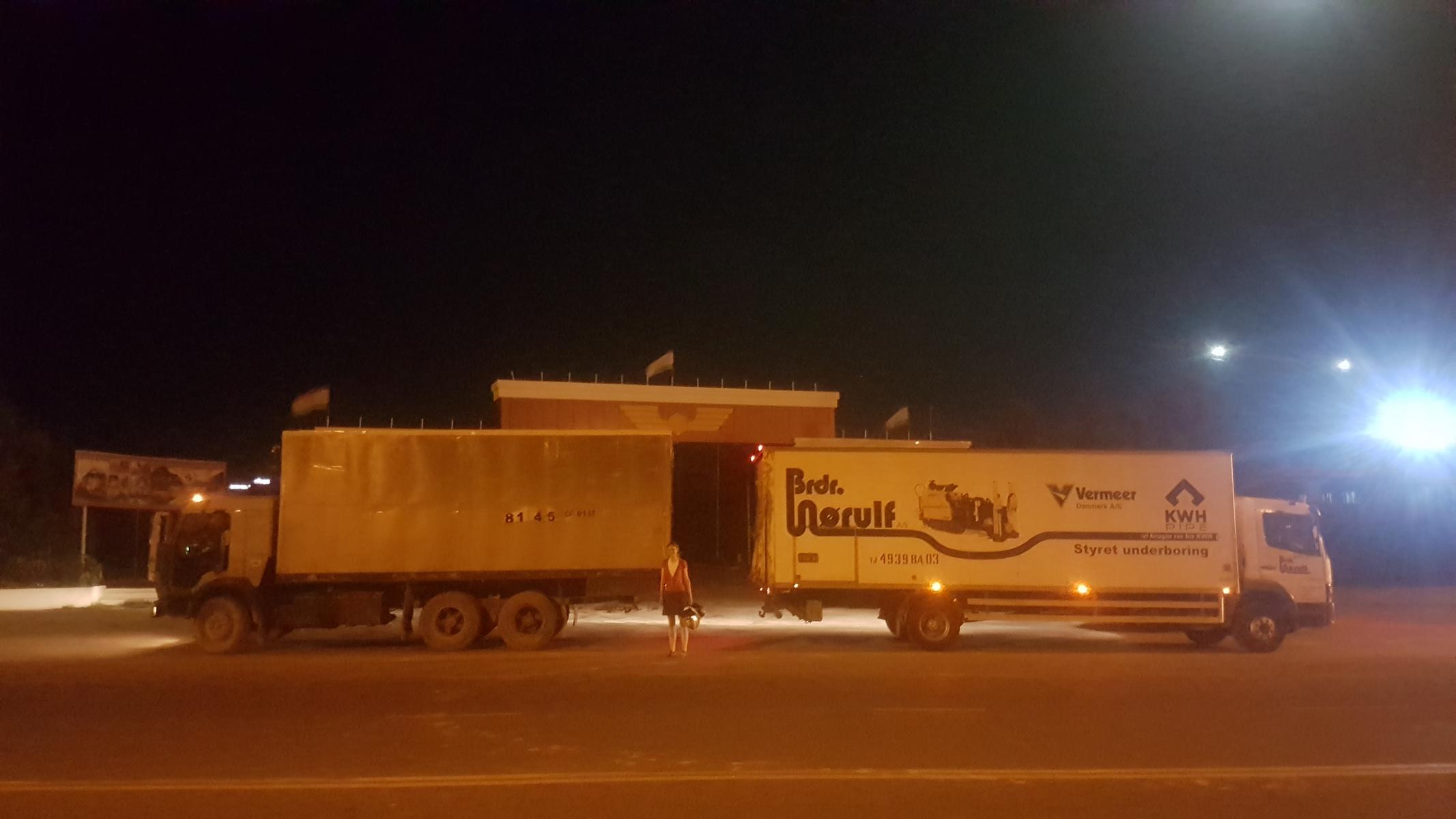
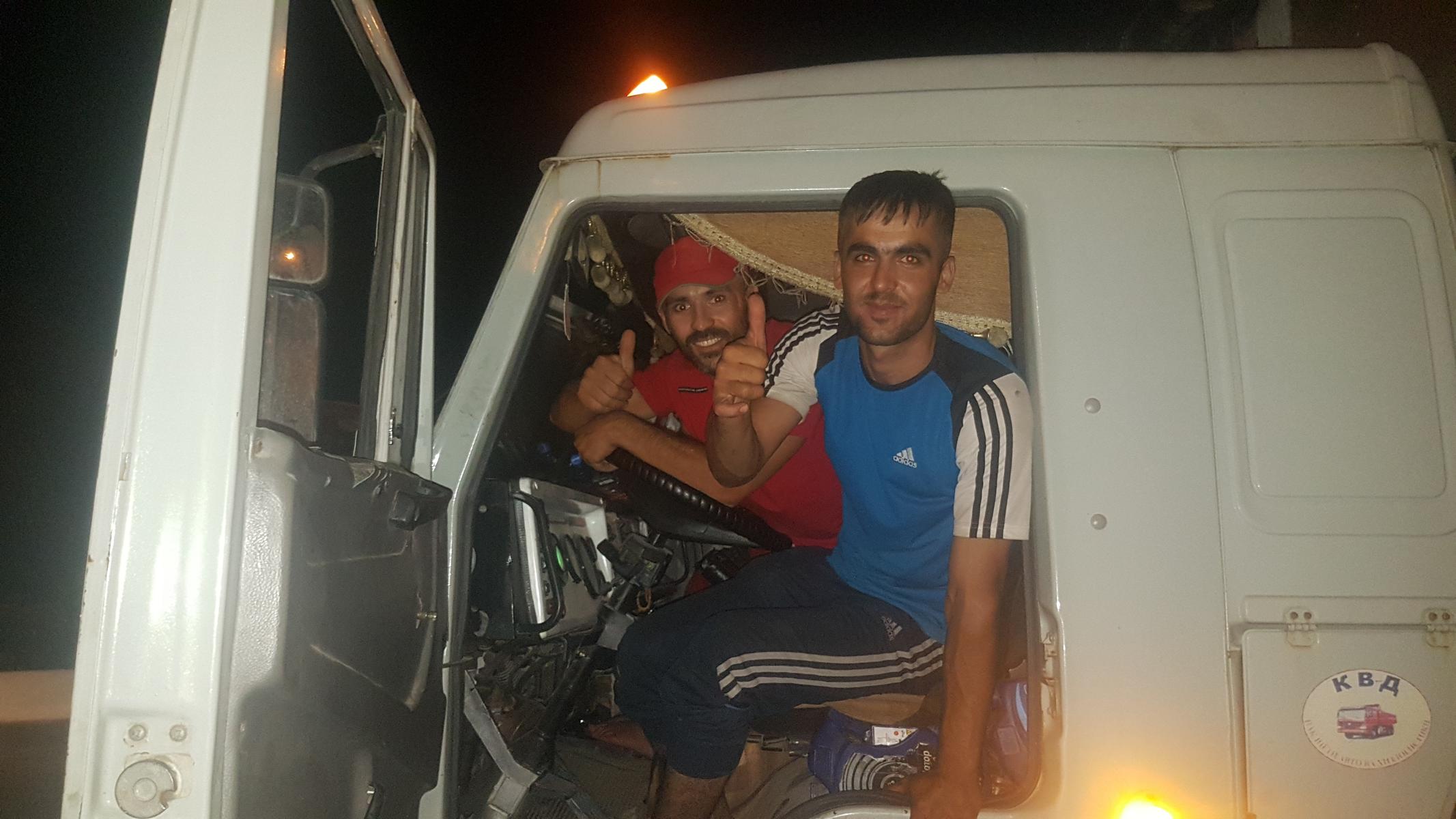
We were happy how everything turned out. Saying goodbye after giving the family 50 Dollars for their effort we got into the other truck which was much more comfortable. The last three hours to Dushanbe passed on very quickly and we reached the Bike House where we parked our bike. About five policemen helped unloading the bike and opening the closed gate of the Bike House without the owner present. Luckily they did not ask any further questions. Finally we went to our well-known Green House Hostel.
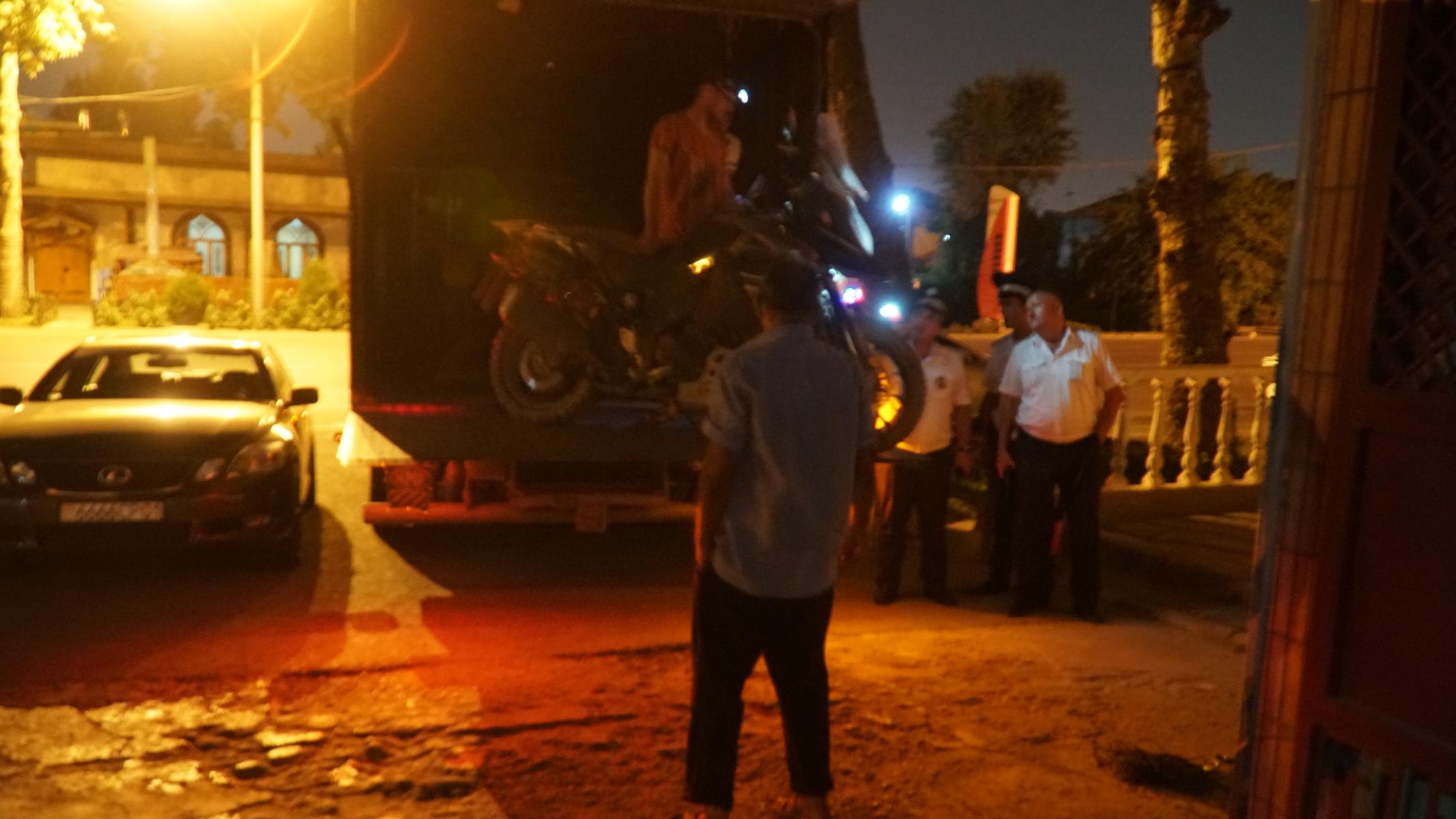
It felt like coming home when the door opened and the receptionist recognized us. Our joy faded when we learned that every room was fully booked, even the couches in the common room were occupied. By then it was 2:30 am and we were so tired that we happily accepted the small couch in the hallway of the first floor.
Back in Dushanbe
On the next day our first stop was at the Bike House Dushanbe, where Aziz heated up the rim and hammered it back in shape.
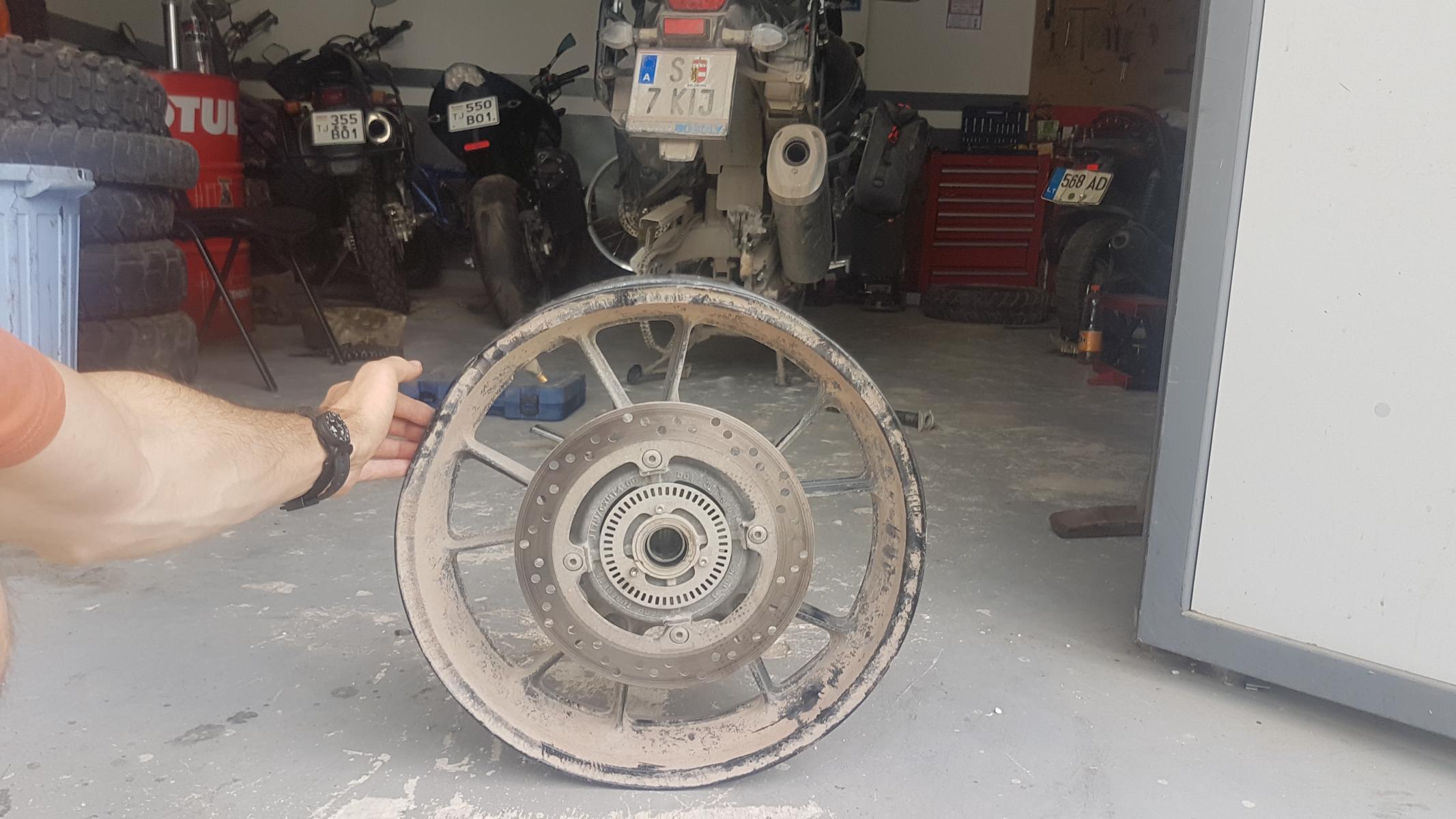
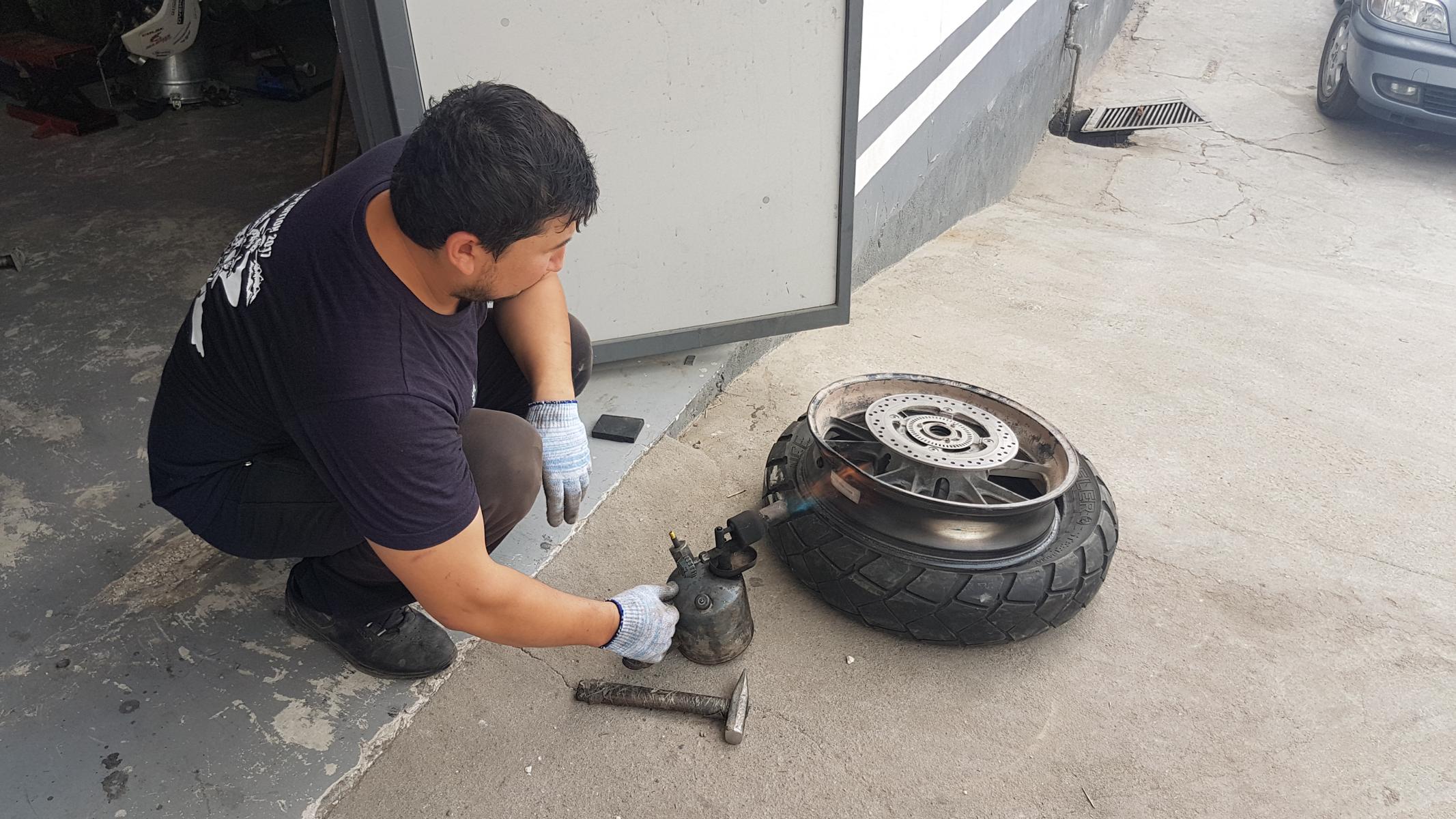

A welder also created a construction to support the heavy topcase. Due to high season the Greenhouse Hostel was fully booked so we moved to another hostel nearby. Our friend Philipe was staying there still waiting for some parts for his Africa Twin to be sent from Moscow.
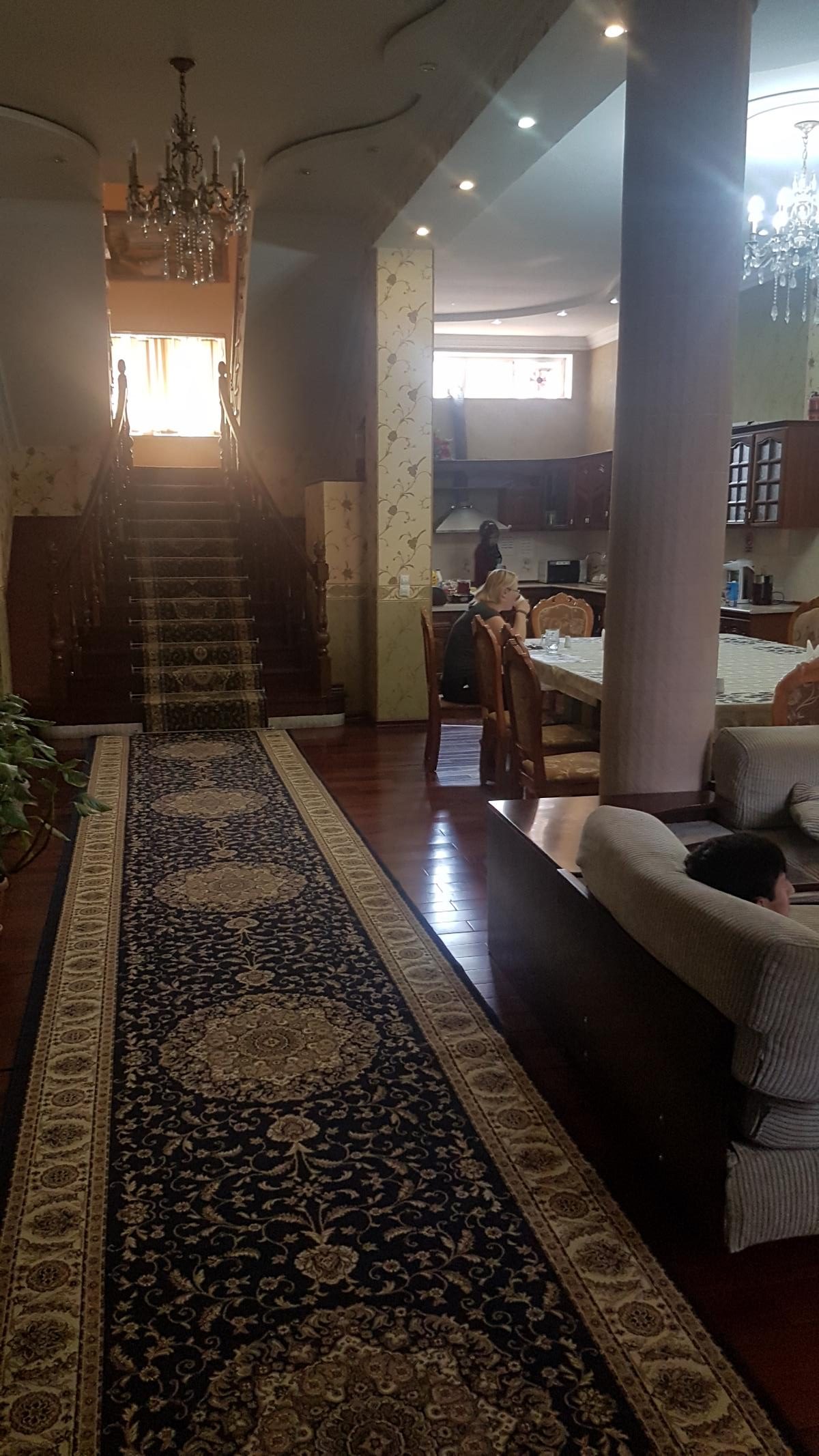
One day at breakfast we heard the terrible news of cyclists being attacked by a car and killed with a knife on the Pamir Highway. We were shocked and instantly thought about the friendly bicycle riders we met during our breakdown near Qal’ai Khumb. When we read the names in one of the news articles our fears were confirmed. They were the ones we talked to, had fun together and that helped us by carrying one of our keys for the Abus chain until we met them for a second time. Four people of this group of seven had been killed.
The next few days, while we did small repair works, everybody was shocked and discussing safety issues. First people thought that it was an accident. When we found out, that it was an attack on purpose, everybody was even more shocked.
Nevertheless we planned how to get on and started organizing our visas for the following countries. We met many other motorcycle travelers who became our friends during our stay.
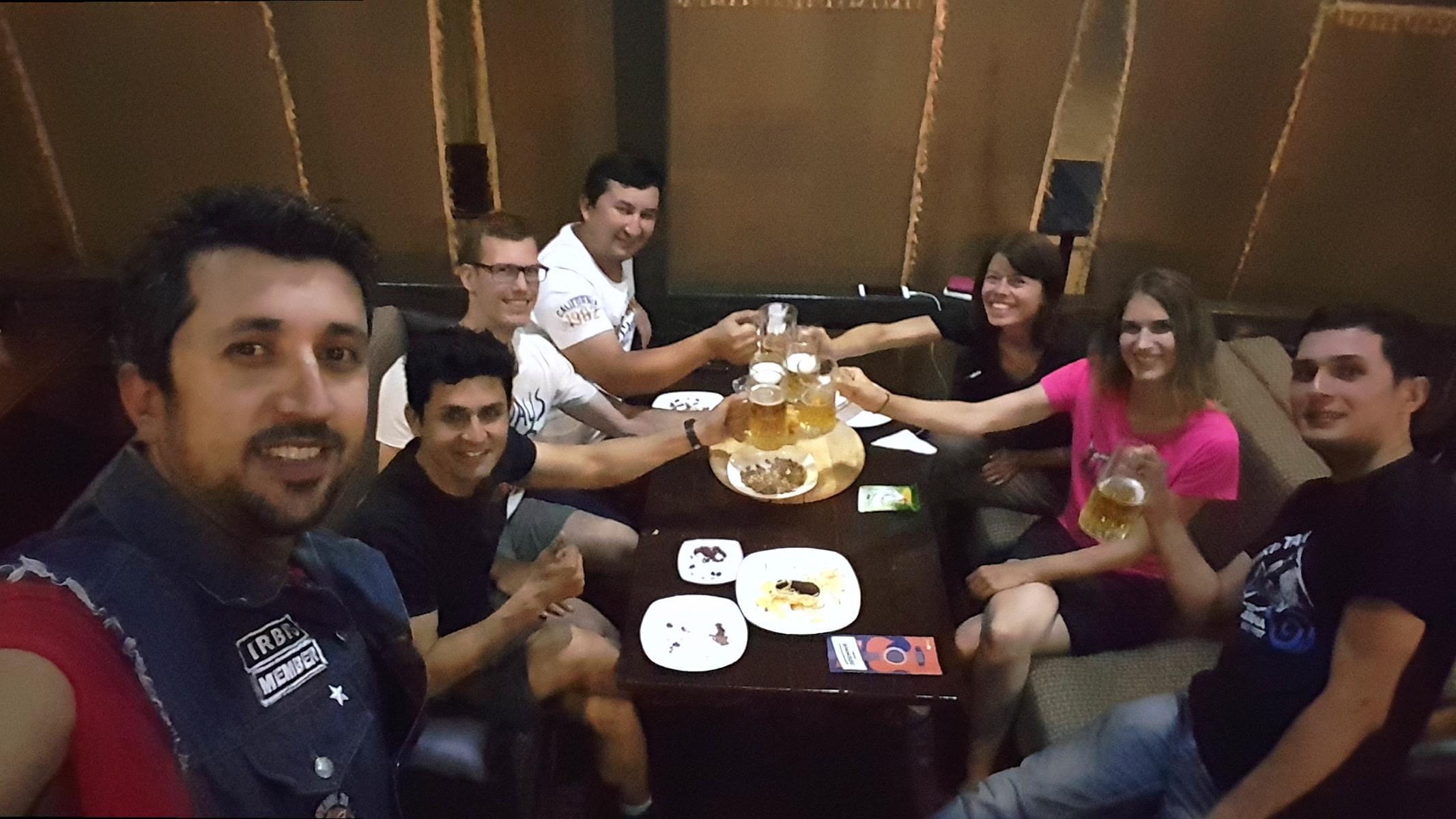
On one occasion we got up early to get a glimpse of Dushanbe. We visited the Tajik National Museum and the Rudaki Park with the second largest flagpole. It is only surpassed by the one in Jedda, Saudi Arabia. Later we even got a private guided tour through the largest Mosque of the city. The secular government is looking closely at people practicing their religion. Many unregistered mosques had to close in recent years and were converted into beauty parlors.
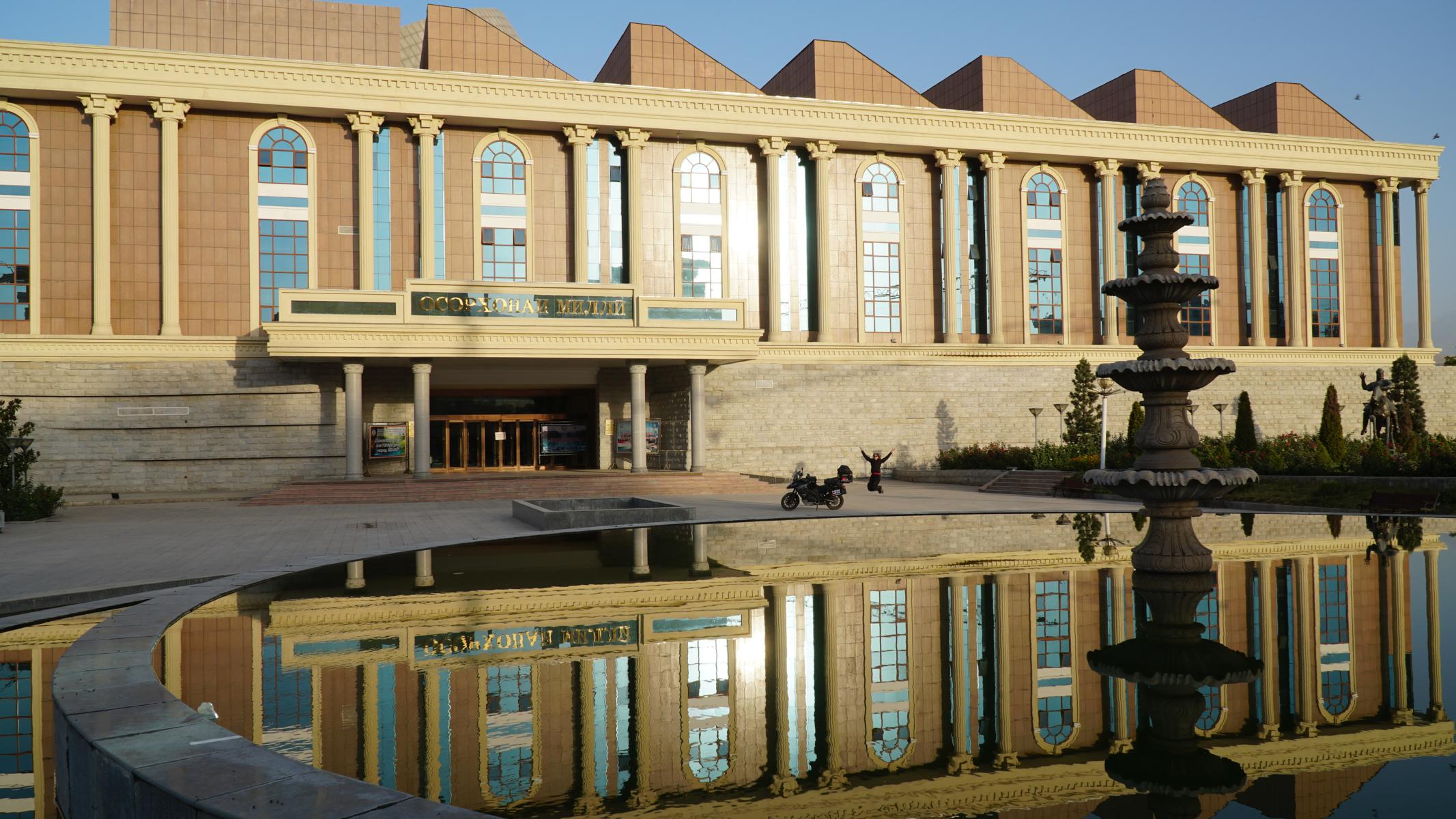
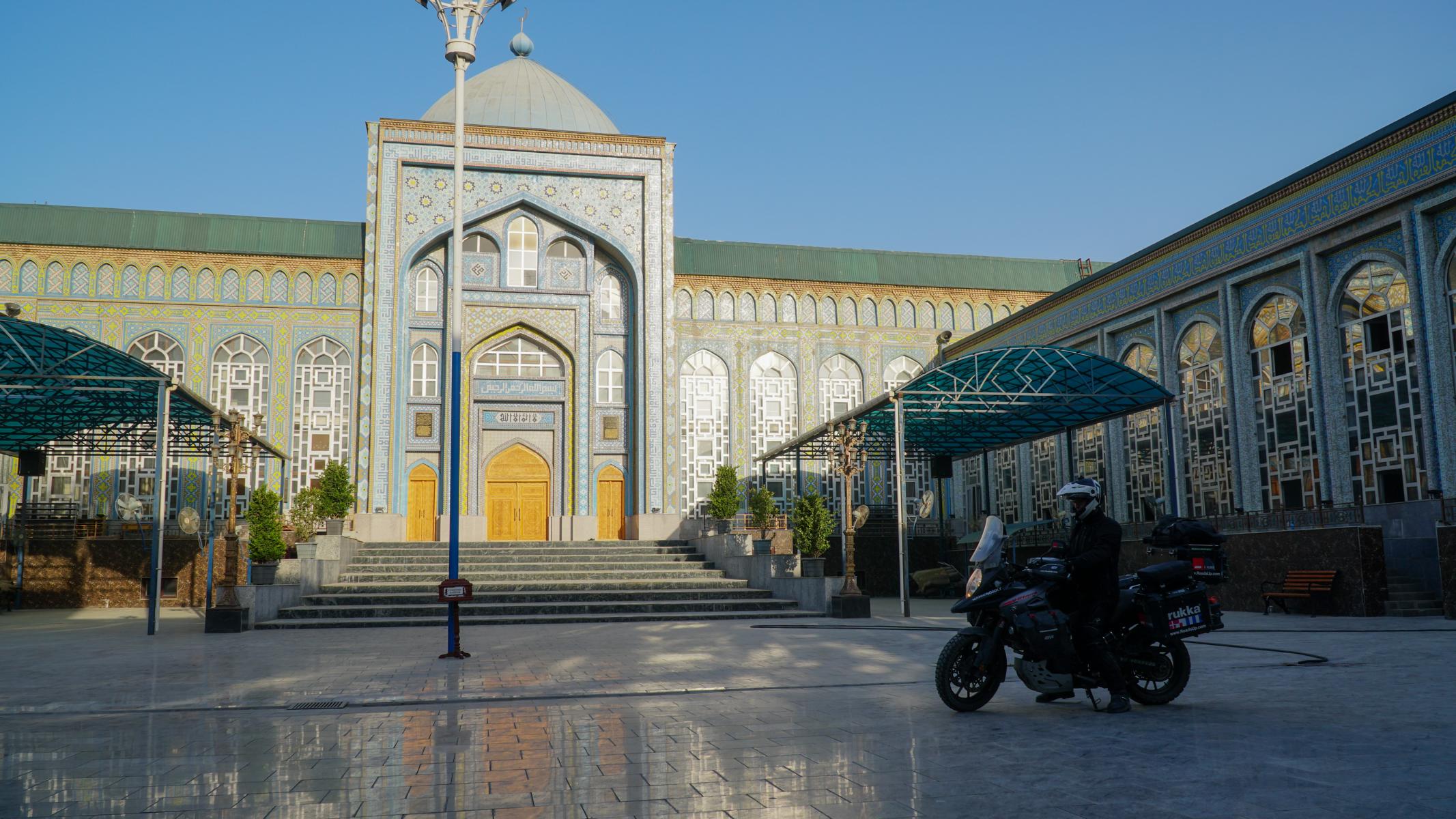

On the Pamir Highway again
After spending more than a week in Dushanbe we felt prepared for the next adventure. As we have already seen the beautiful north route we decided to take to south route this time. At the gas station we met a couple from Italy travelling on a heavy packed Moto Guzzi. Together we travelled south and found a few picturesque spots on the way.
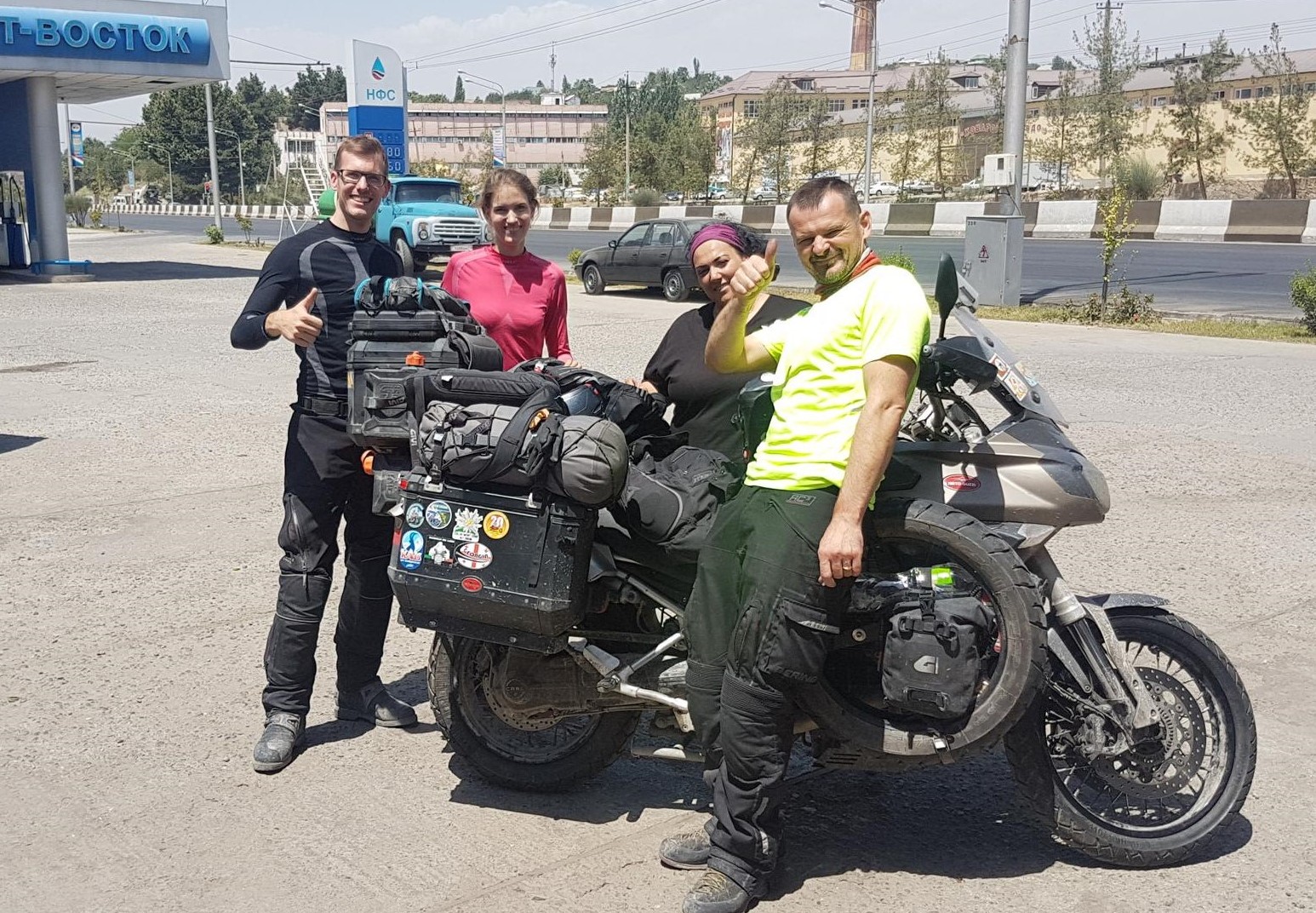
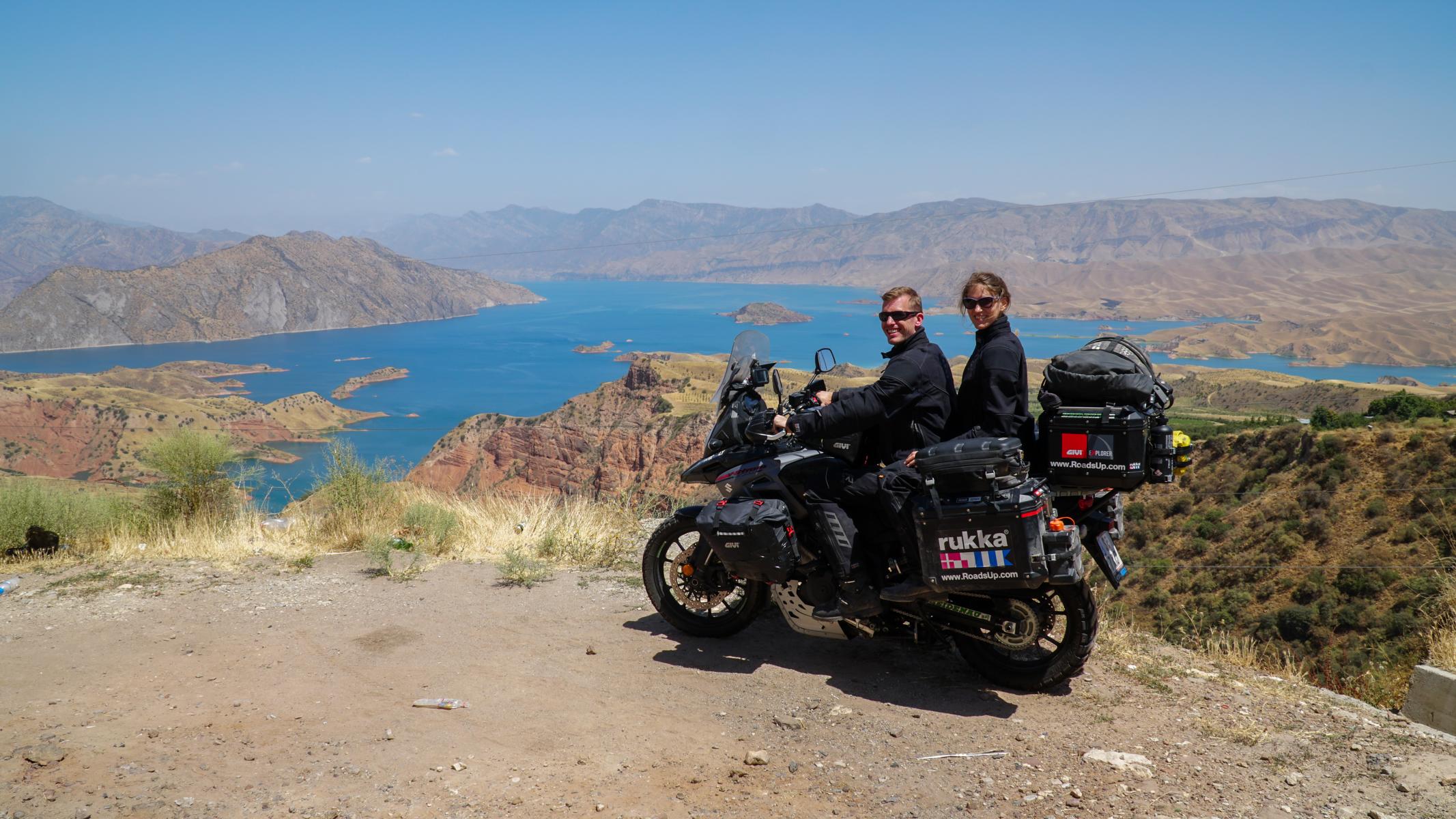
Unfortunately the others had to stop shortly after Dushanbe. The suspension of their (also) quite overloaded bike was broken. We already knew the procedure and helped them find a truck to bring the bike back to Dushanbe.
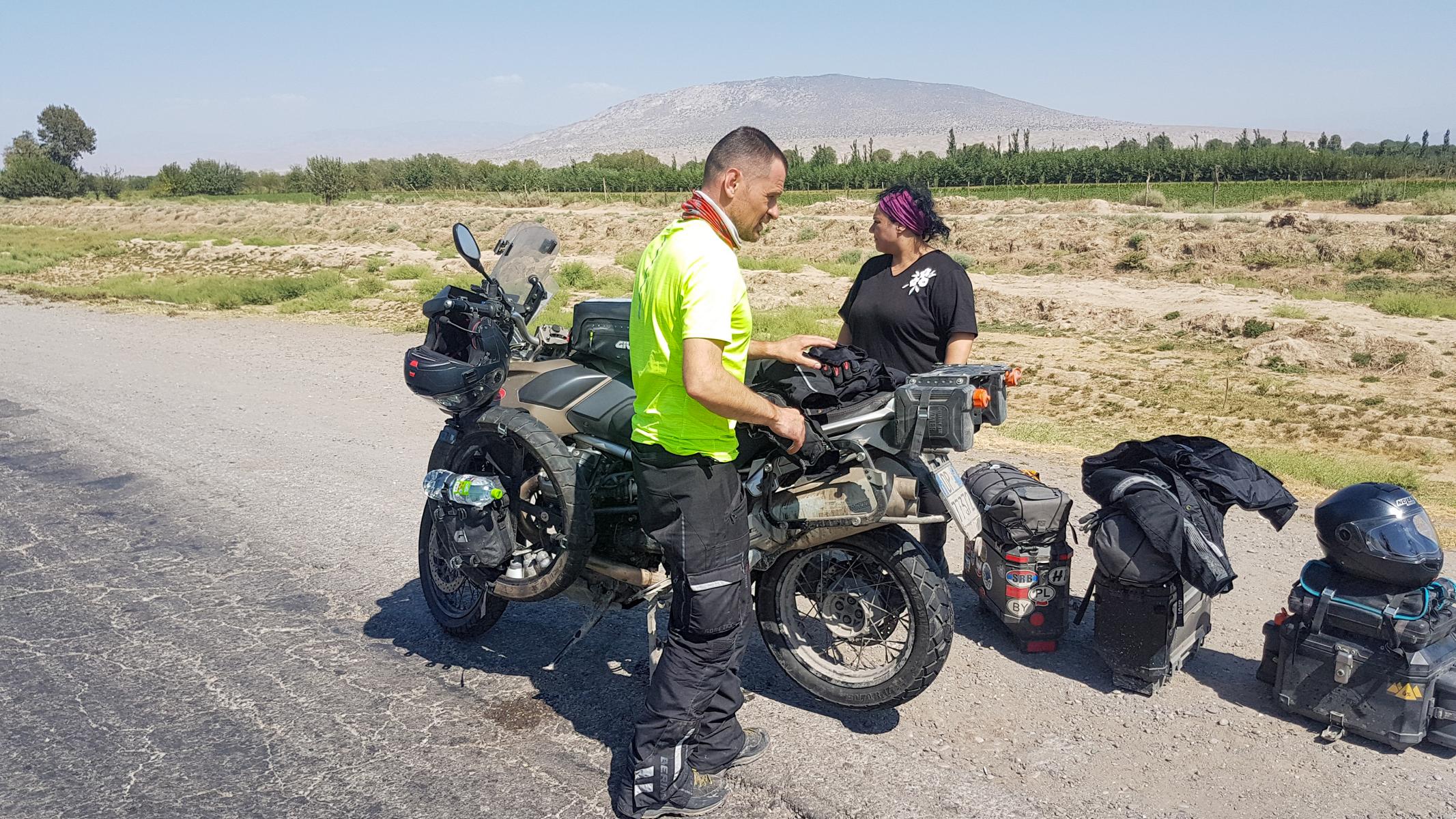
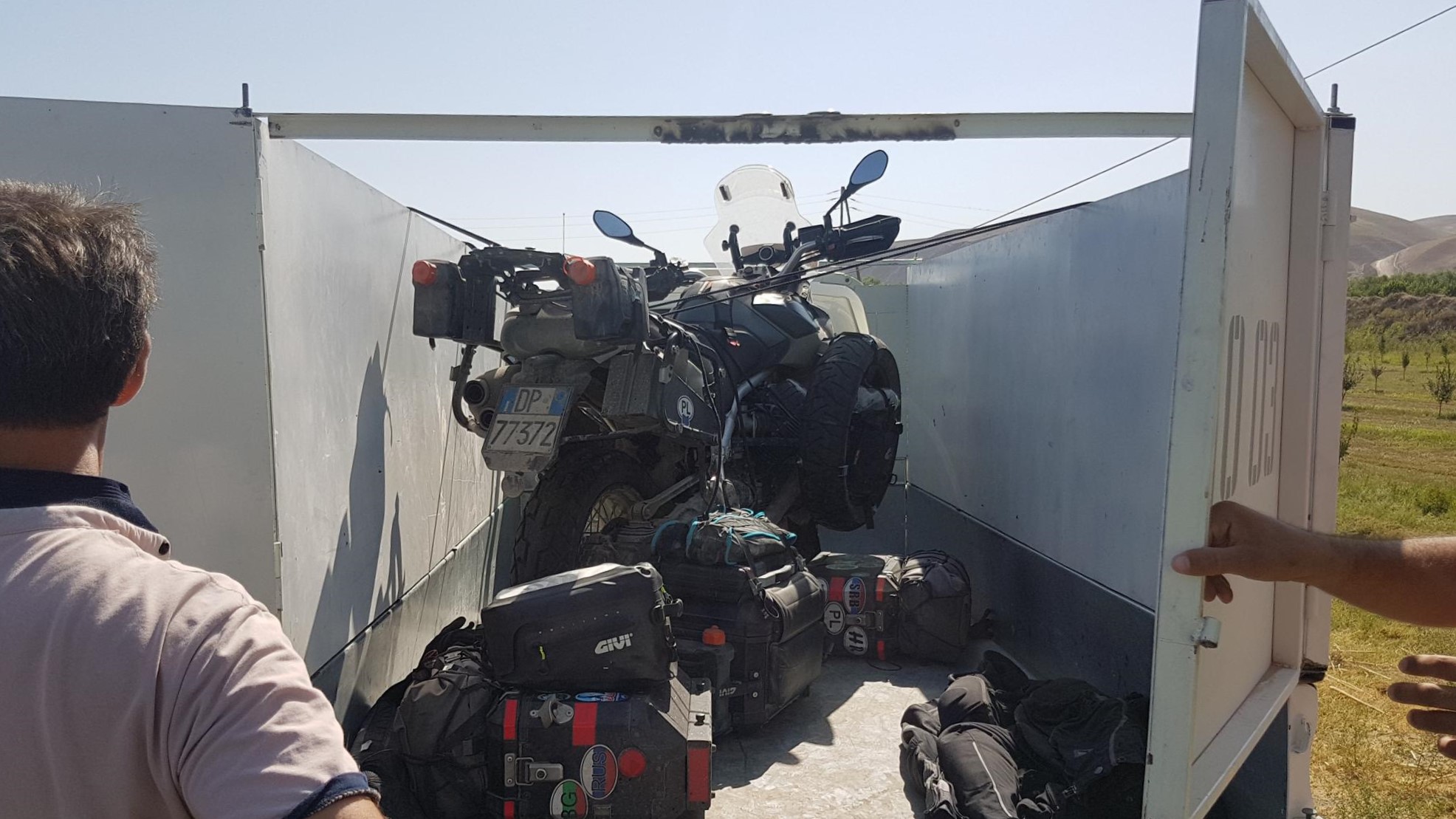

The ride to Qal’ai Khumb was uneventful. The last 100 kilometers we were riding along the river Panj, the border to Afghanistan. We had to cross many military checkpoints before we reached Qal’ai Khumb, where we slept in the same hostel again.
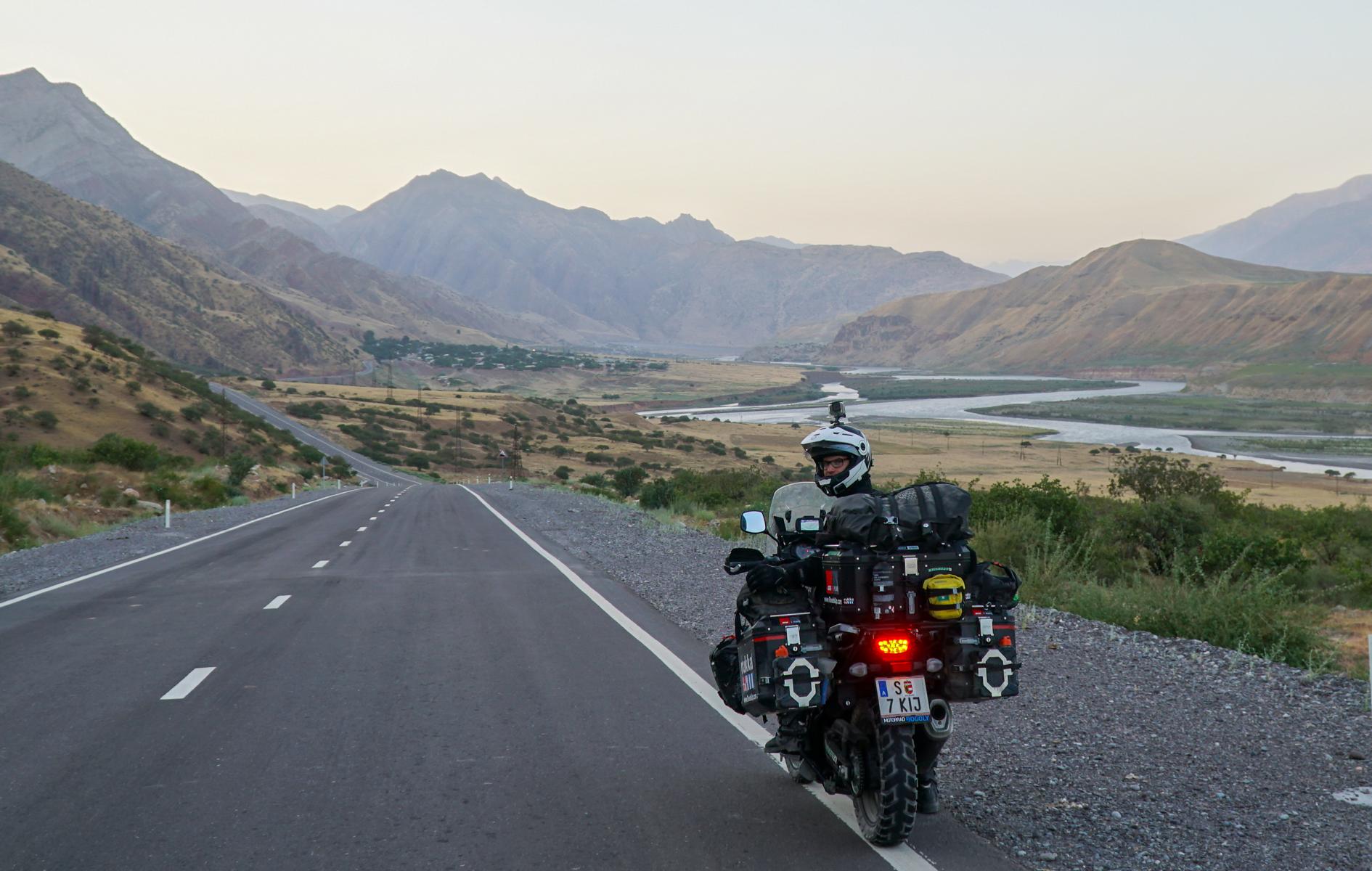
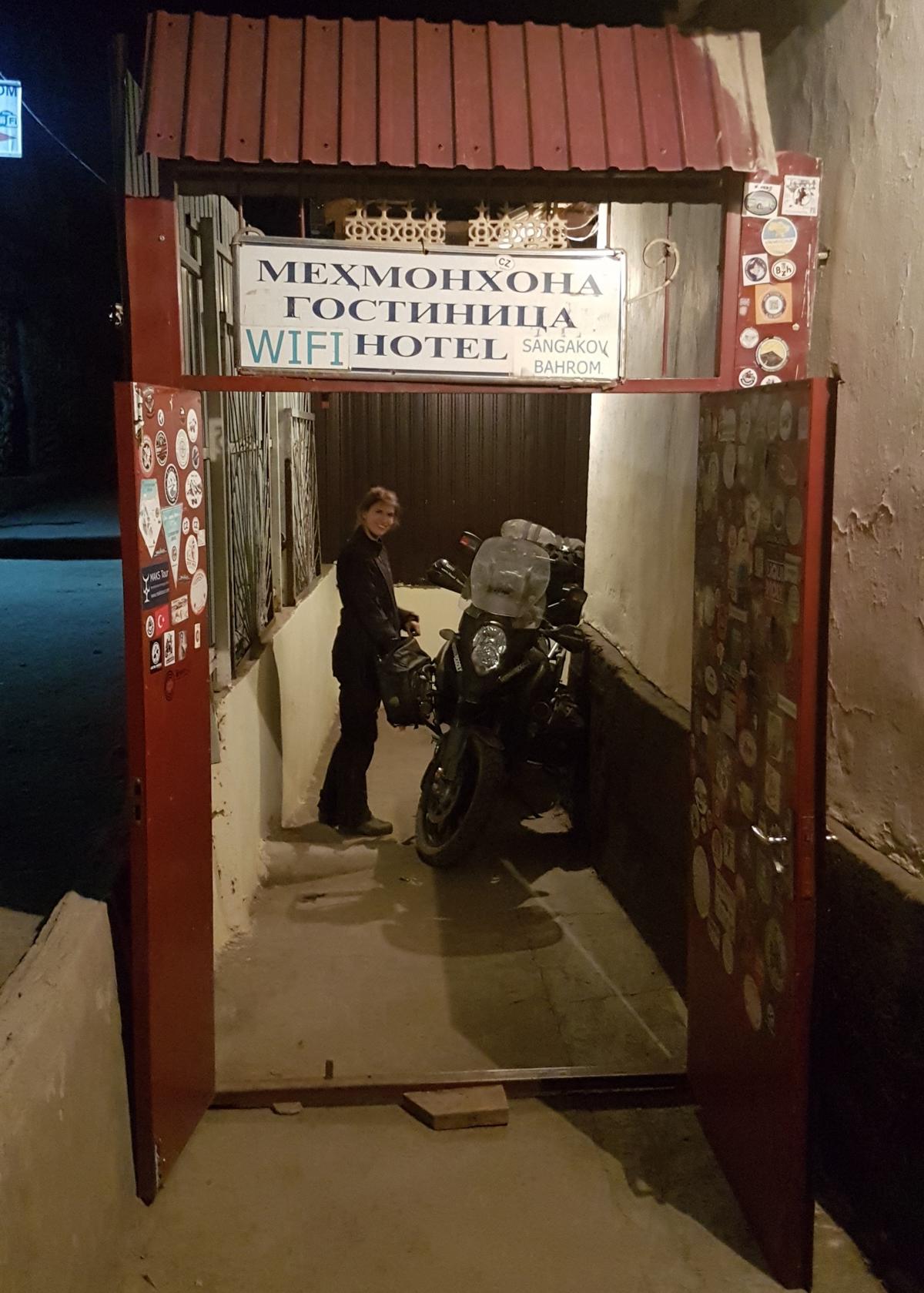
The next morning we left the hostel a second time and started towards Khorug. The weather was perfect and we enjoyed the beautiful scenery along the border to Afghanistan. On the way we met some Mongol Rallye cars. The goal of the race was to start with old and battered cars in Europe and reach Mongolia as fast as possible.
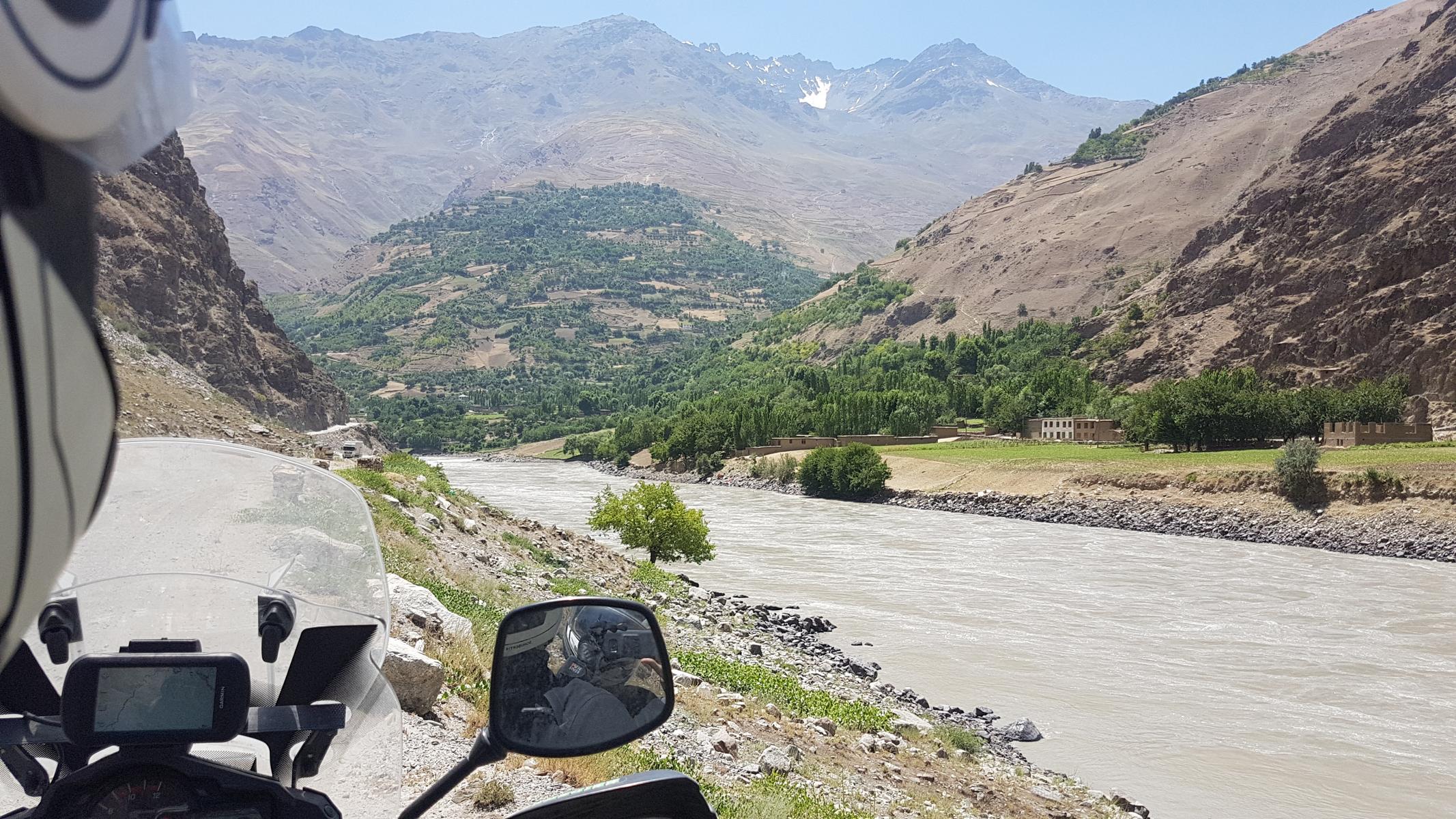
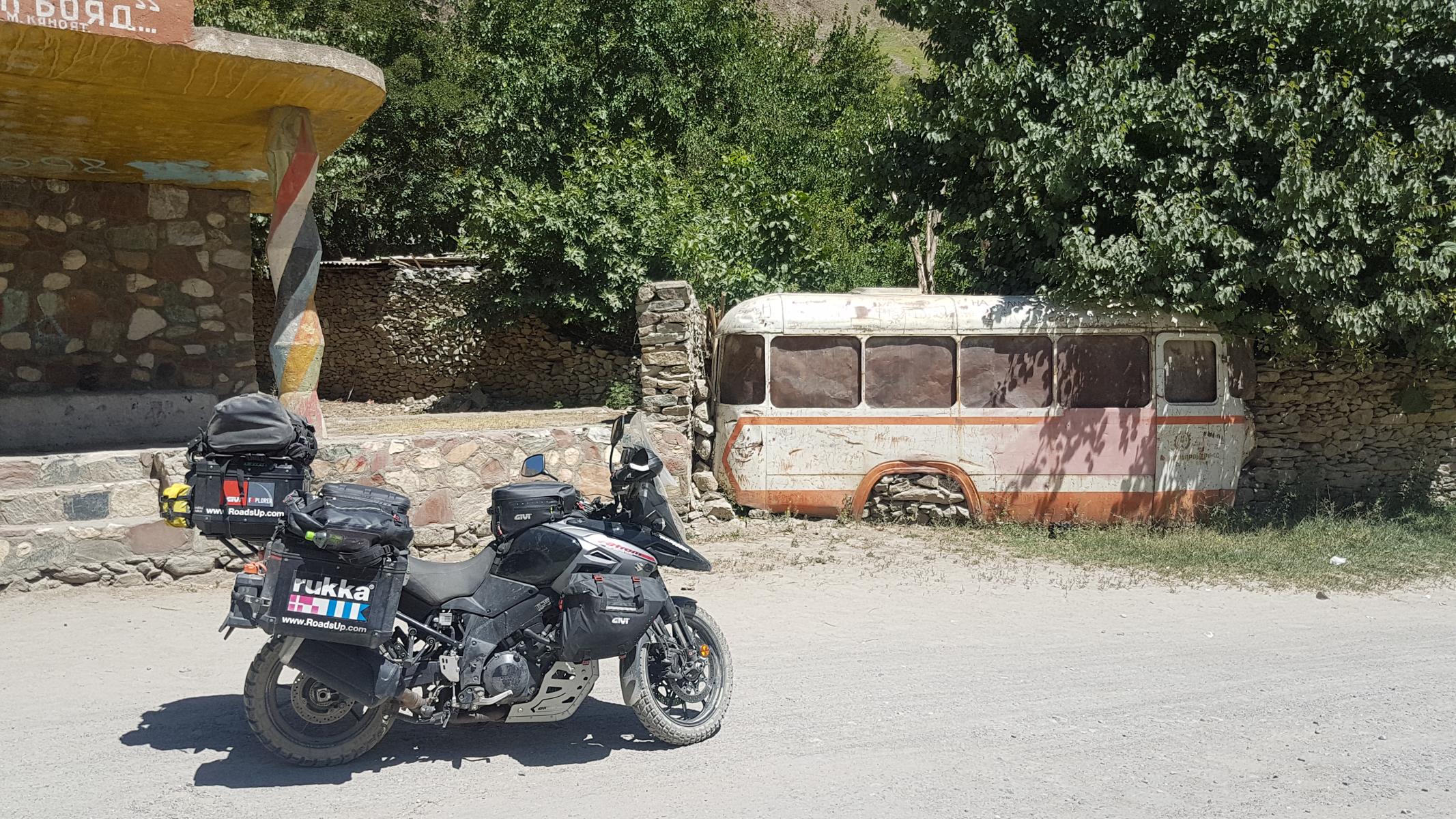

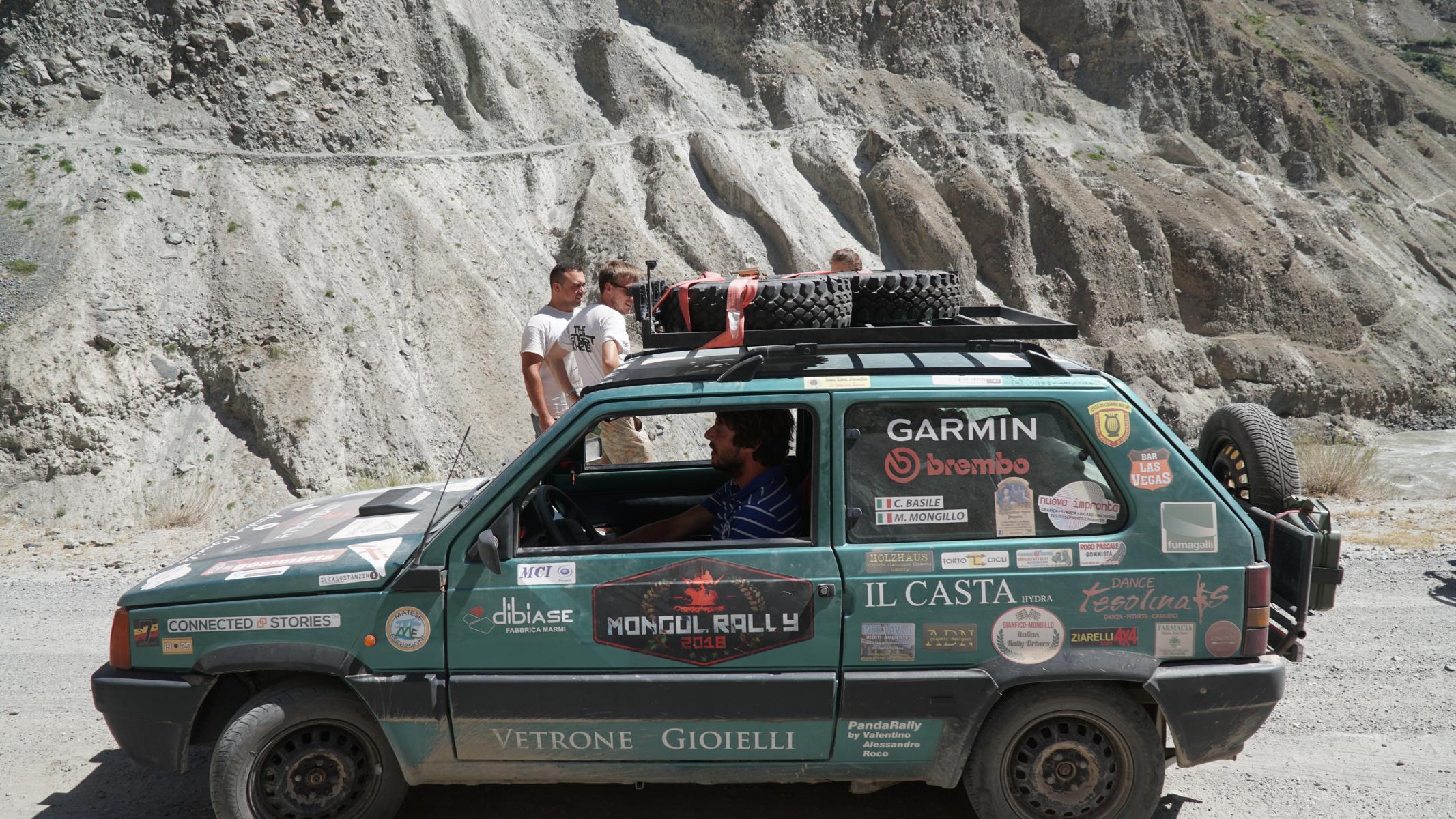
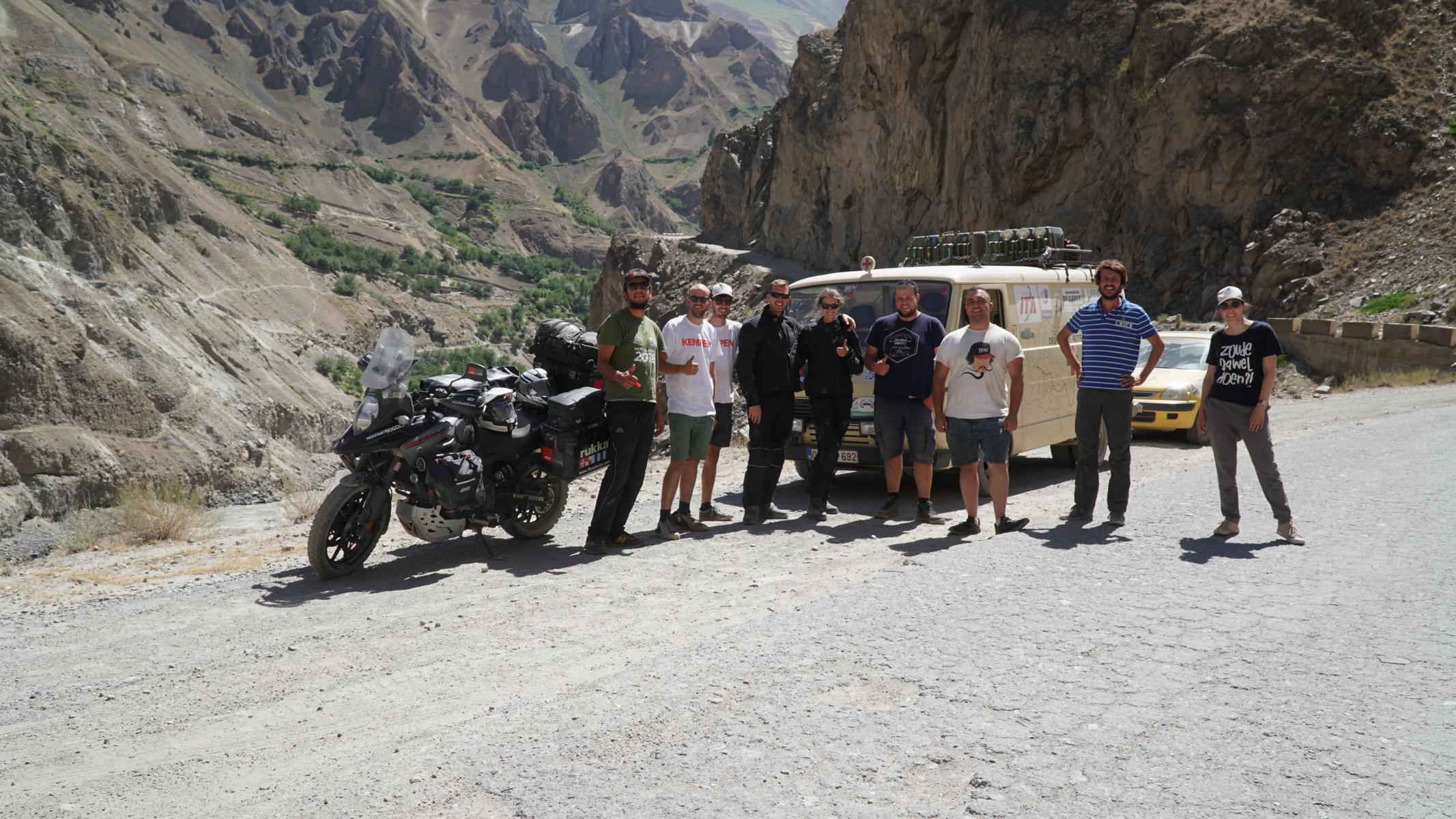
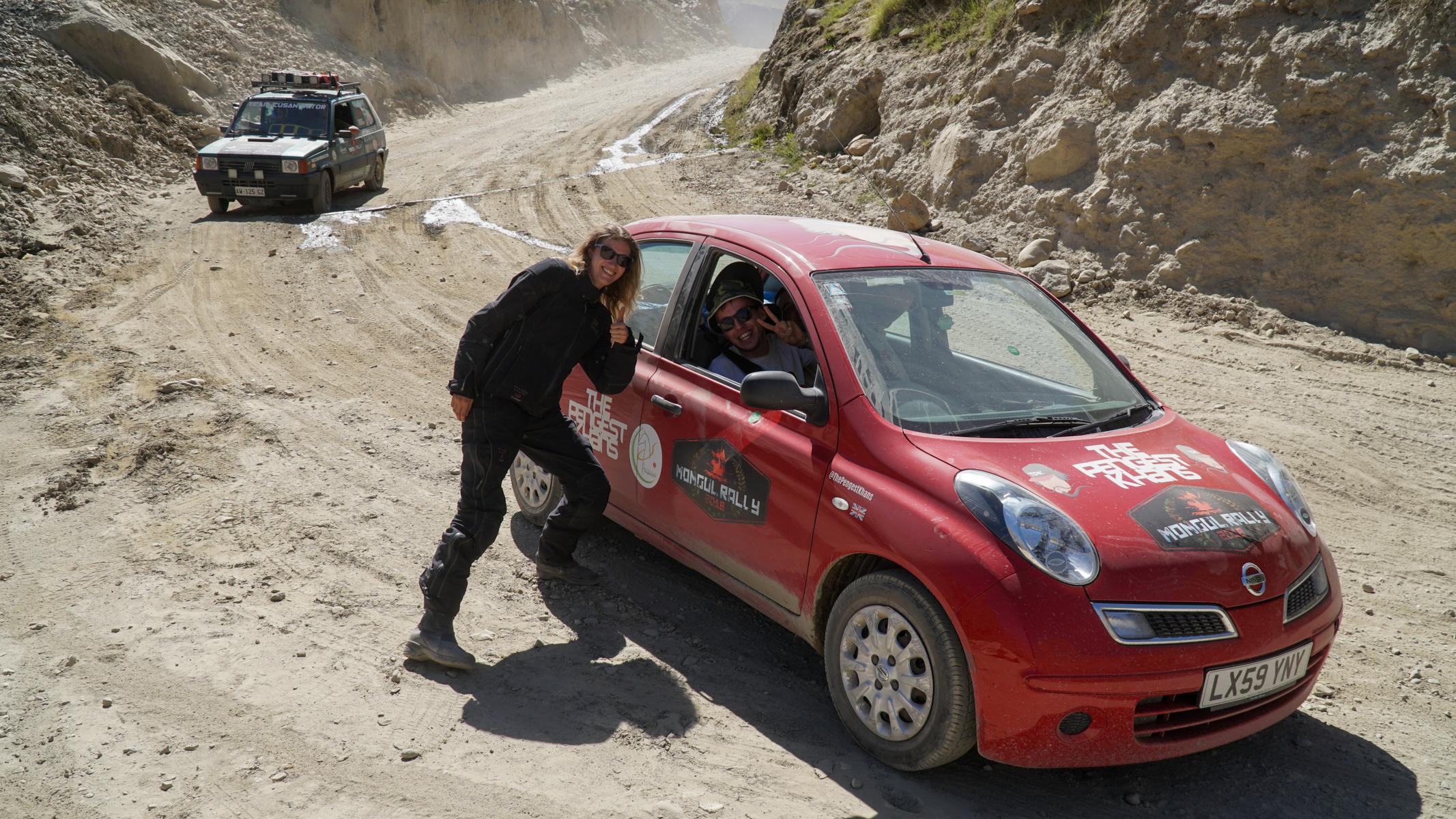
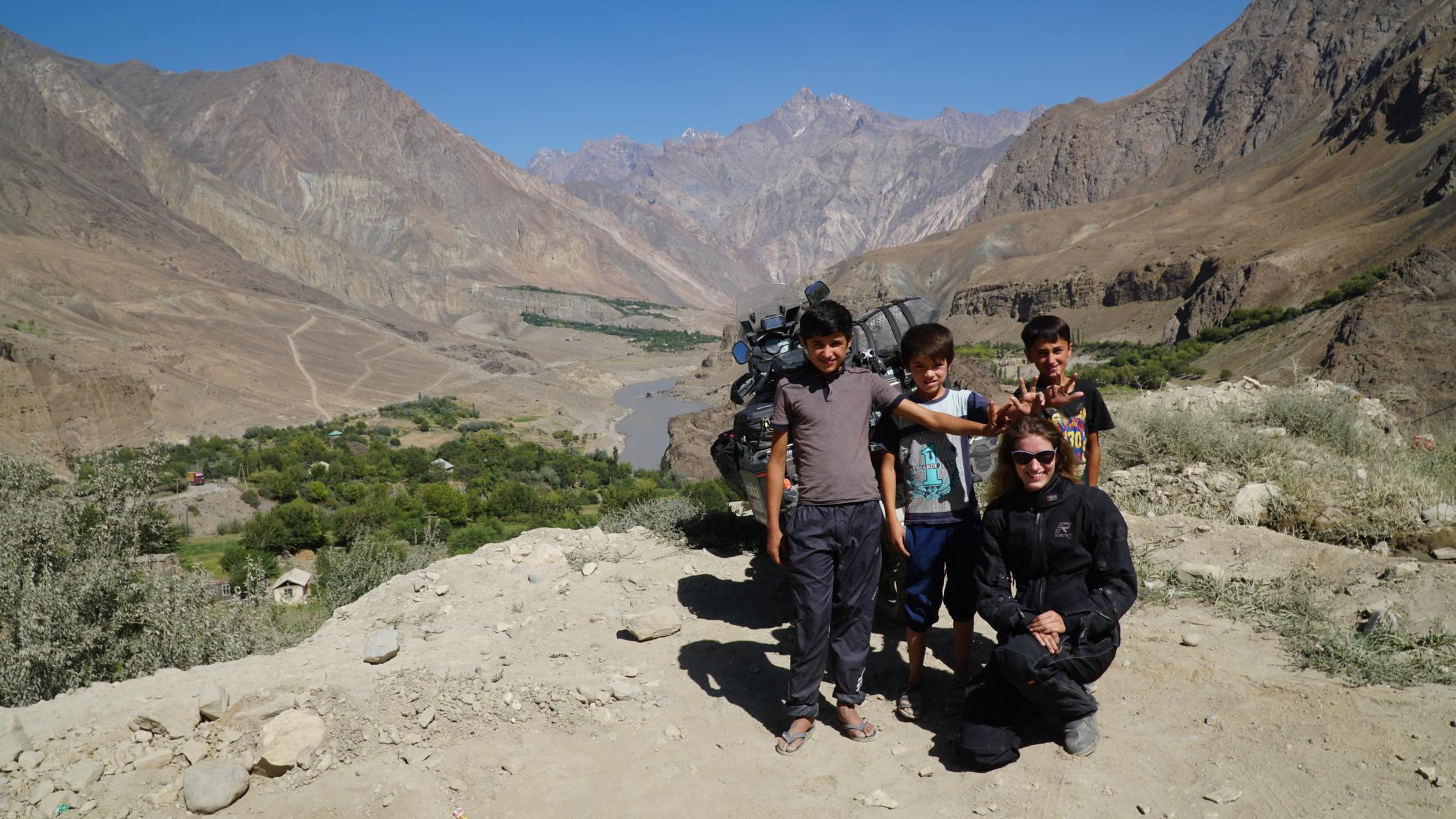
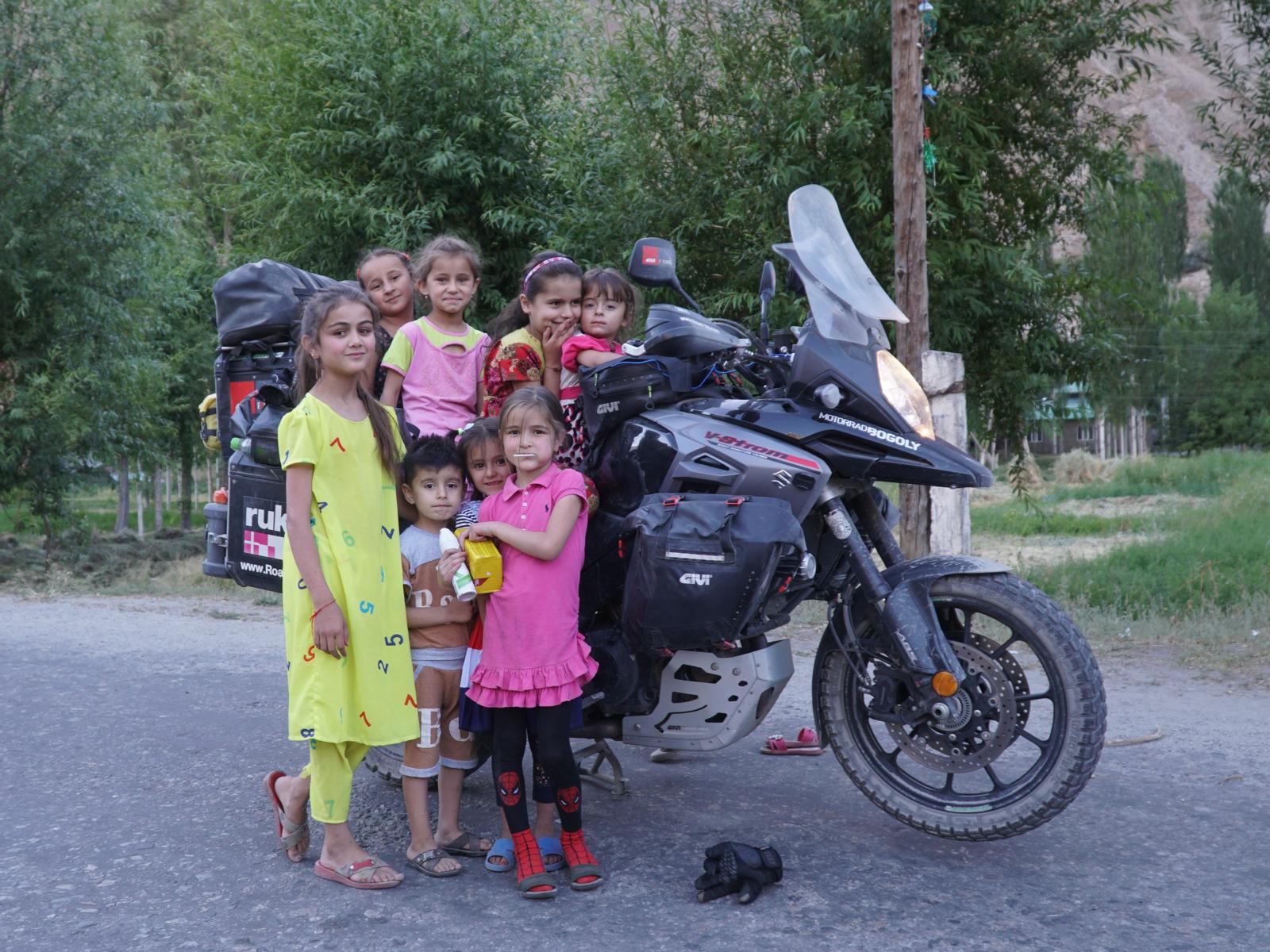
Khorugh
In Khorugh Deedrah and Valentin from Switzerland were already awaiting us at the Pamir Lodge. The last time we saw each other was in the Greenhouse Hostel in Dushanbe and later on the Pamir Highway, where they had to go back to Dushanbe to get their Hyundai Terracan fixed. They even cooked Spaghetti for us and we had a great evening together.

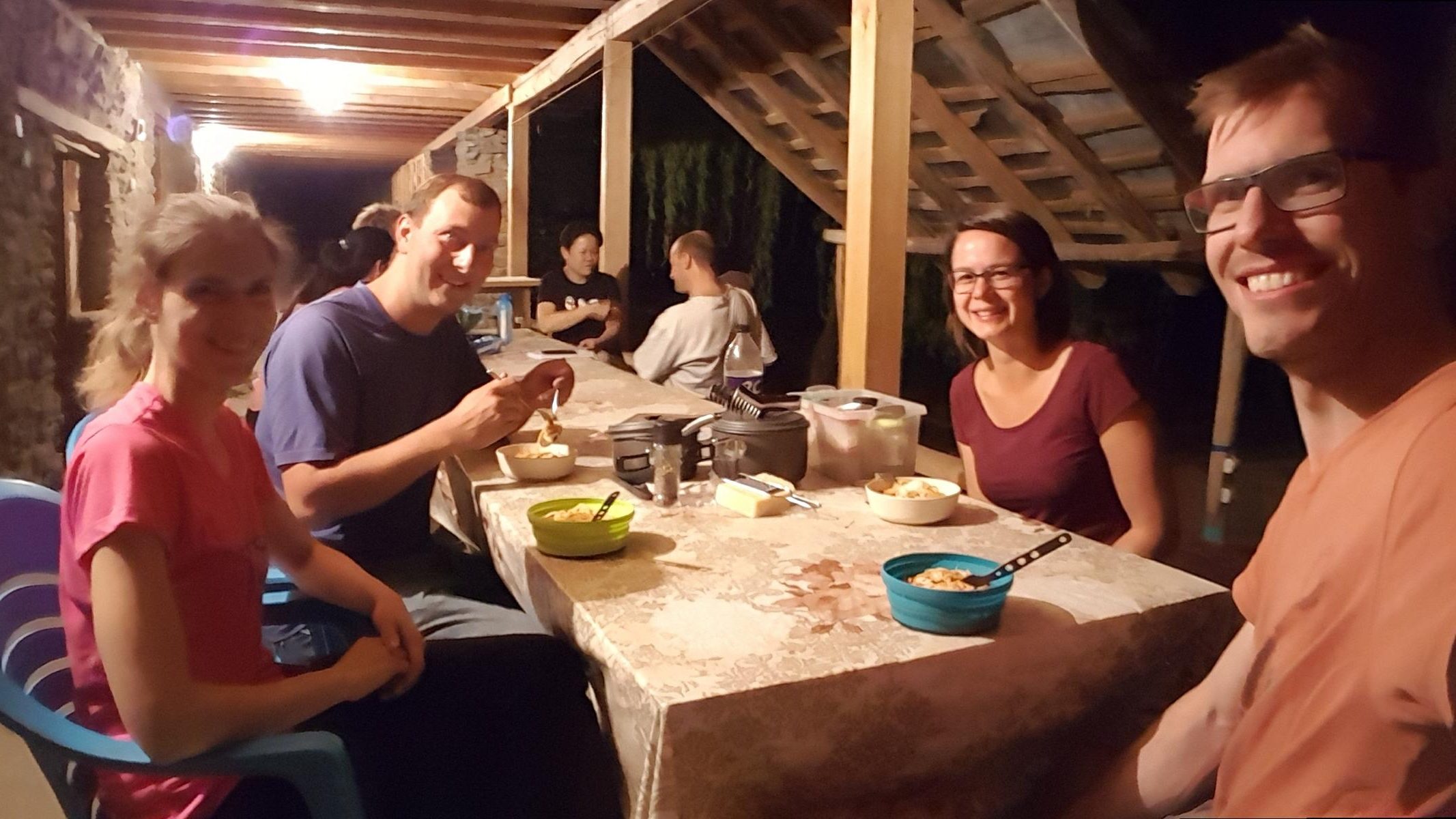
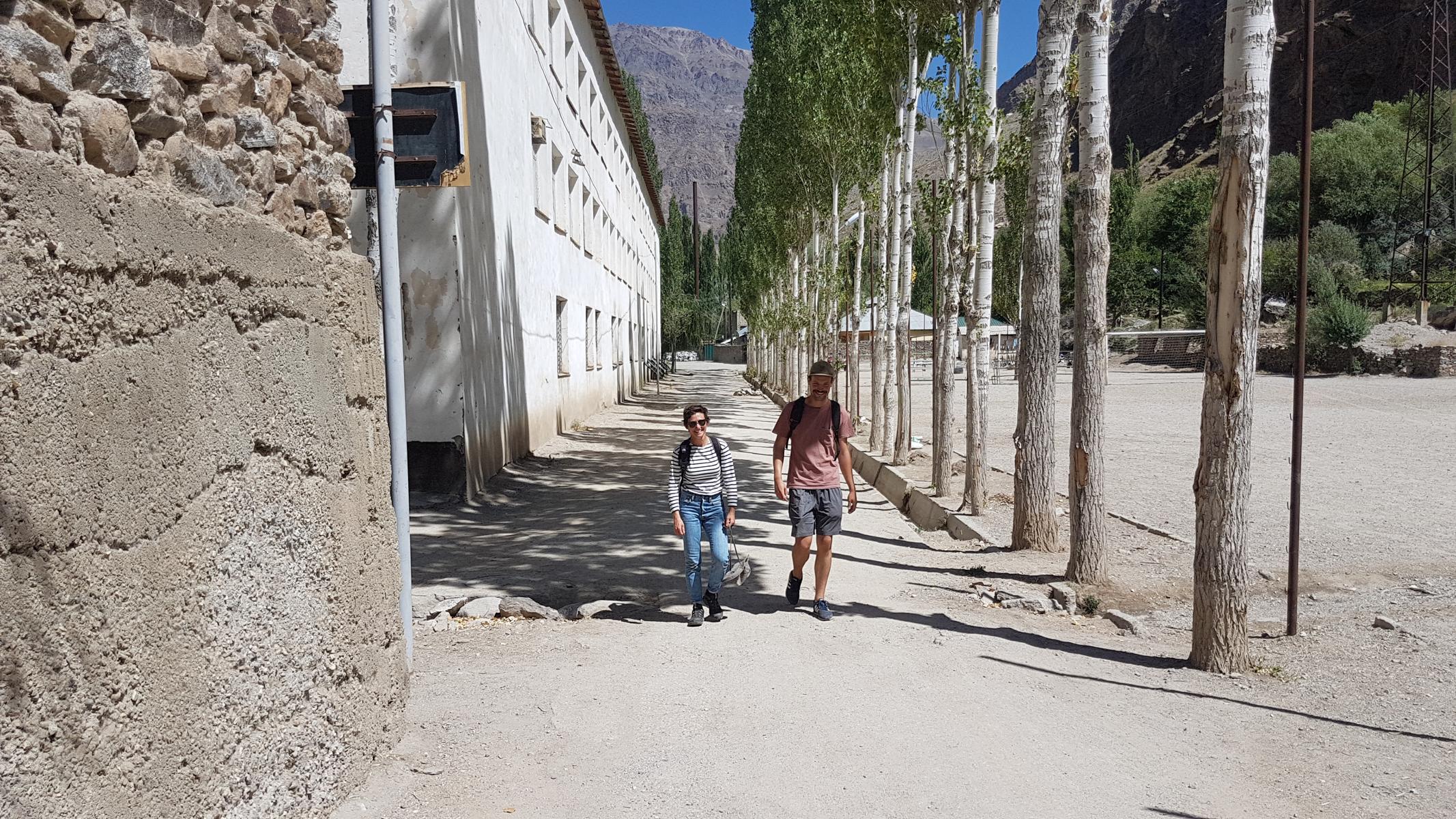
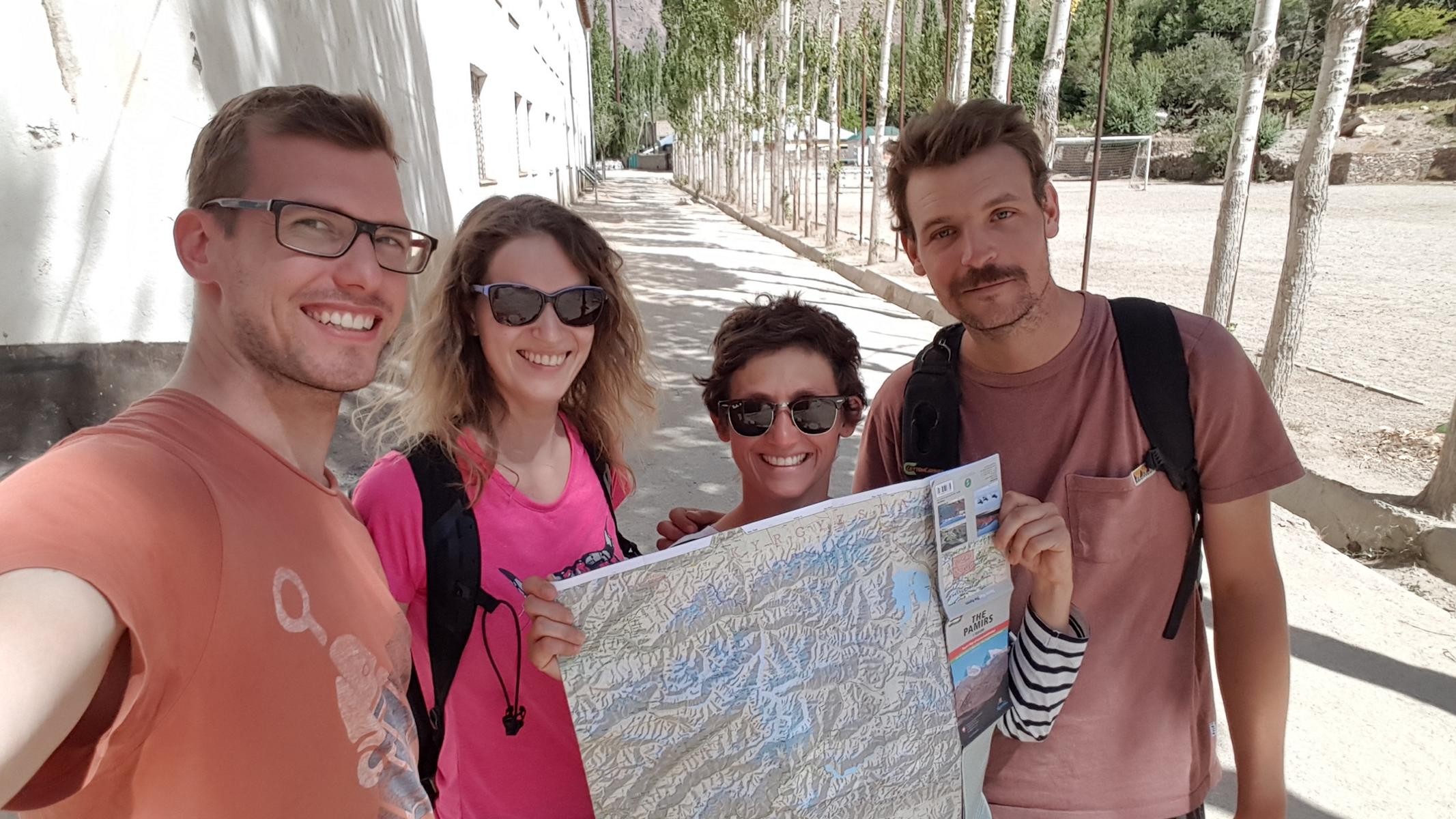
Our first stop was at the Pamirs Eco-Cultural Tourism Association (PECTA). This was one of the rare places with working WIFI. Mirzo, who was working there, gave us some valuable and up-to-date information about the situation in Afghanistan. Even though there had been some Taliban attack a few weeks ago not so far away, the Wakhan corridor was safe. We enjoyed our first real espresso since Europe while surfing on the internet.
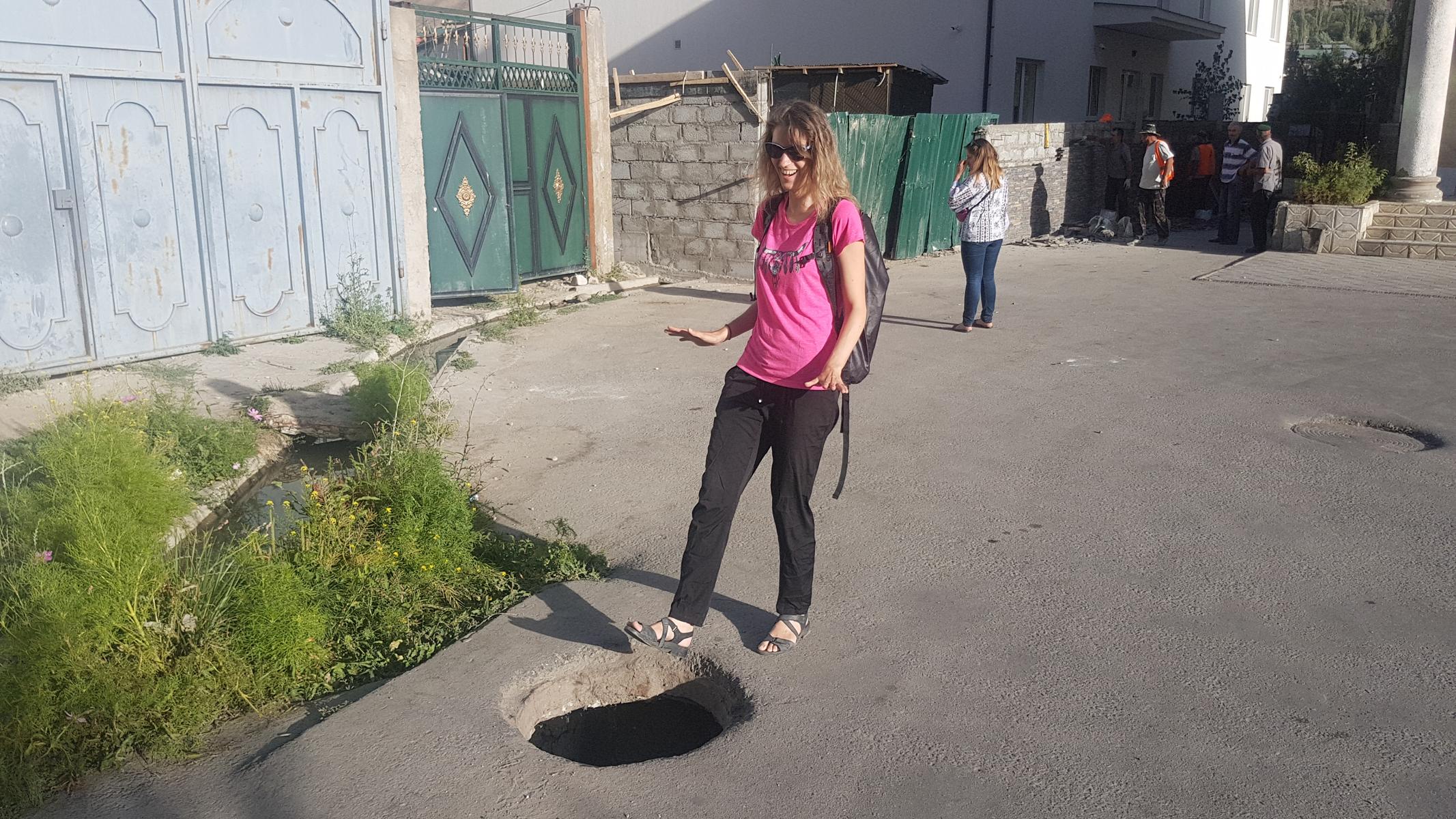
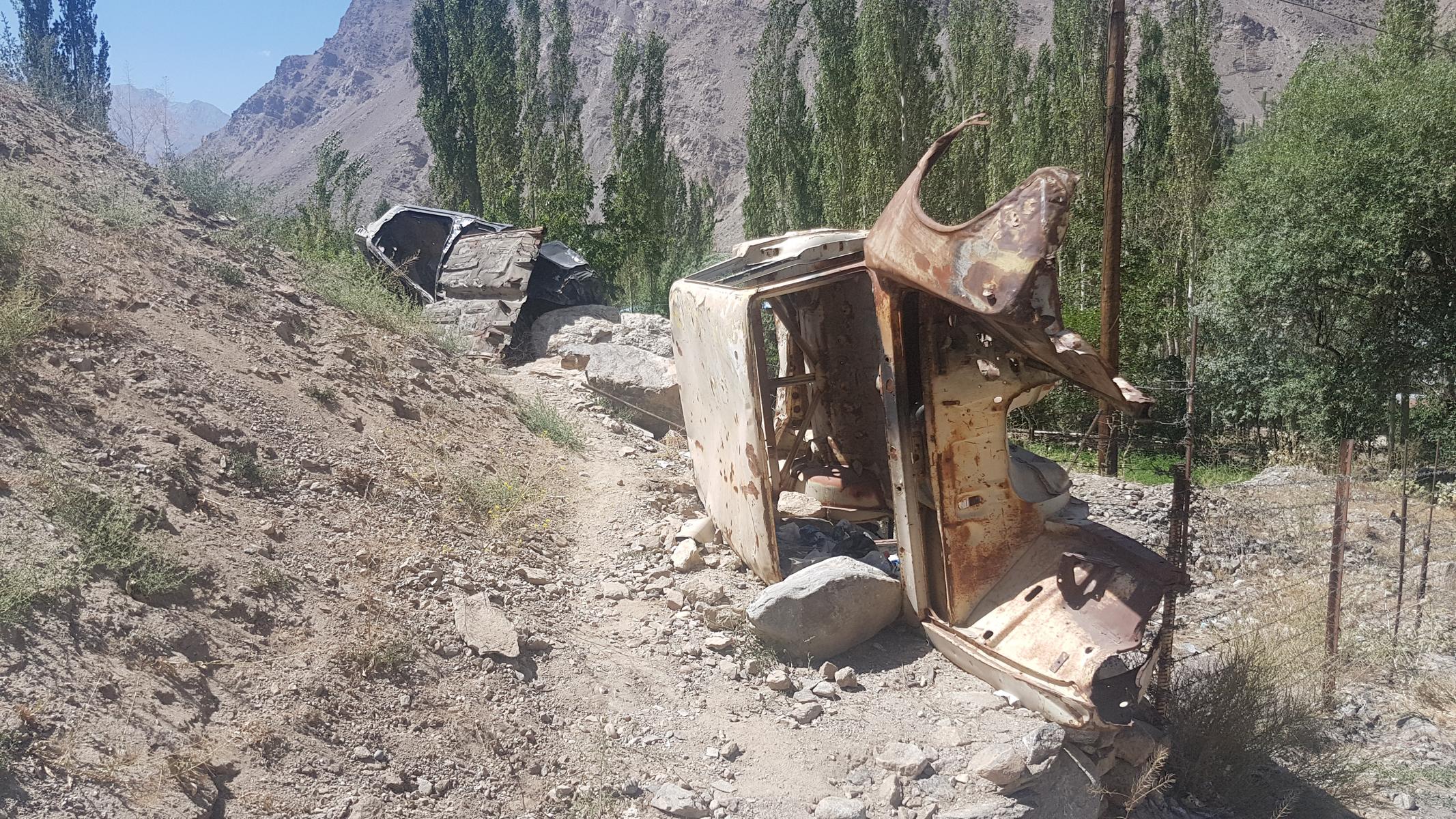
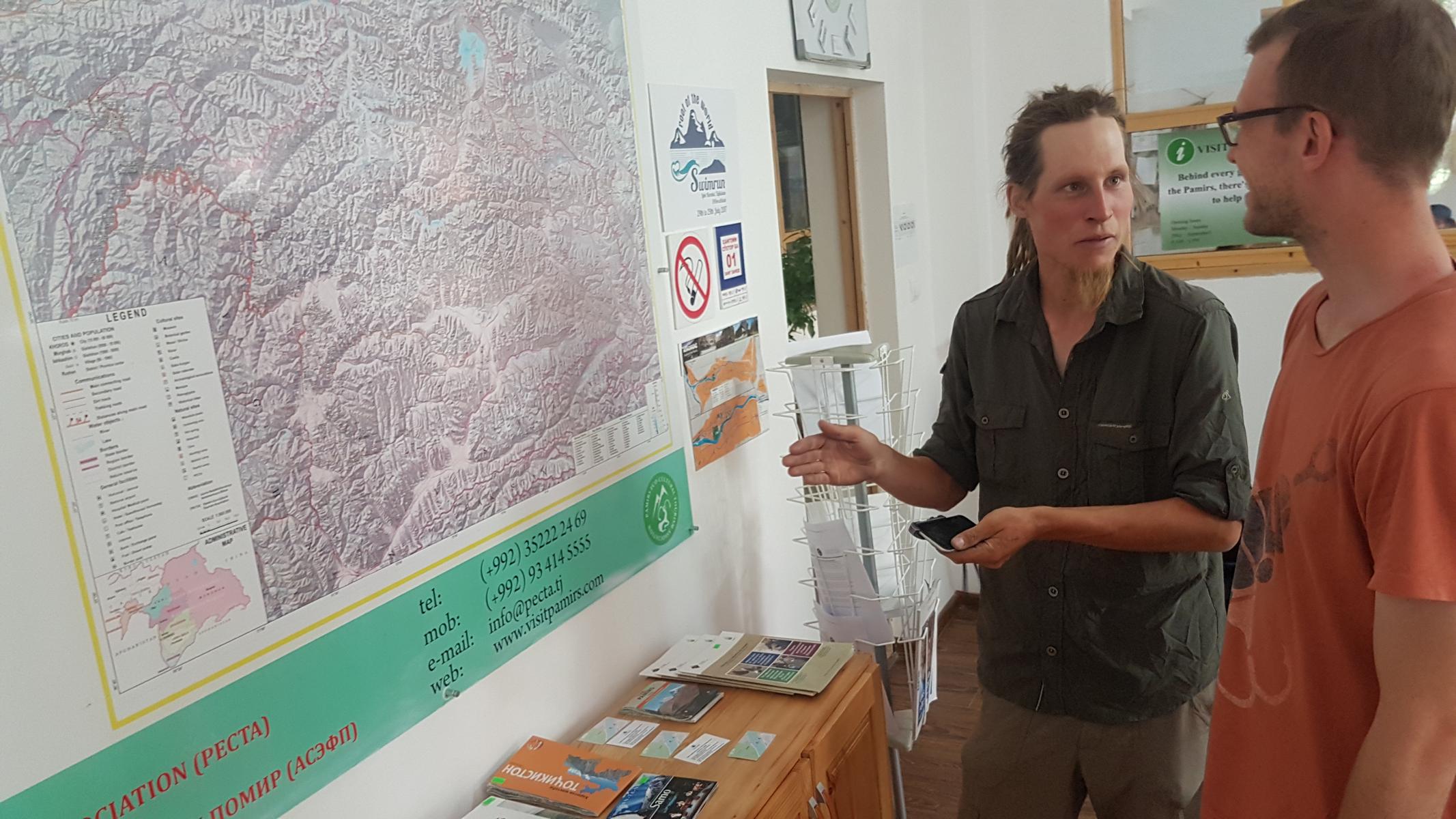
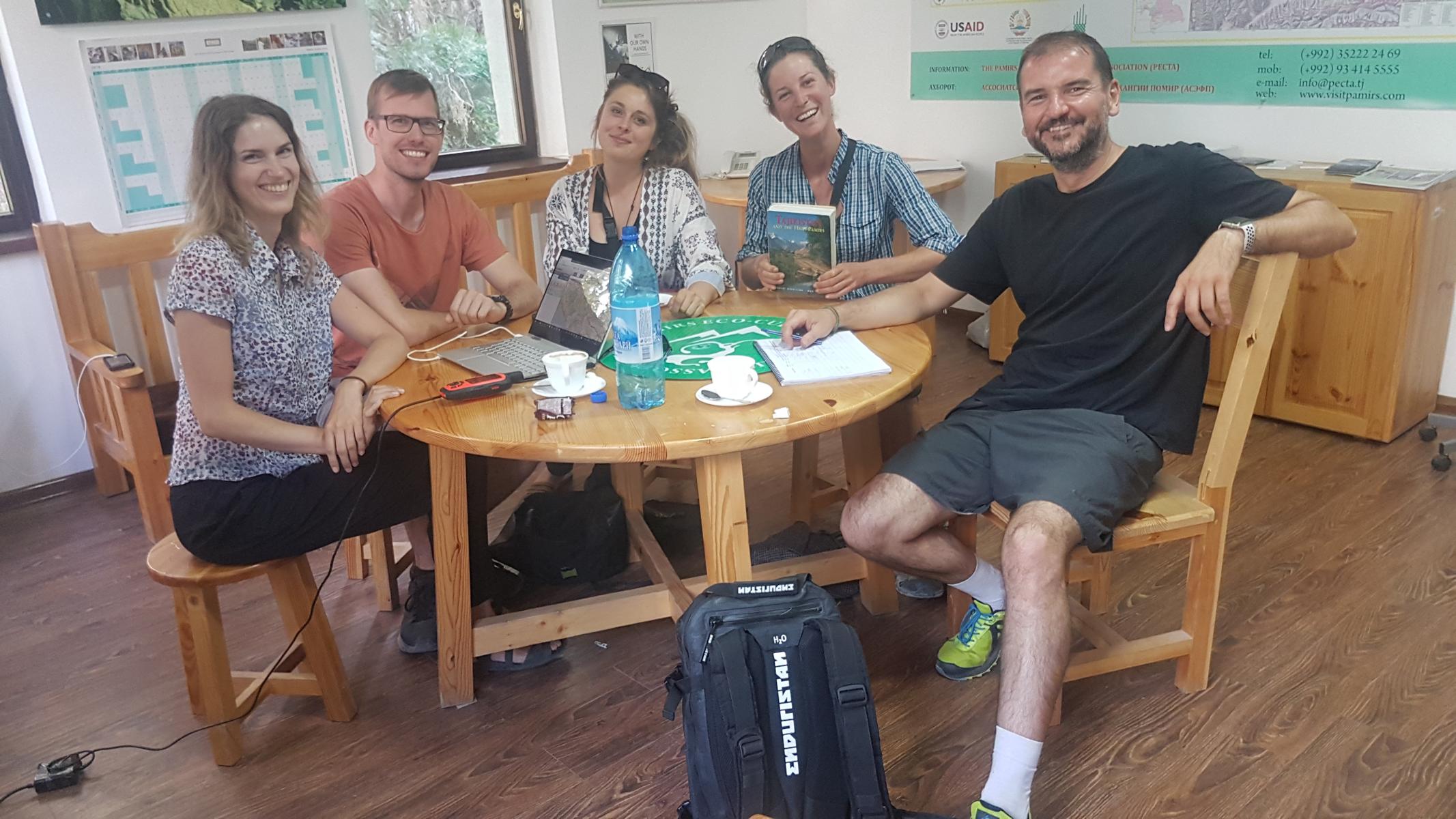
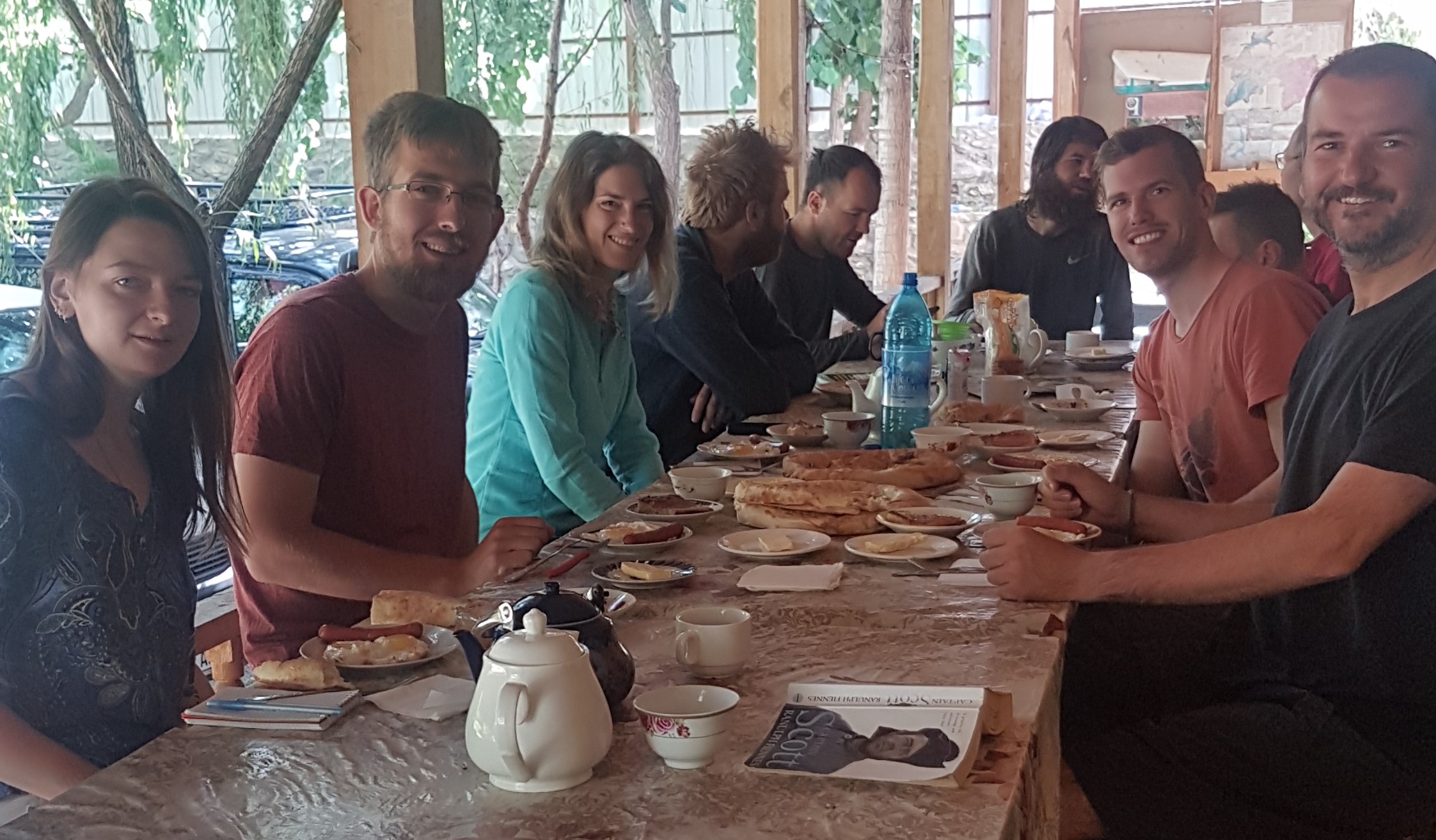

The first time we have heard about the possibility of entering Afghanistan was in Turkmenistan, when Didier Martin told us about his experiences. In Khorugh it was possible to obtain a visa within a day. When we went to the consulate, we were not the only ones applying. Other travelers wanted to go hiking in the Pamir range.
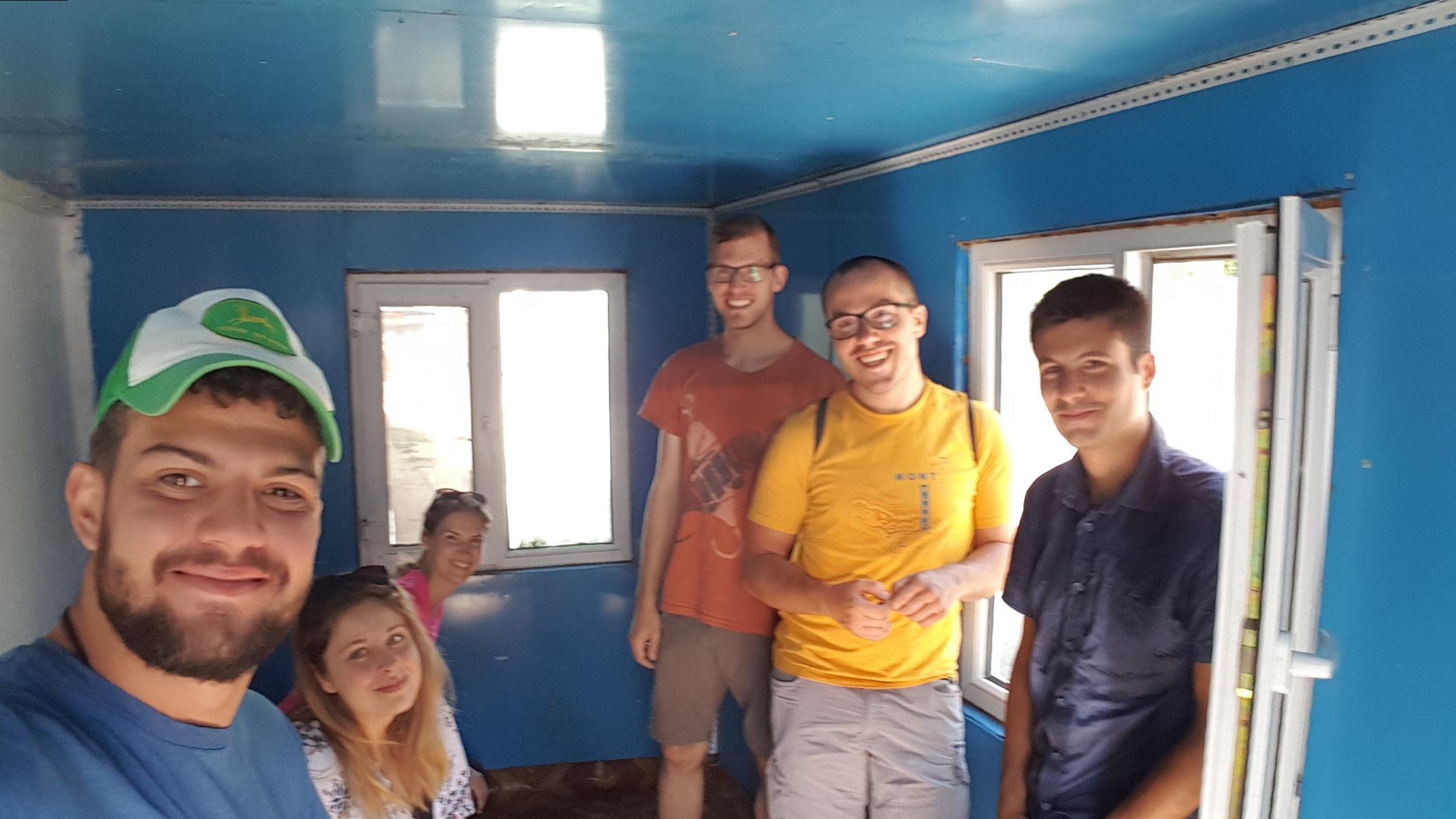
Before we left towards Ishkashim we had to get some cash in Dollars. This was not an easy task, as all the ATMs we tried didn’t work. The only possible way to get some money was via Western Union. Inside the bank everything was chaotic.
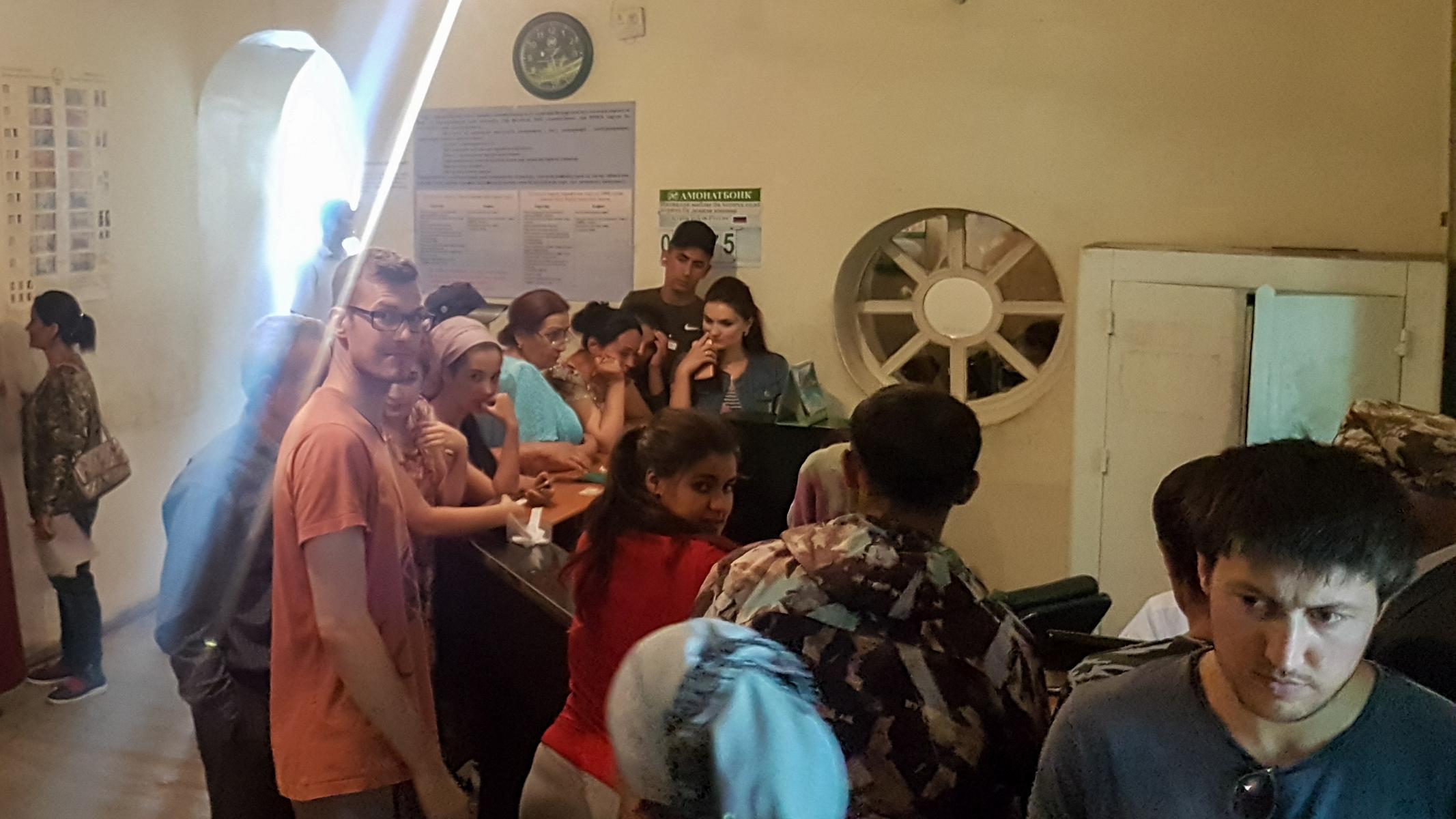
At the supermarket we stocked up our food supply. We already knew that there would be no markets or restaurants where we planned to go in Afghanistan.
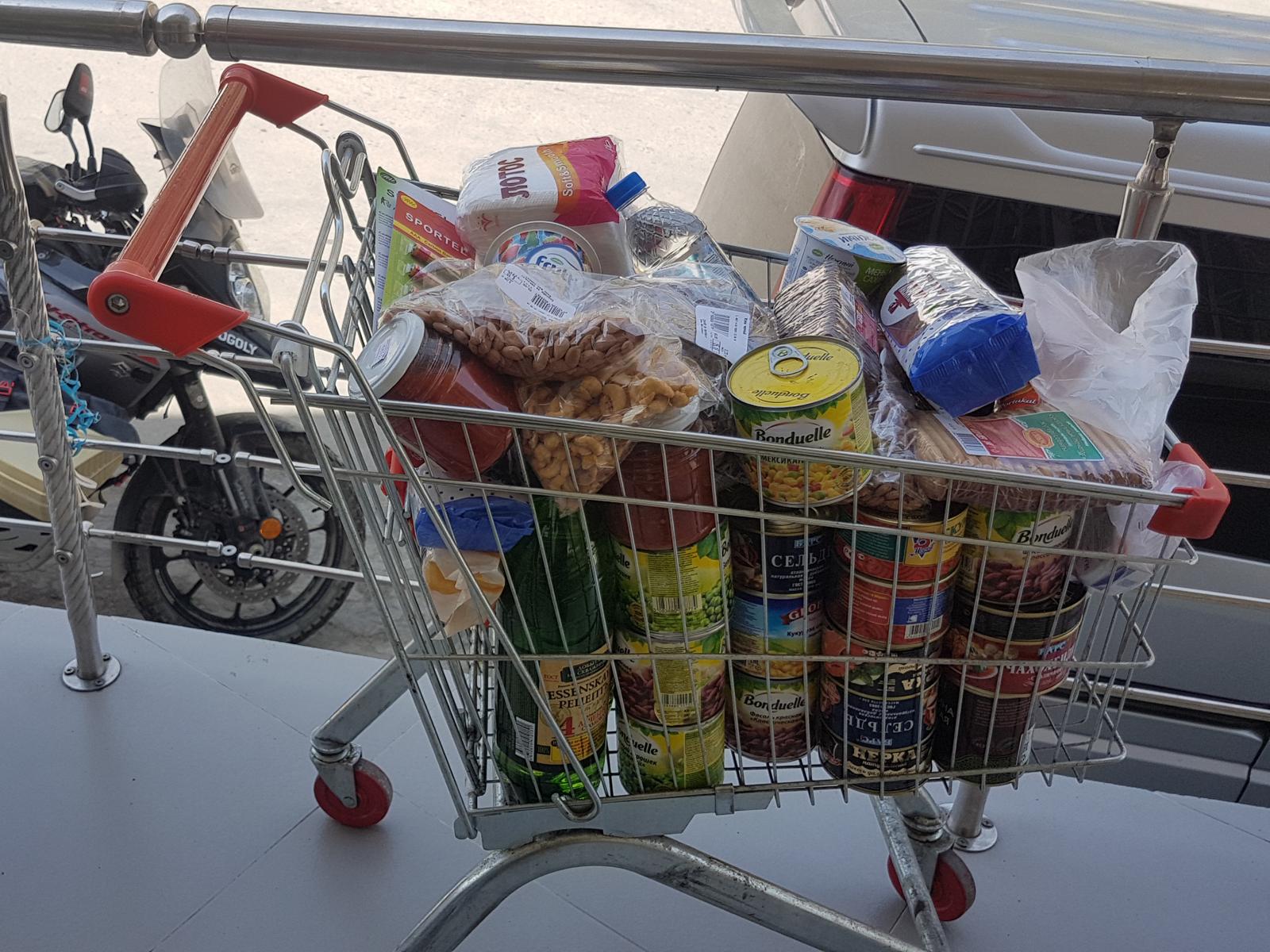
Getting sick
The distance from Korugh to Ishkashim was only about 100 kilometers. For us it seemed much longer. Both of us felt sick, so we had to take many breaks.
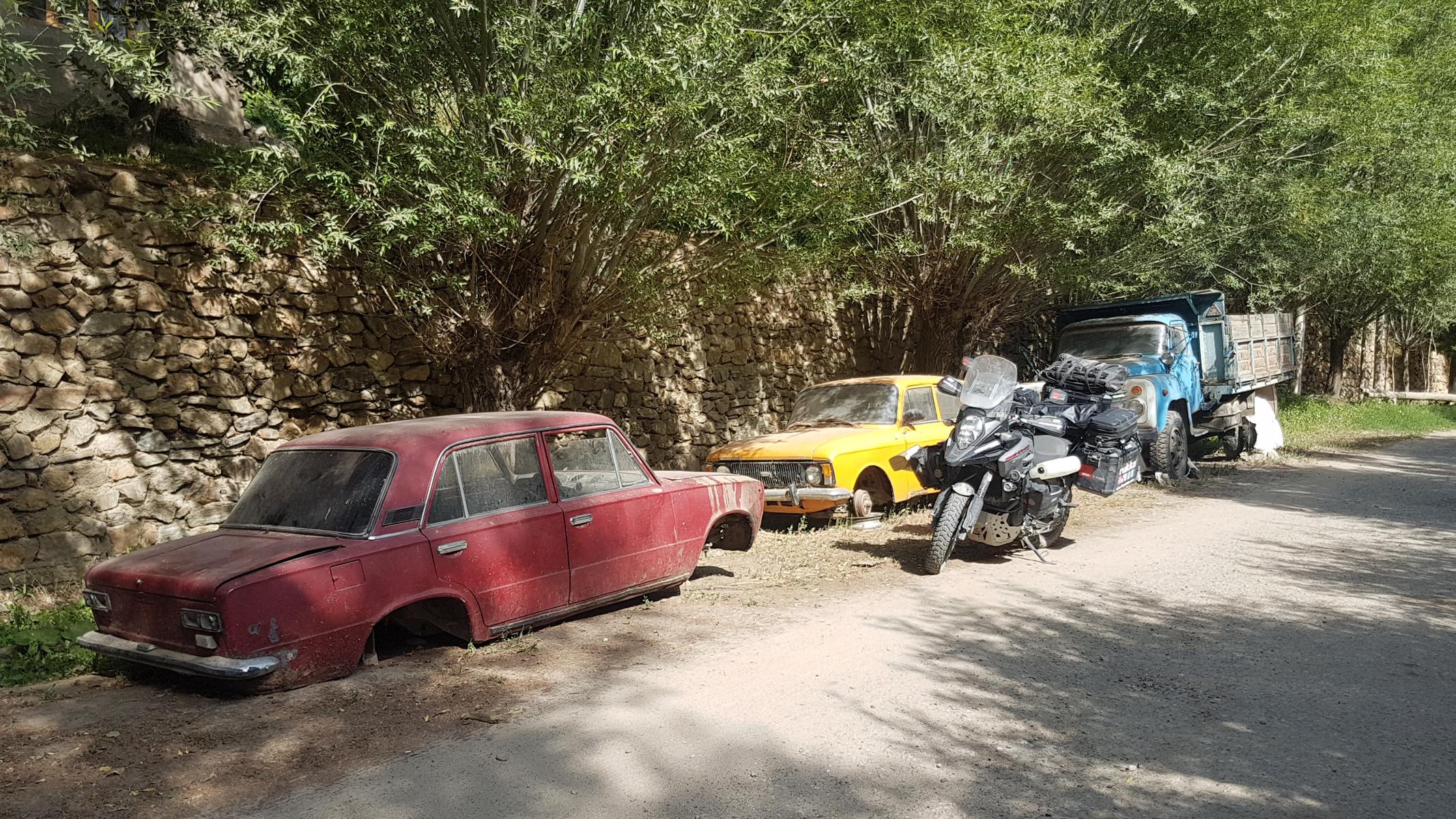
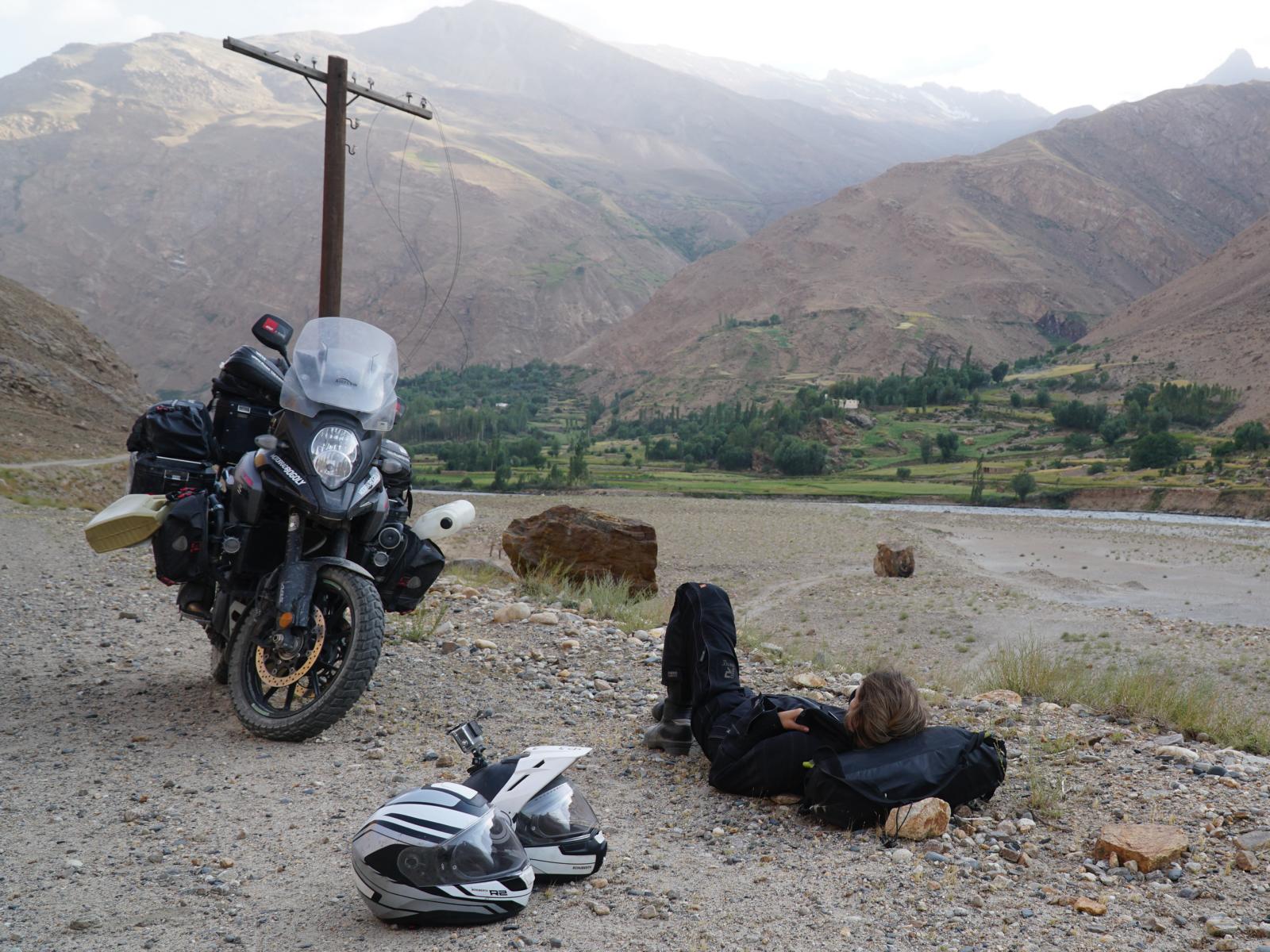
On one police station we met Viola and Massimo from Italy travelling around the world on a Triumph Tiger. They were going the other direction.
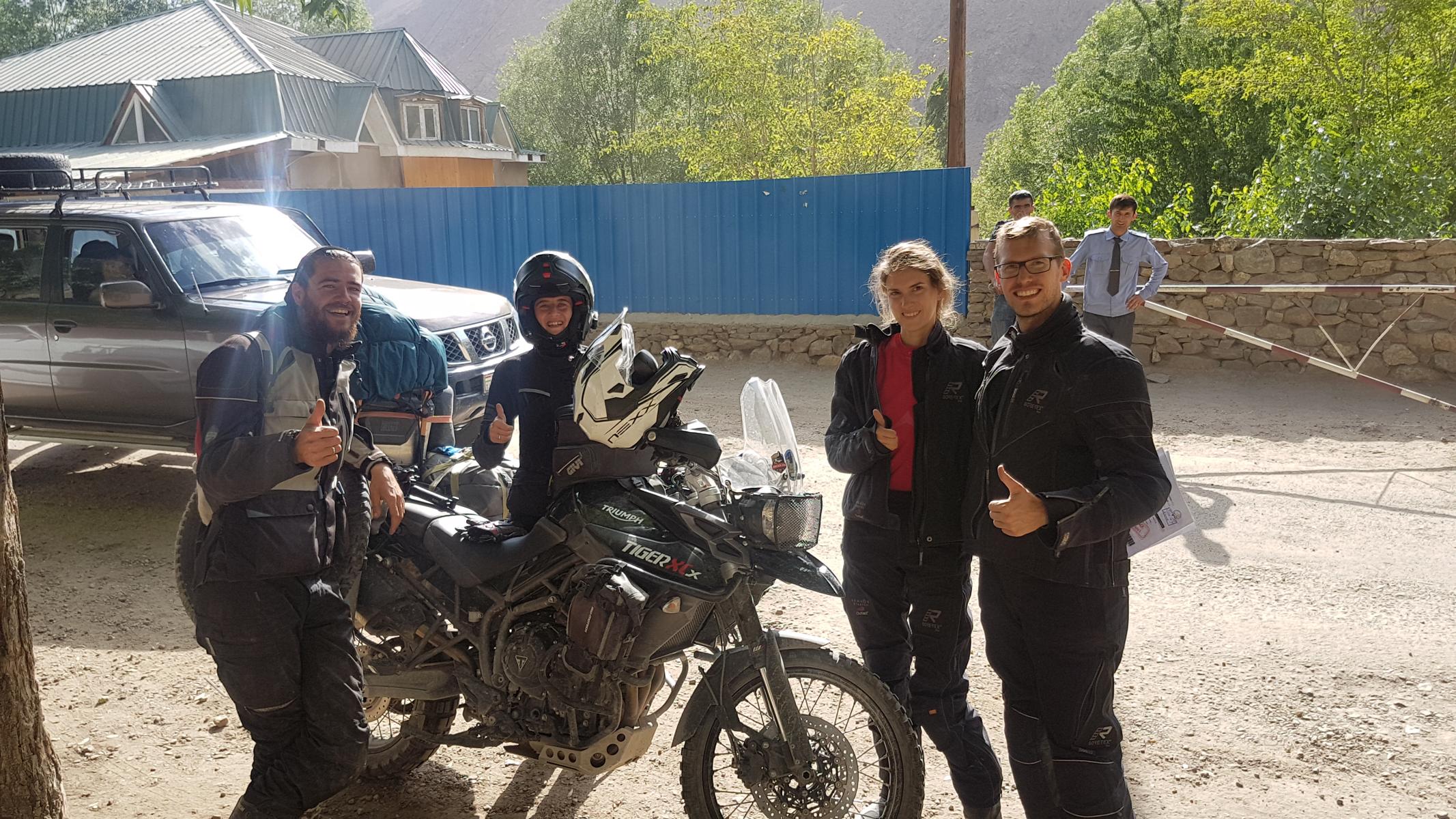
We were really happy when we reached Ishkashim and went straight to Hani’s guesthouse.
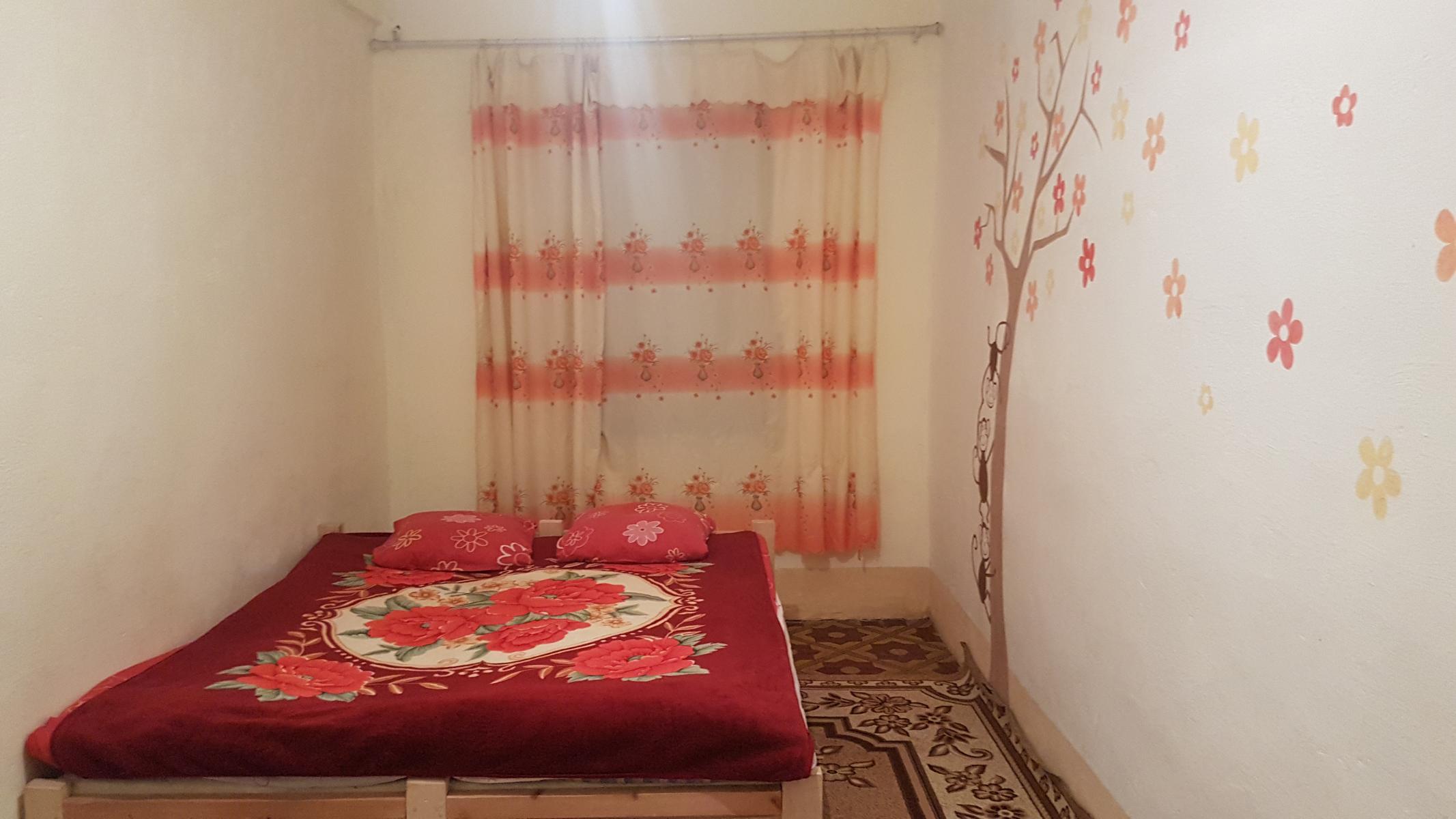
As Peter’s conditions got worse. The next day we decided to visit a hospital. A local guy from the guesthouse accompanied us, telling us that many tourists arrived here being sick. The hospital itself was extremely simple. They were not dependent on computers or other machines, as there is often no electricity available. As we went through the ruined building a group of friendly female doctors immediately took care of Peter. They checked his temperature and gave him some rehydration infusion.
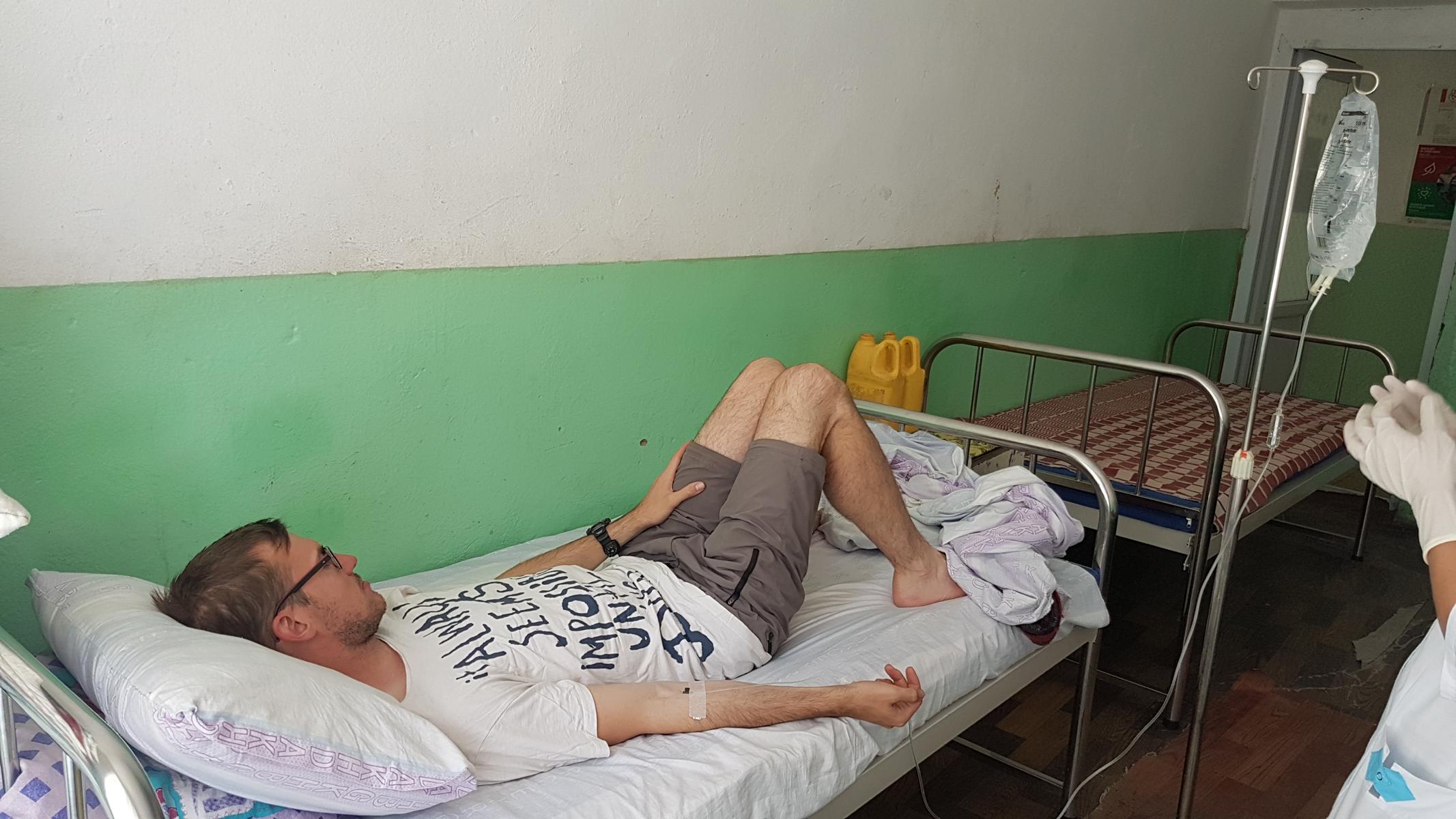
Surprisingly we didn`t have to pay anything for the treatment, as all the healthcare is free for anybody in the Post-Soviet-country.
After a few days of recovering Peter was well enough to continue the journey. We were so happy to use the washing machine that we didn`t care much about the surroundings. The water of the washing machine didn`t work so we used the shower tap instead.
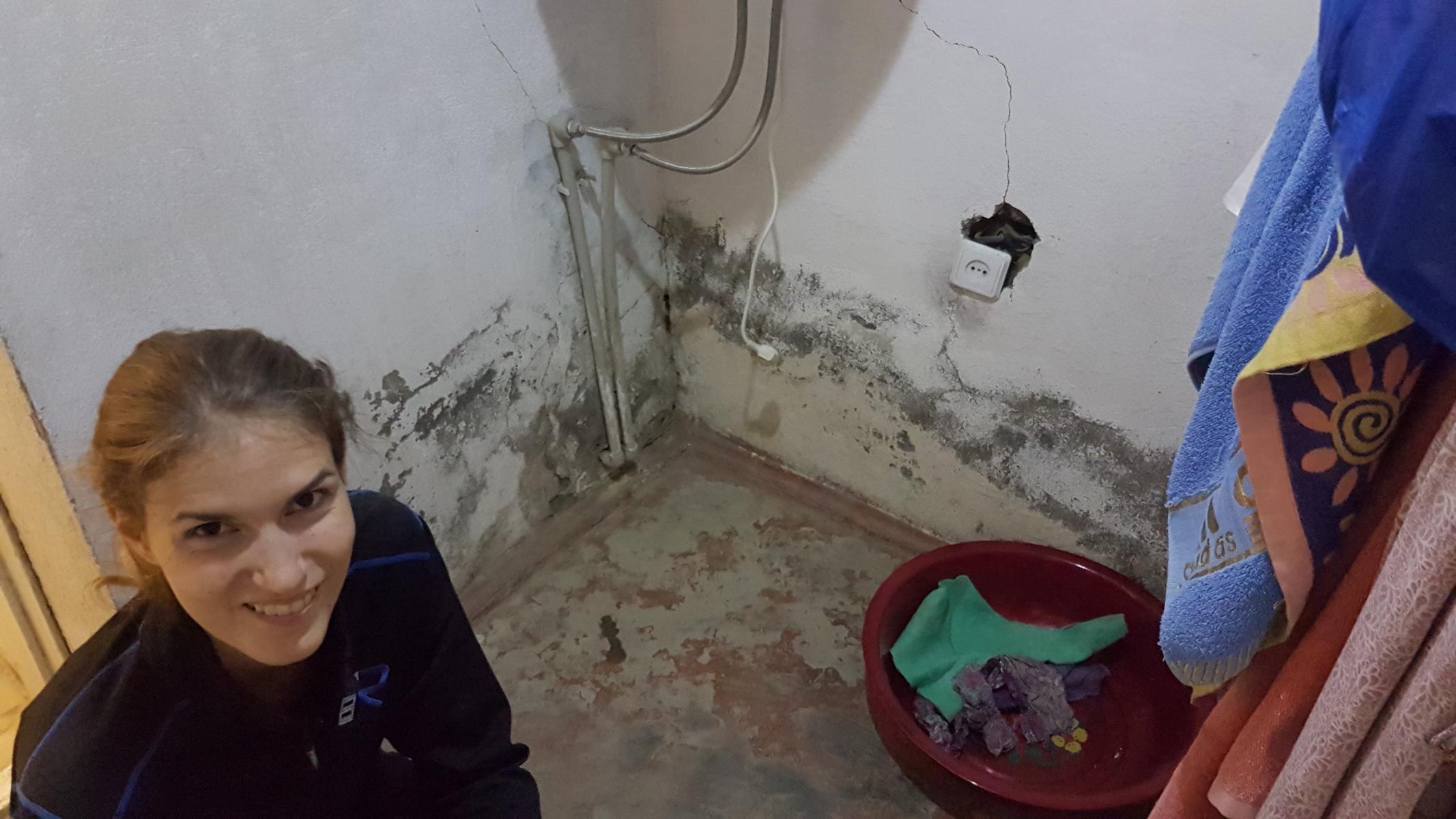
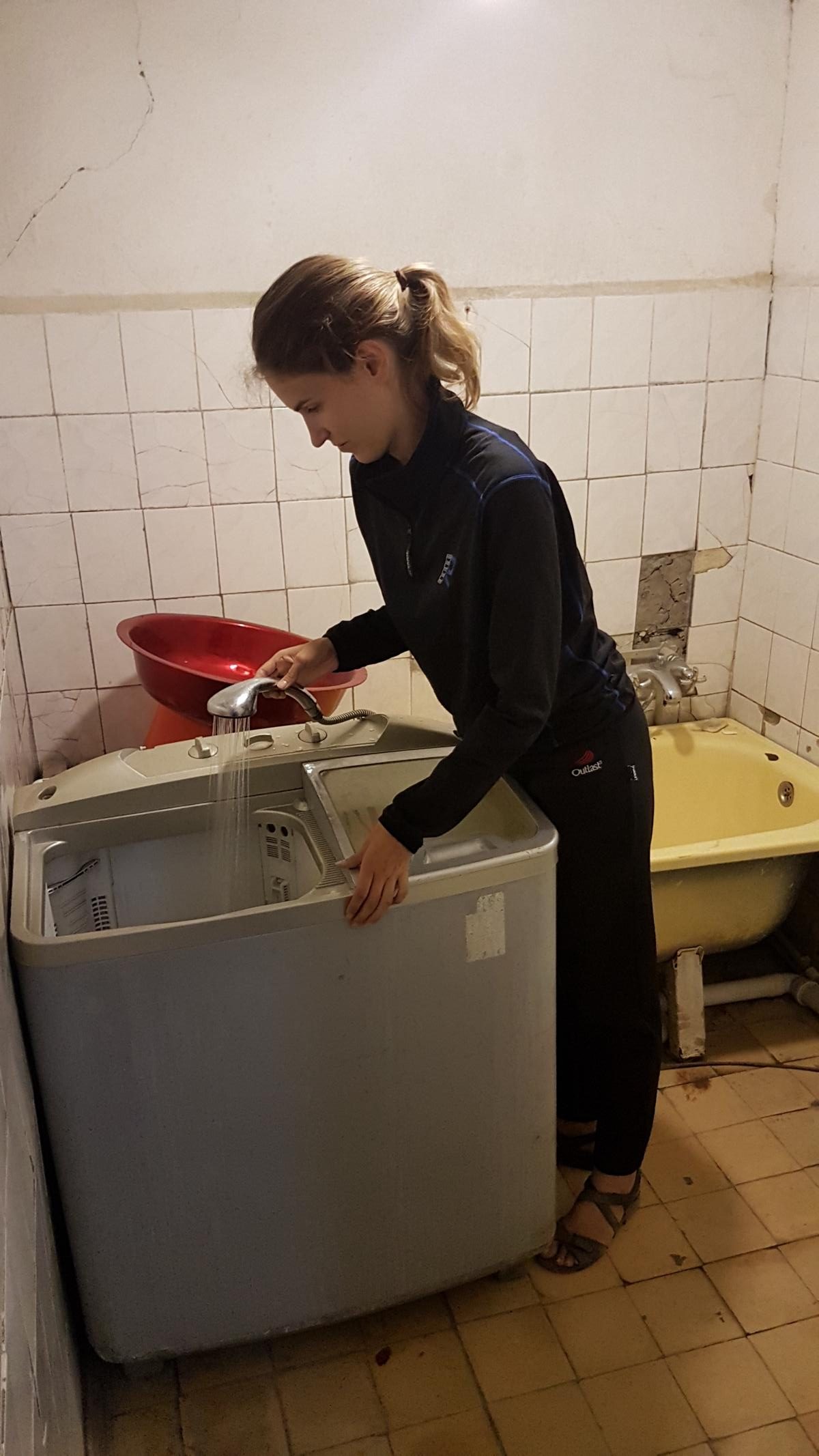
Little shop of horrors
On the next day we entered Afghanistan. Three days later we were back at the same guesthouse with a bent rim – again! Compared to Afghan roads the bad road full of potholes in Tajikistan seemed to be the best road imaginable to us. Also the simple shower was pure luxury for us. It’s always a matter of perspective.

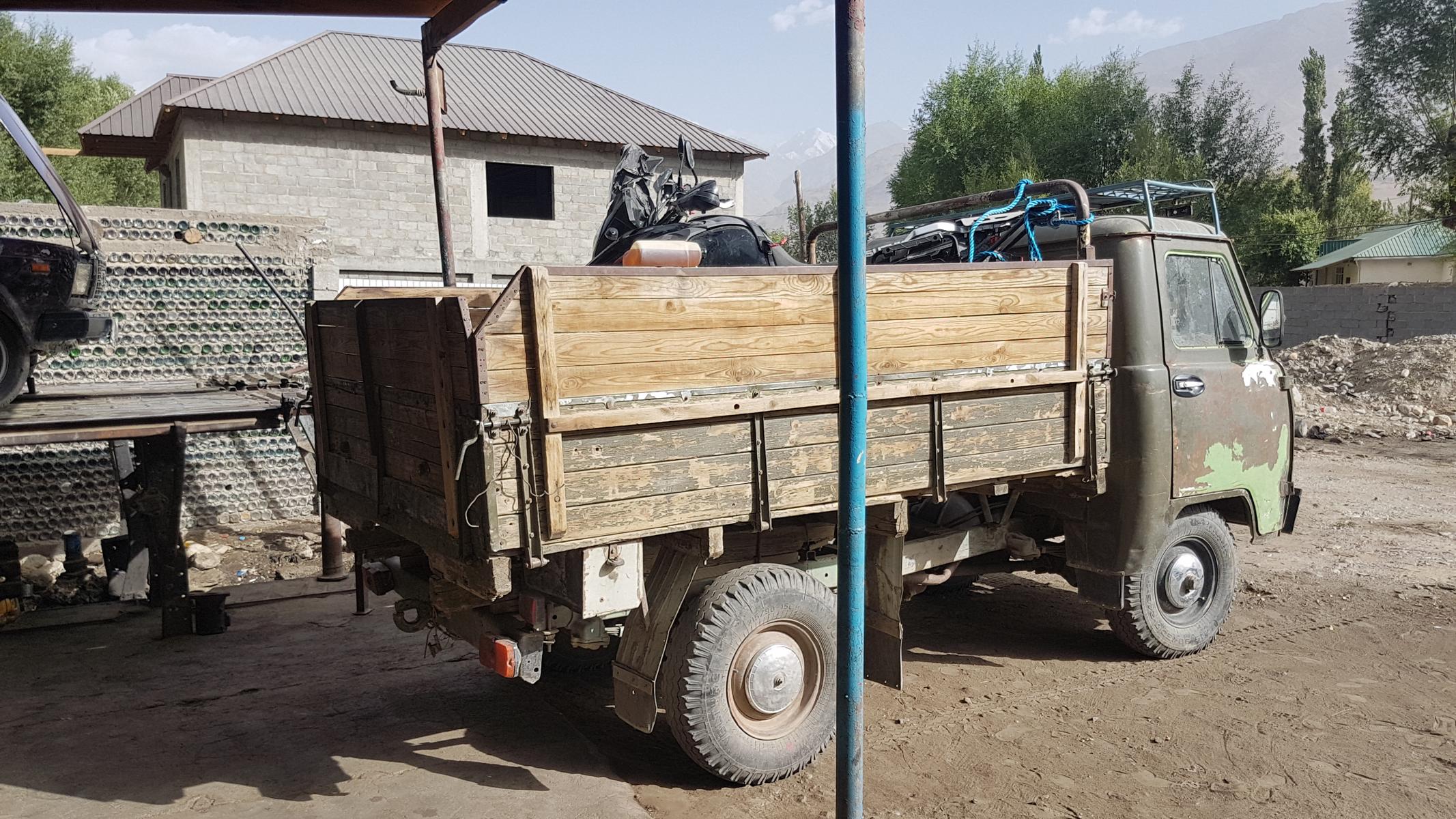
Coming back from Afghanistan we carried the motorbike a few kilometers from the border to the hostel. Instead of putting the motorcycle on a truck to the next city for repair, we found a cheaper solution. The next morning Peter unmounted the rear wheel. One border officer took Peter and the back wheel in his 4×4 car to Khorugh. There it was hard to find a half-decent mechanic. The workshops in the biggest town in this area reminded him more of a movie set from a horror film instead of a trustworthy garage. Nevertheless, one guy hammered back the rim saying that he wasn’t sure if it would last until Osh. In the same night they went back to Ishkashim driving with crazy speed on the small dirt road next to the stormy river along the Afghan border.
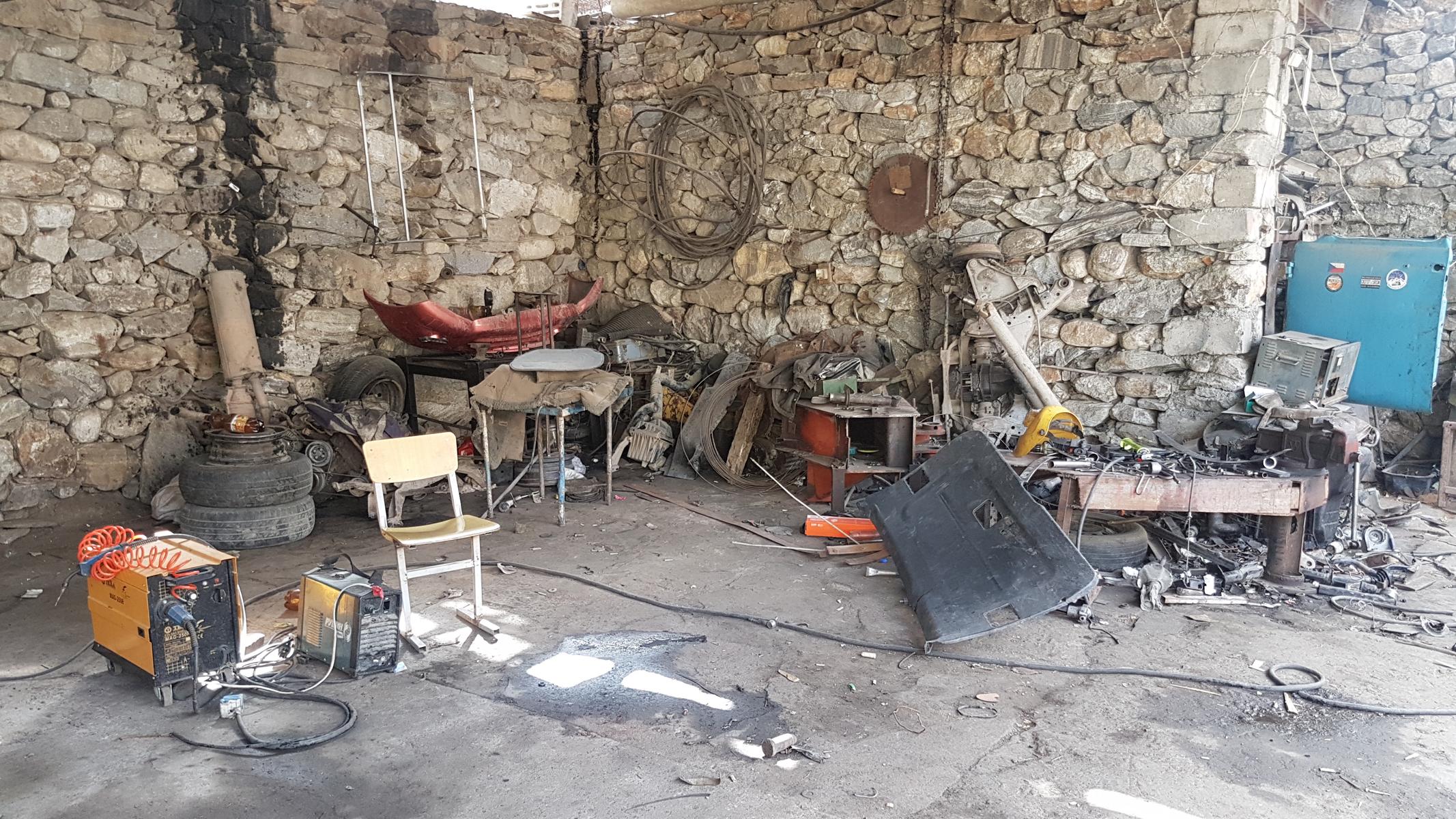

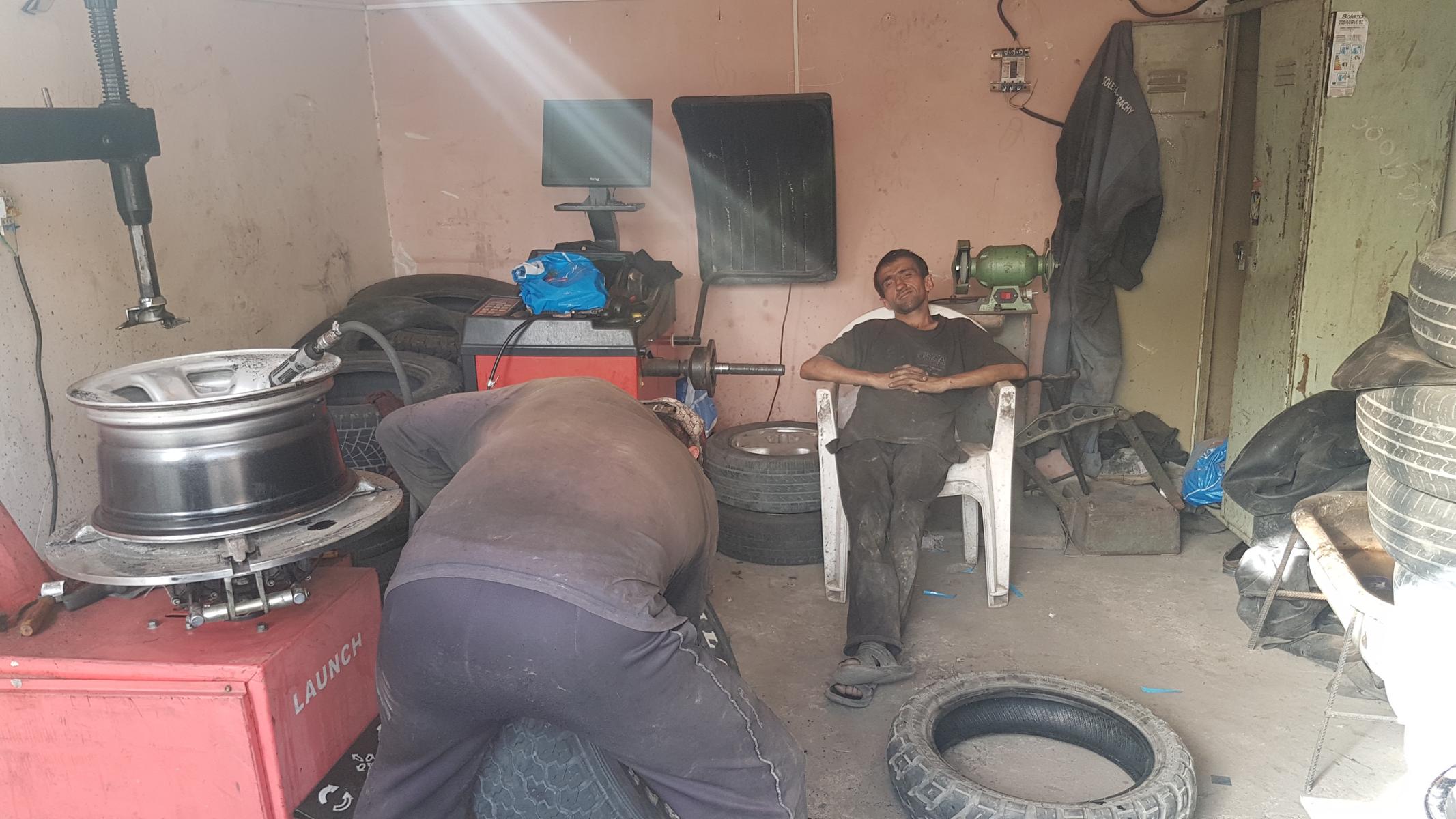
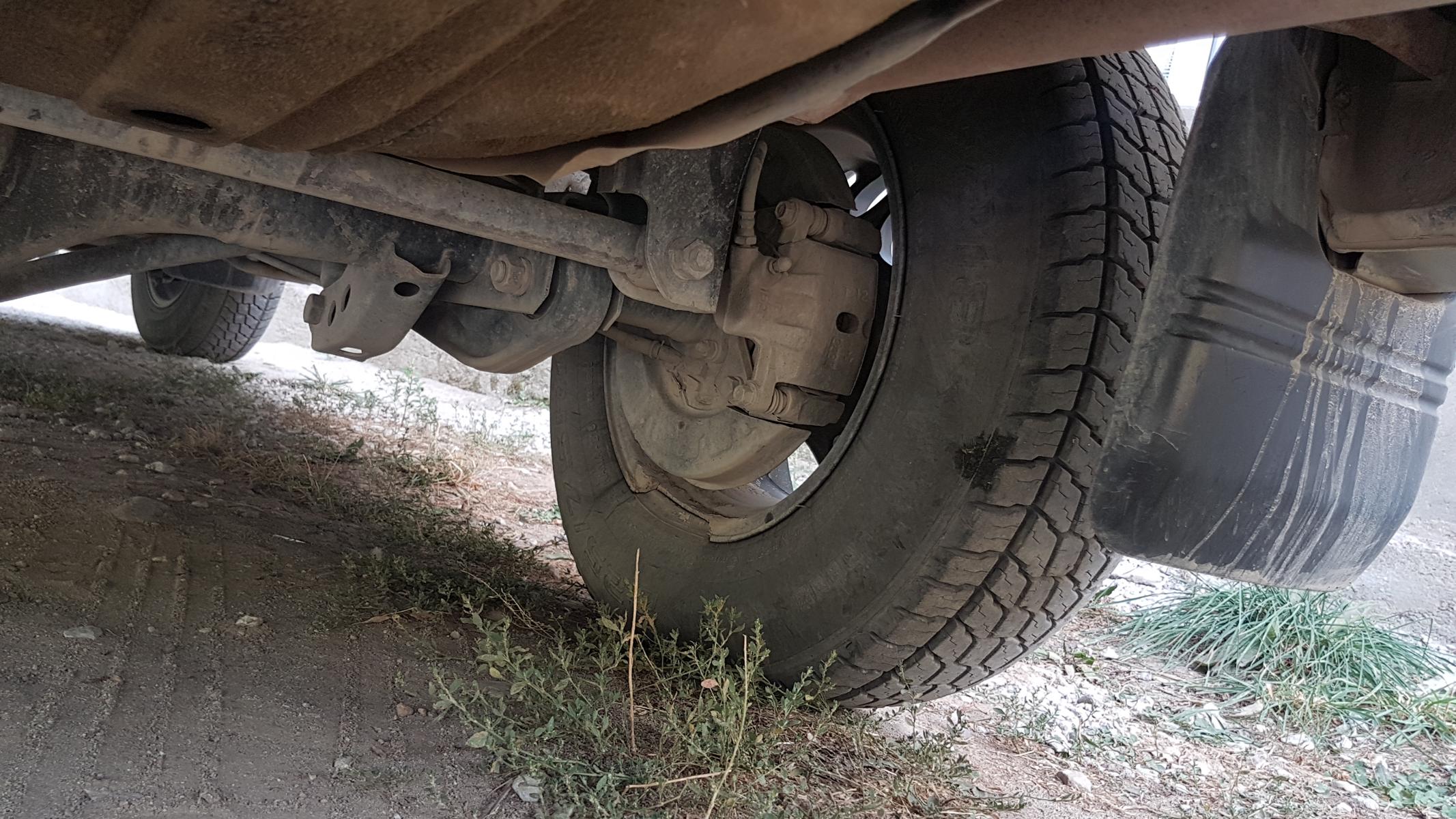
Back in Ishkashim we mounted the rear tire back on the V-Strom. With this less-than-ideal-solution we decided to ride back to Khorugh and take the M41 from there to Osh. If the tire loses air again we hoped to at least find some truck there. At the Pamir Lodge in Khorugh we felt like coming home. For the first time since we left a week ago we had an internet connection. We also enjoyed a cup of real espresso at the PECTA office where we met Mirzo again.
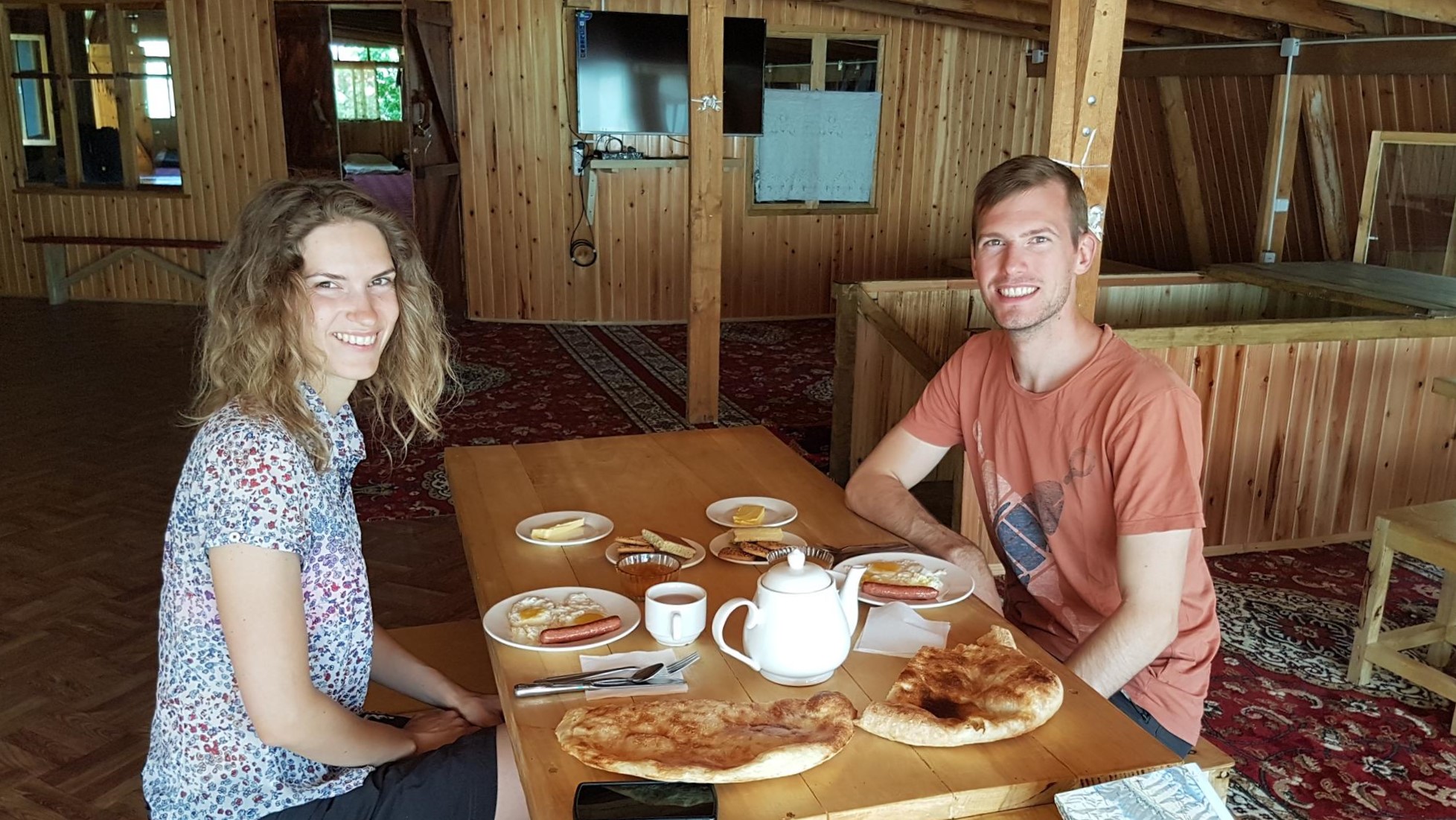
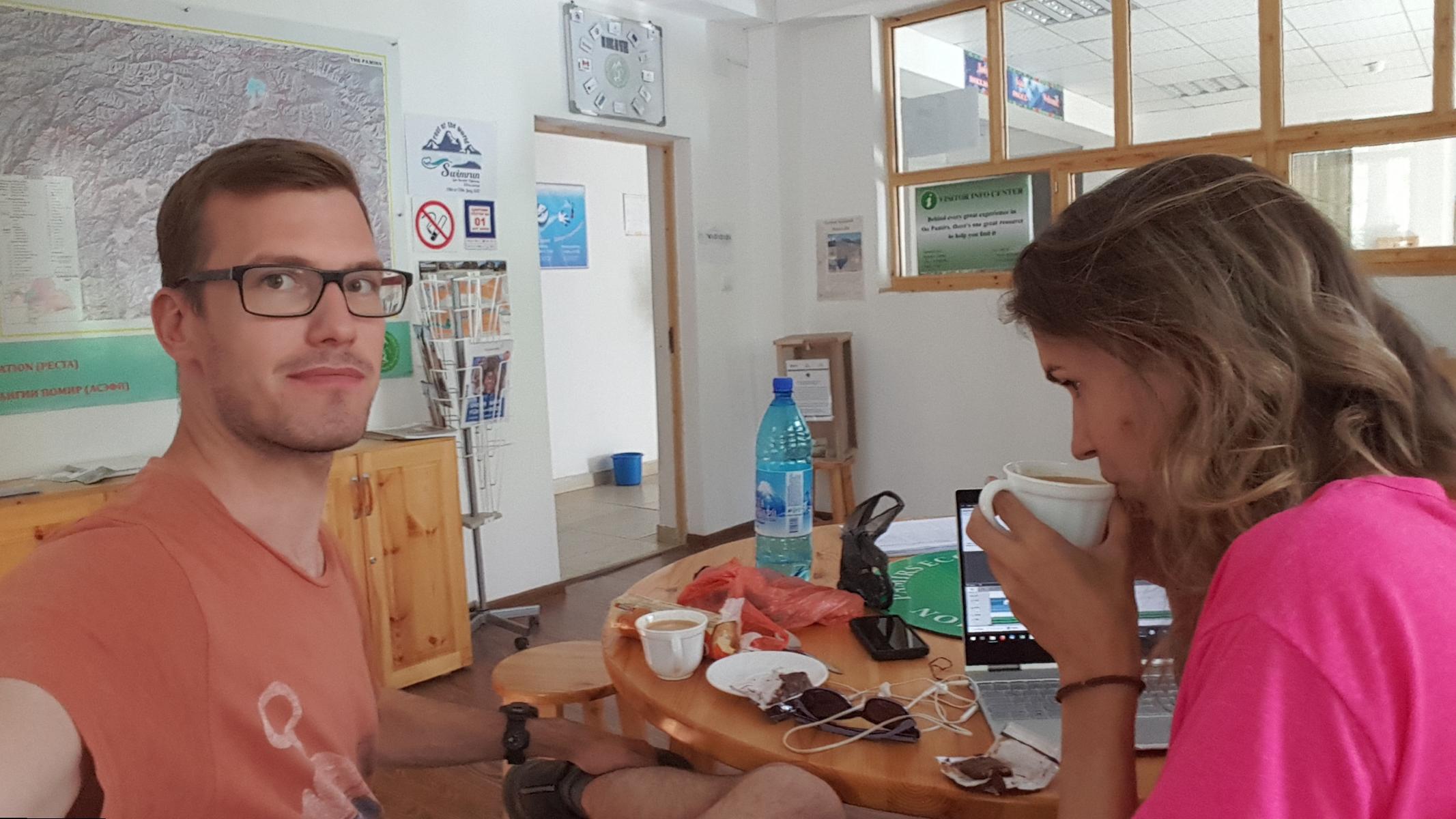
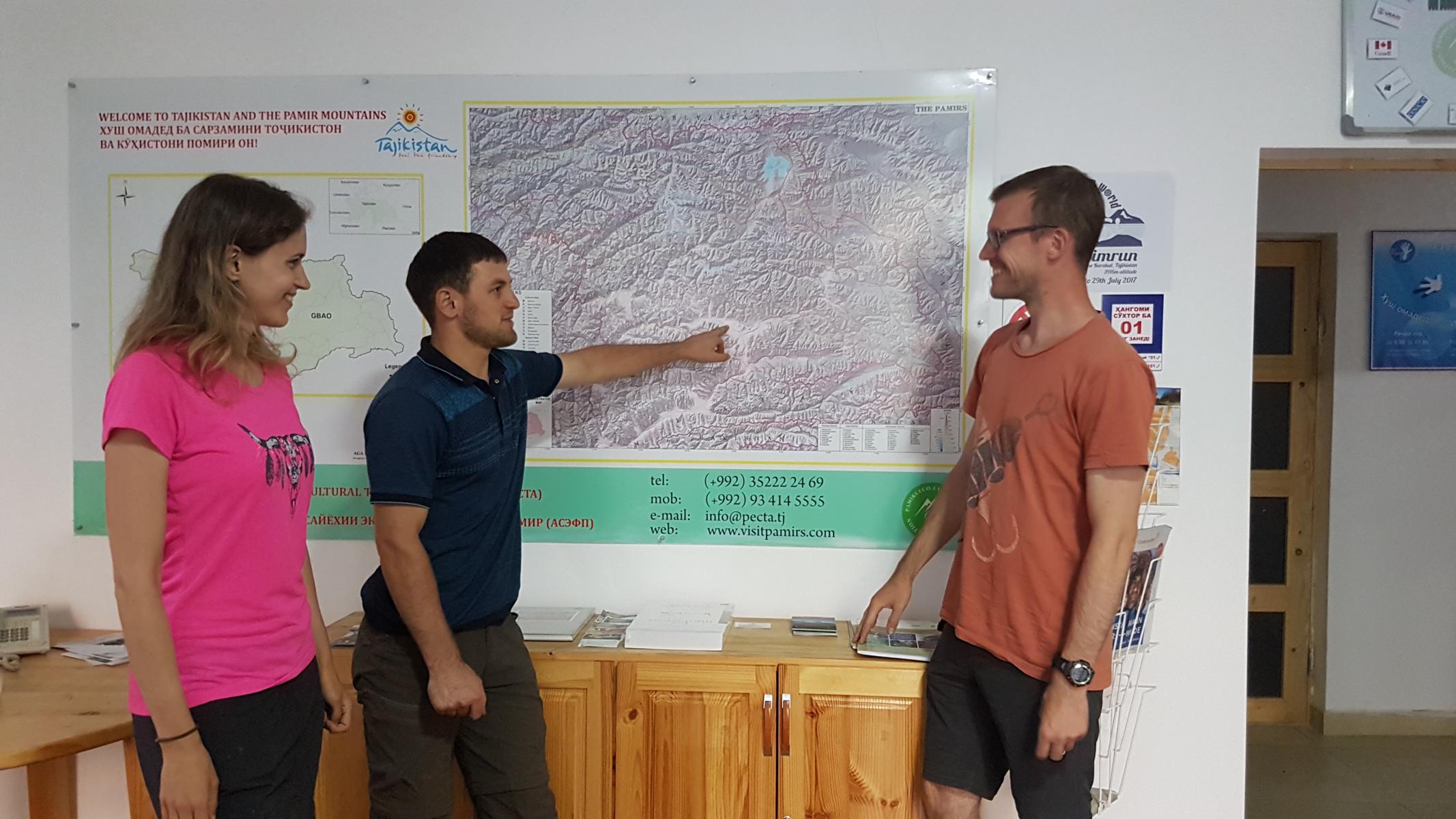
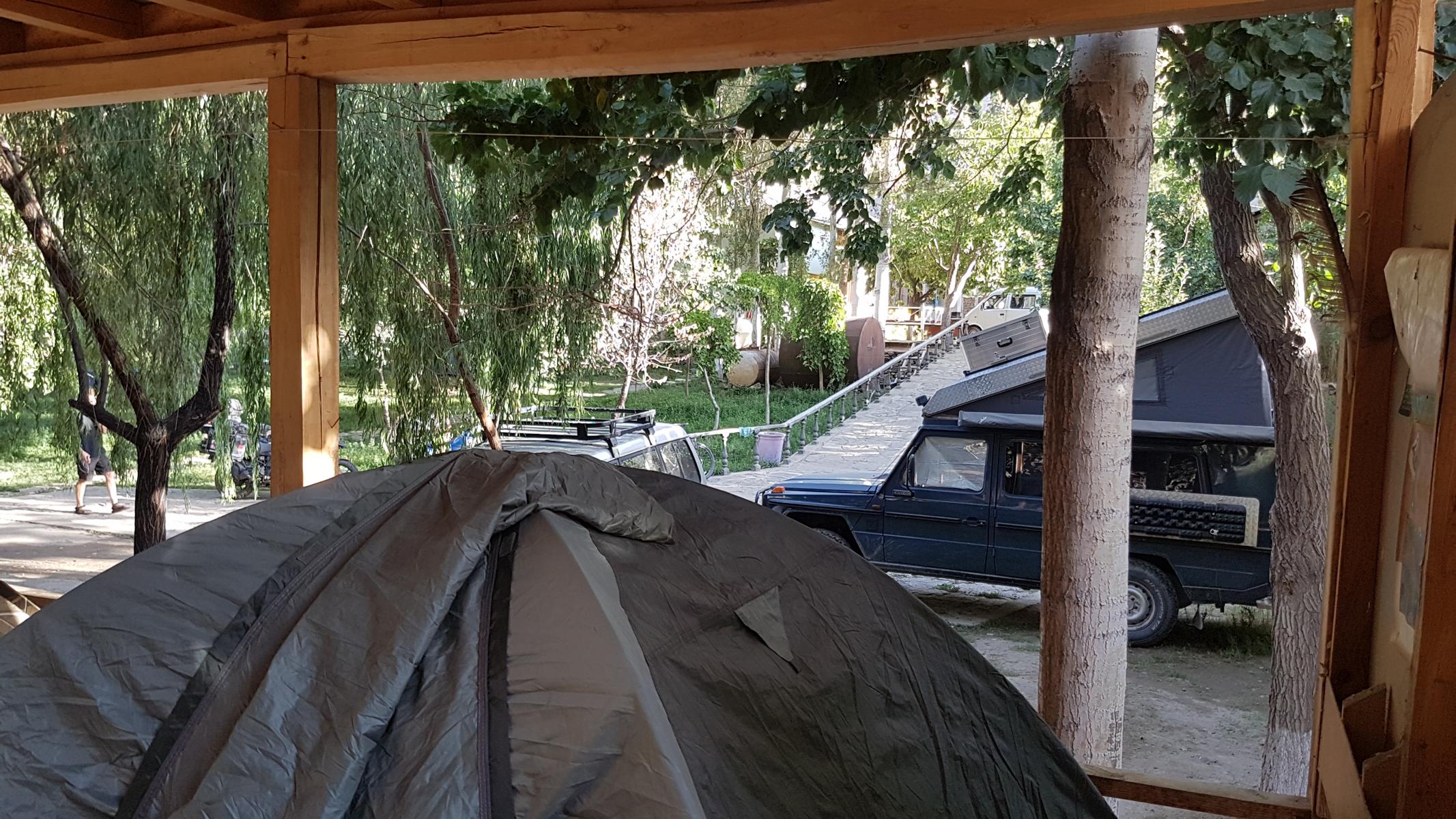
Like before we met many other travelers from different countries. What we didn’t expect was to get to know our neighbors at that place. Astrid and Christian lived only five minutes away from us in Vienna. They travelled around the world with a 30-year-old Puch/Mercedes G-Class. At this moment we did not know, that we would meet them again months later in Cambodia.

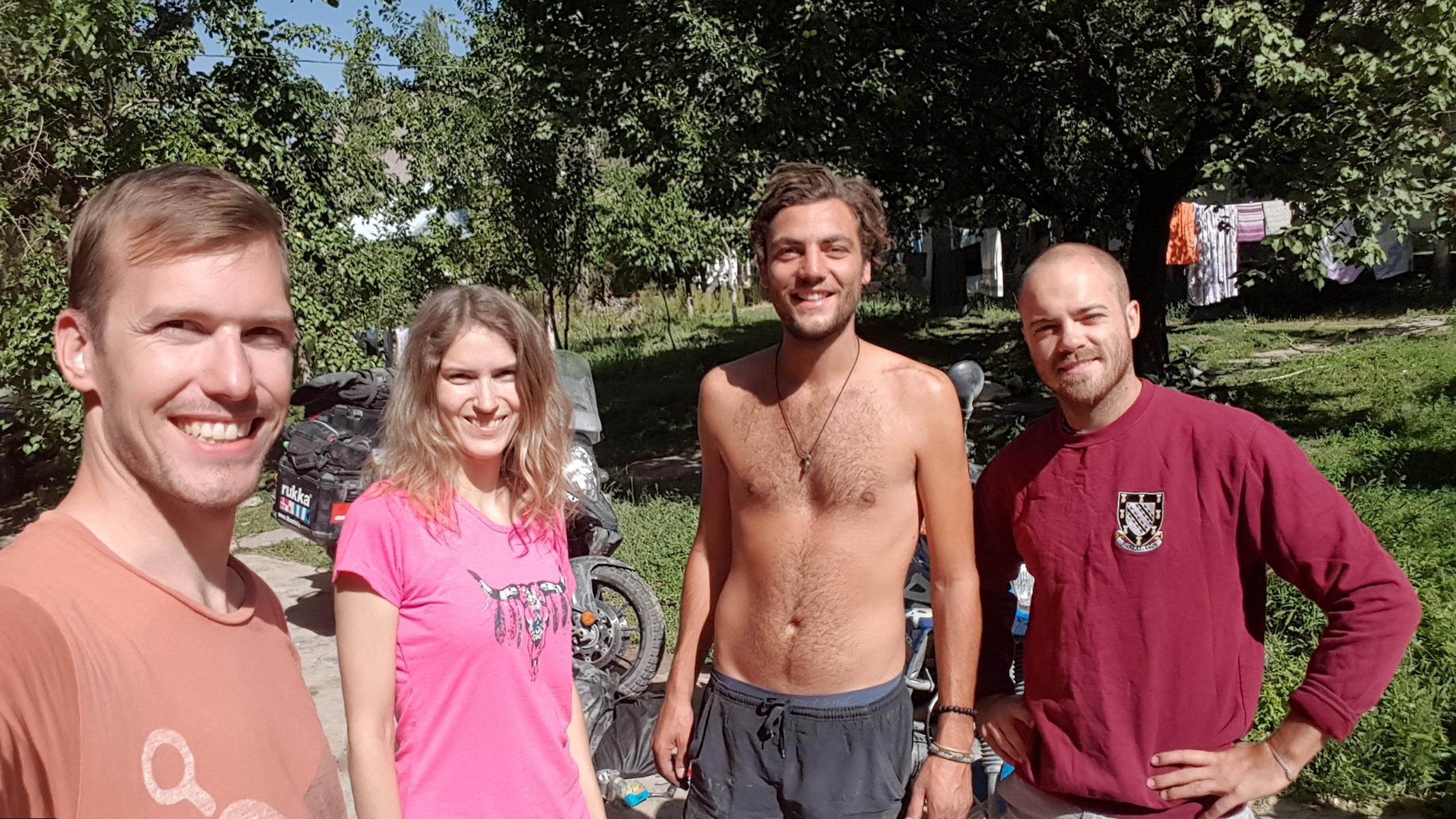
Outer space experience and lack of oxygen
Our ride from Khorugh started in the morning. On good roads at perfect weather conditions we enjoyed the fantastic mountain scenery. While taking a break we heard someone approaching from afar. It was Maxime from France, who was riding on his old Vespa from Paris to Mongolia.

Our destination was Yashilkul lake, a crystal-clear freshwater lake, surrounded by white sand and pebble plains at 3.700 meters altitude. On the last few kilometers we left the main road and rode on sandy paths. Like in Turkmenistan it was hard riding in the sand, but the blue lake and unique landscapes were definitely worth the effort.
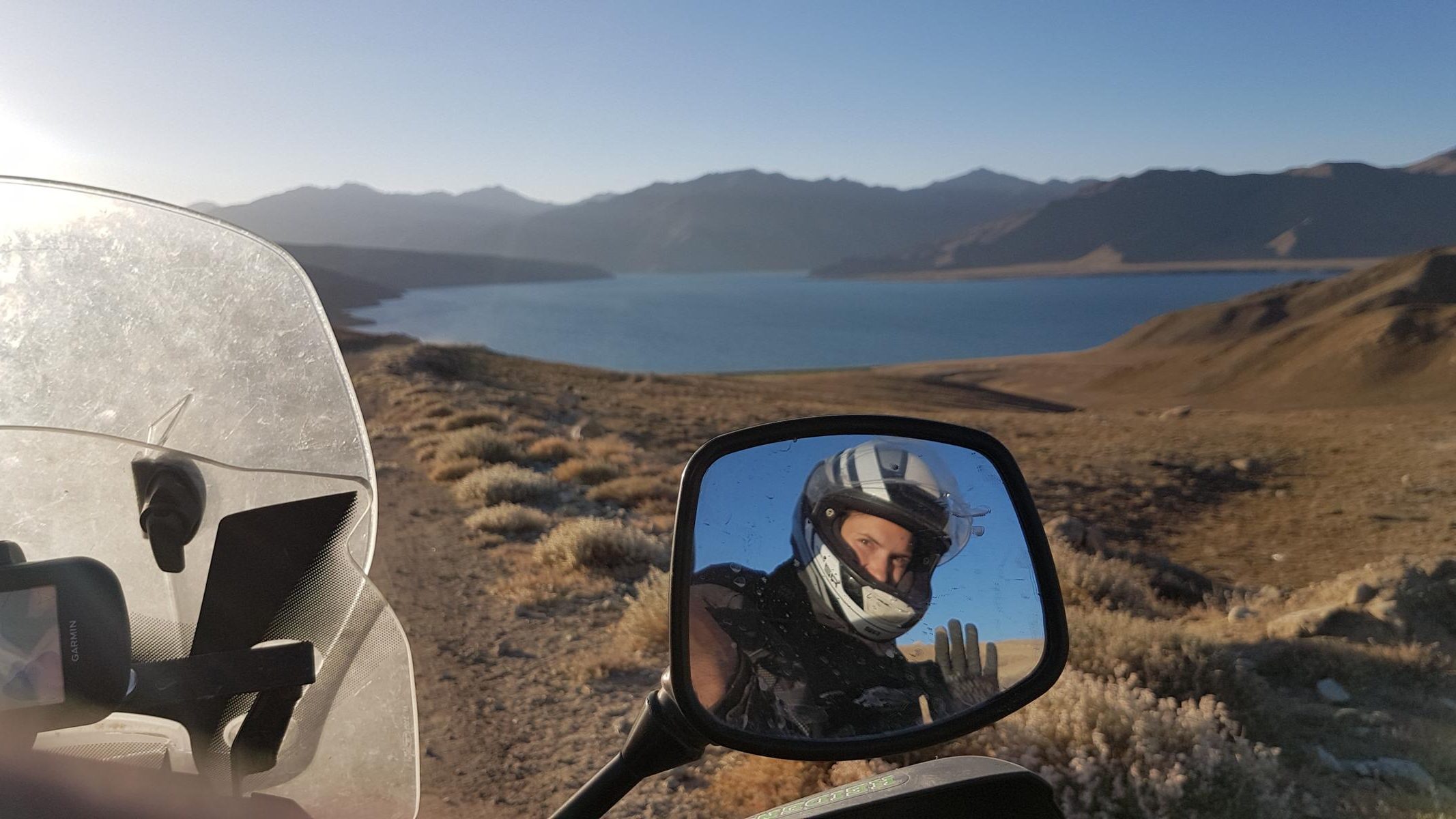
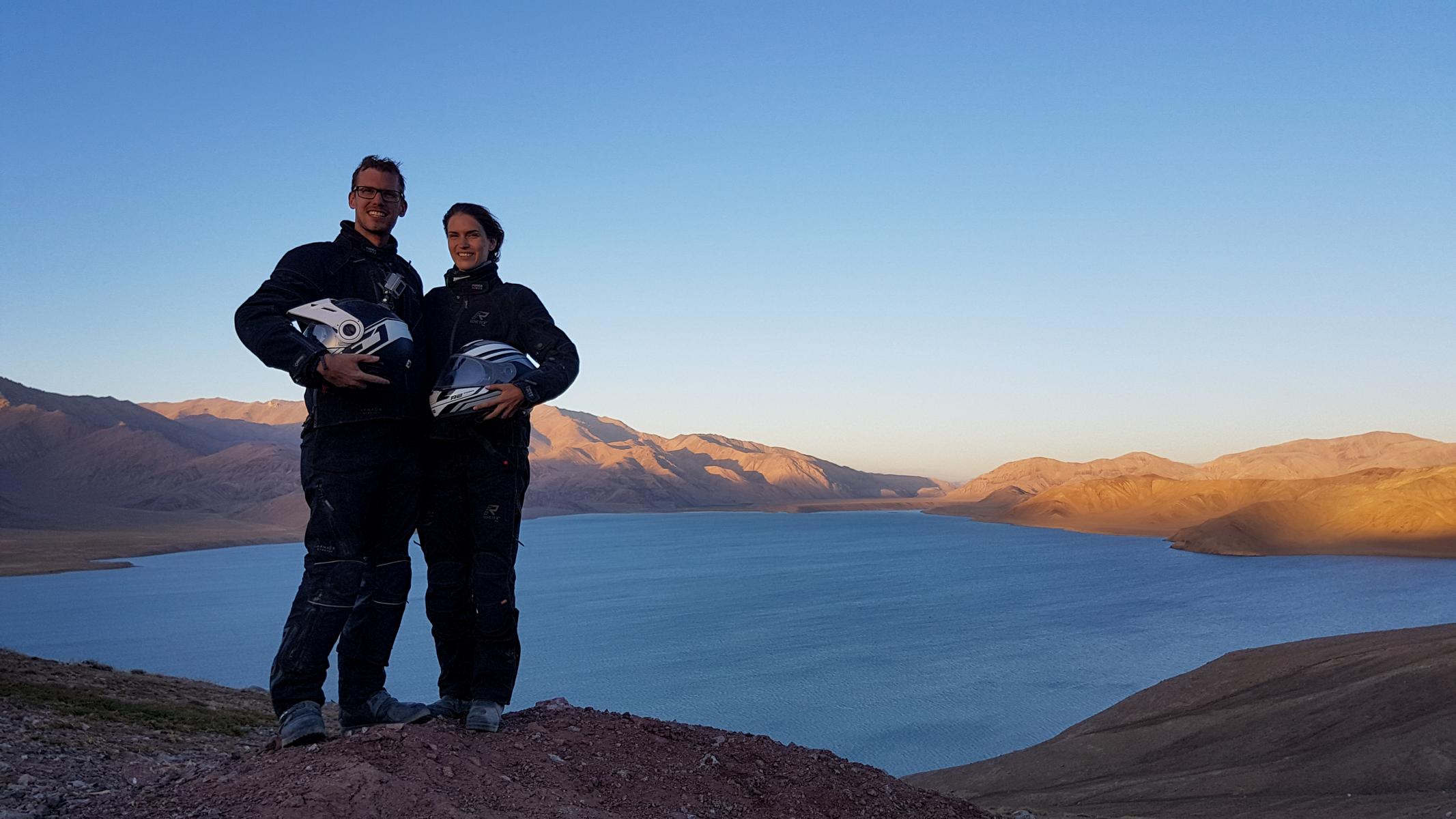
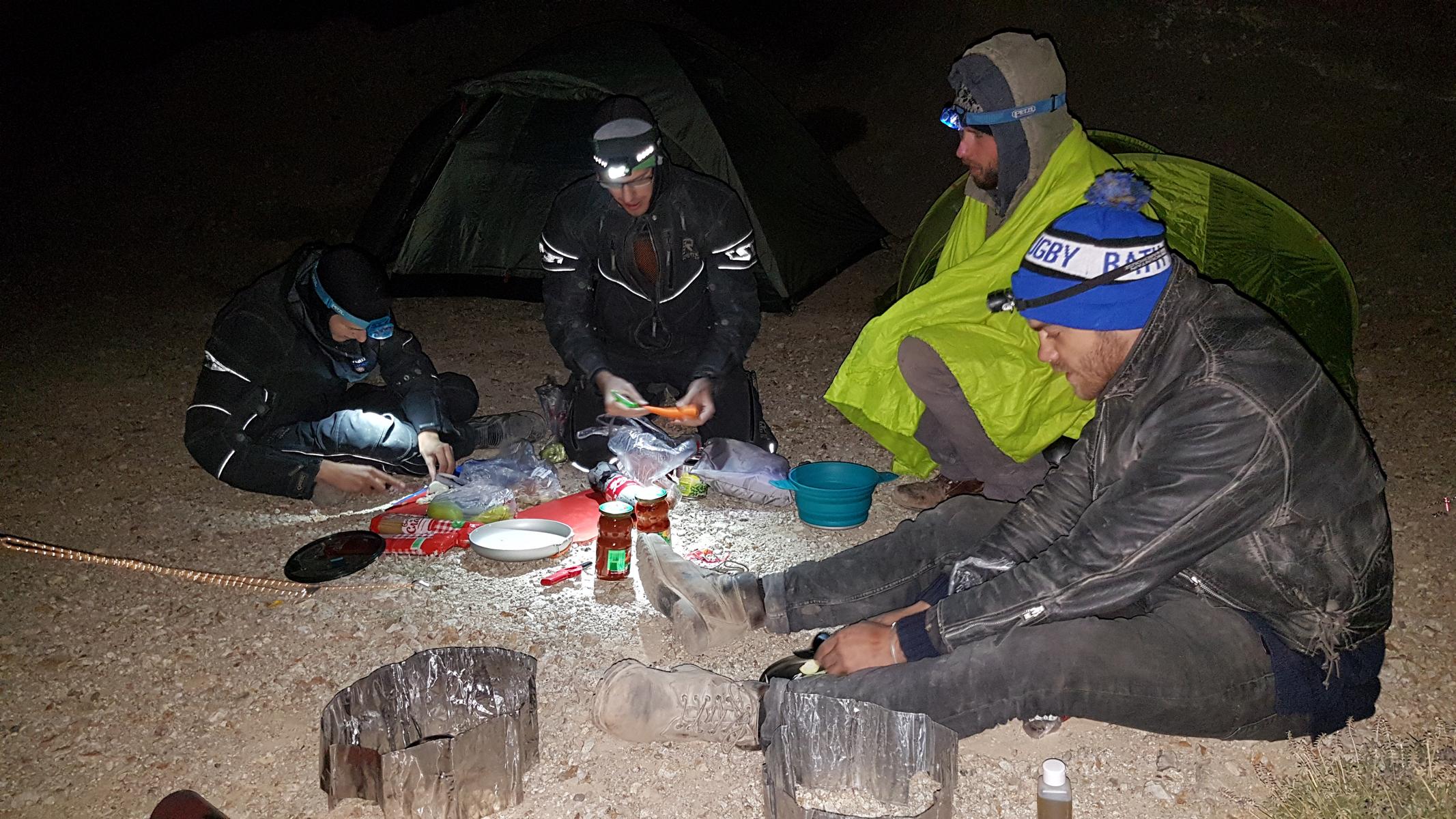
The next morning we woke up with a huge headache. Our hearts were racing much faster than normally to get some oxygen. The lack thereof was noticeable at 3.700 meters above sea level. Easy tasks like packing away the tent felt like running a marathon. Particularly Claudia didn’t like to think about accelerating even more to 4.500 meters in the next few days.
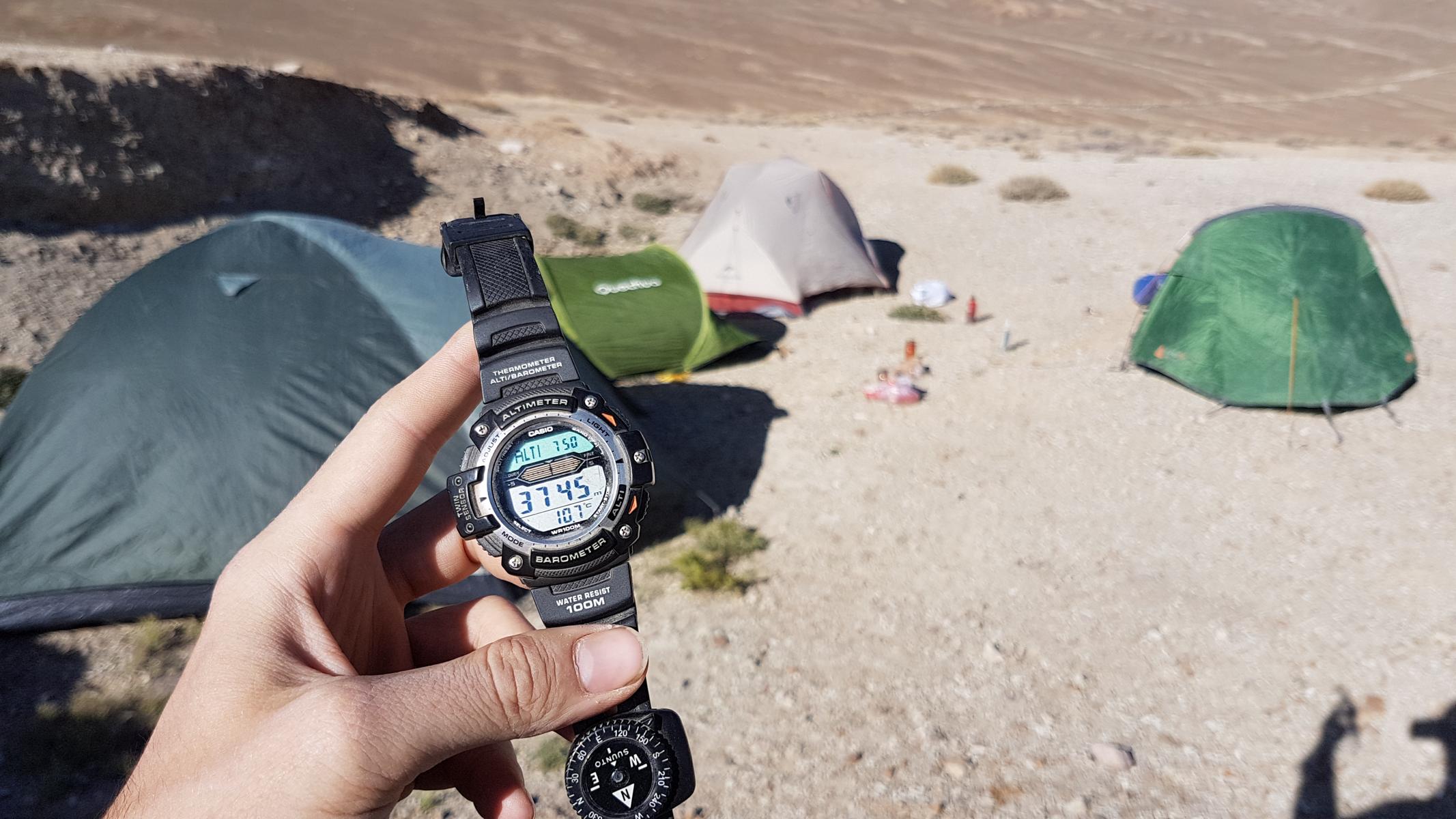
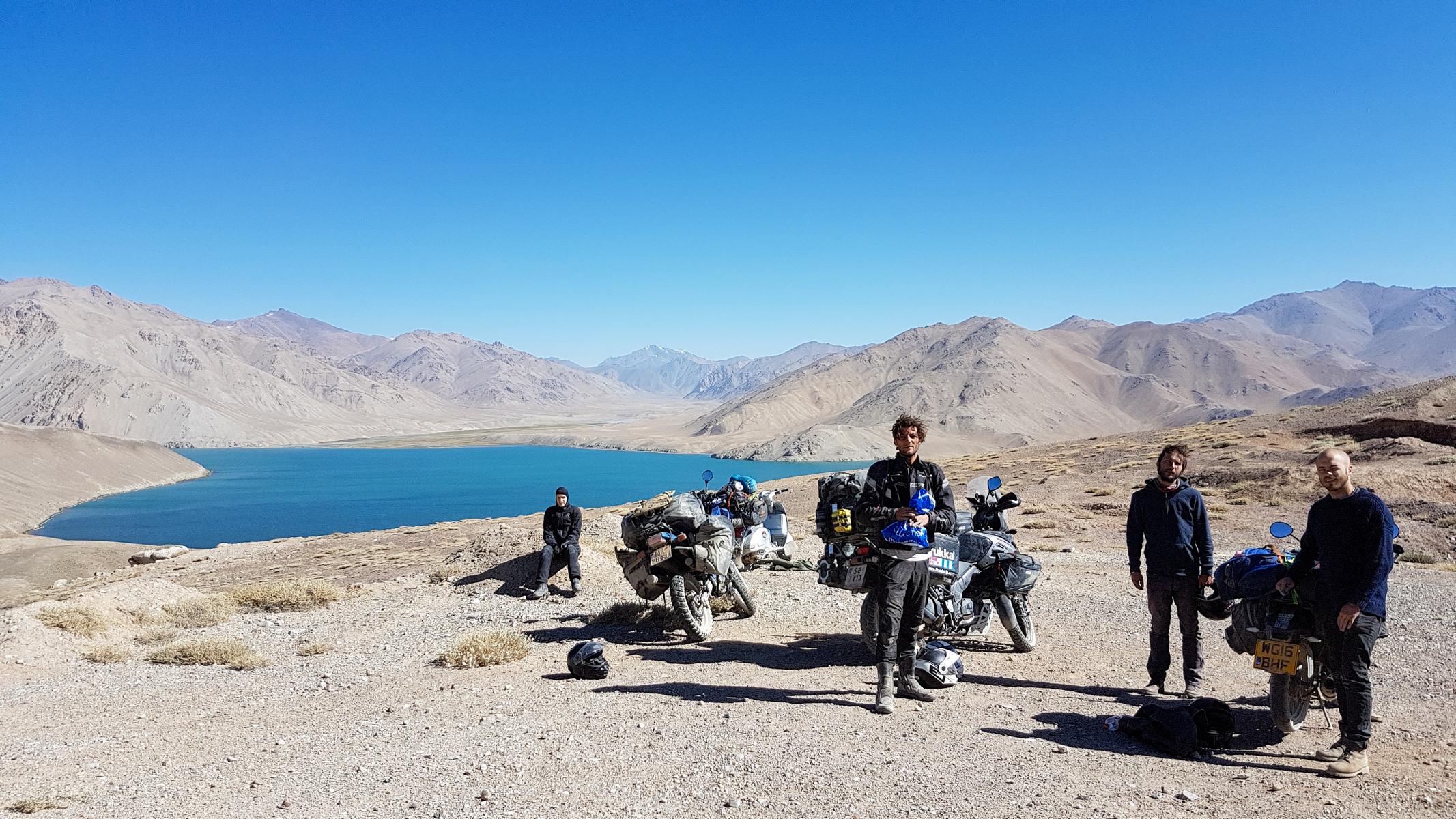
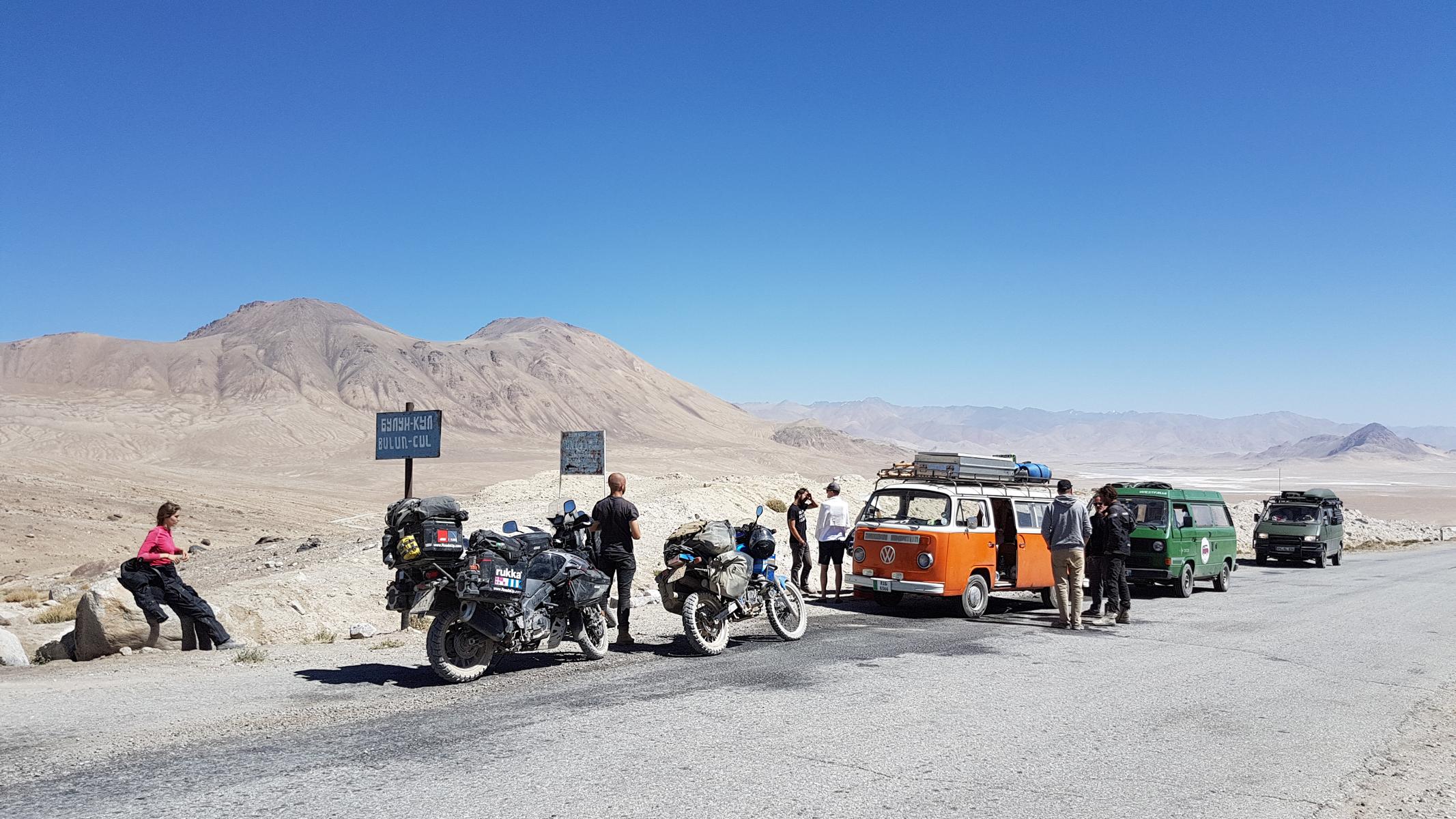
The road to Murghab went along fantastic scenery. There were hardly any plants growing at more than 3.000 meters above sea level. The landscape looked like being from outer space. Although it was cold, the sun was shining. There was not a single cloud on the clear blue sky.
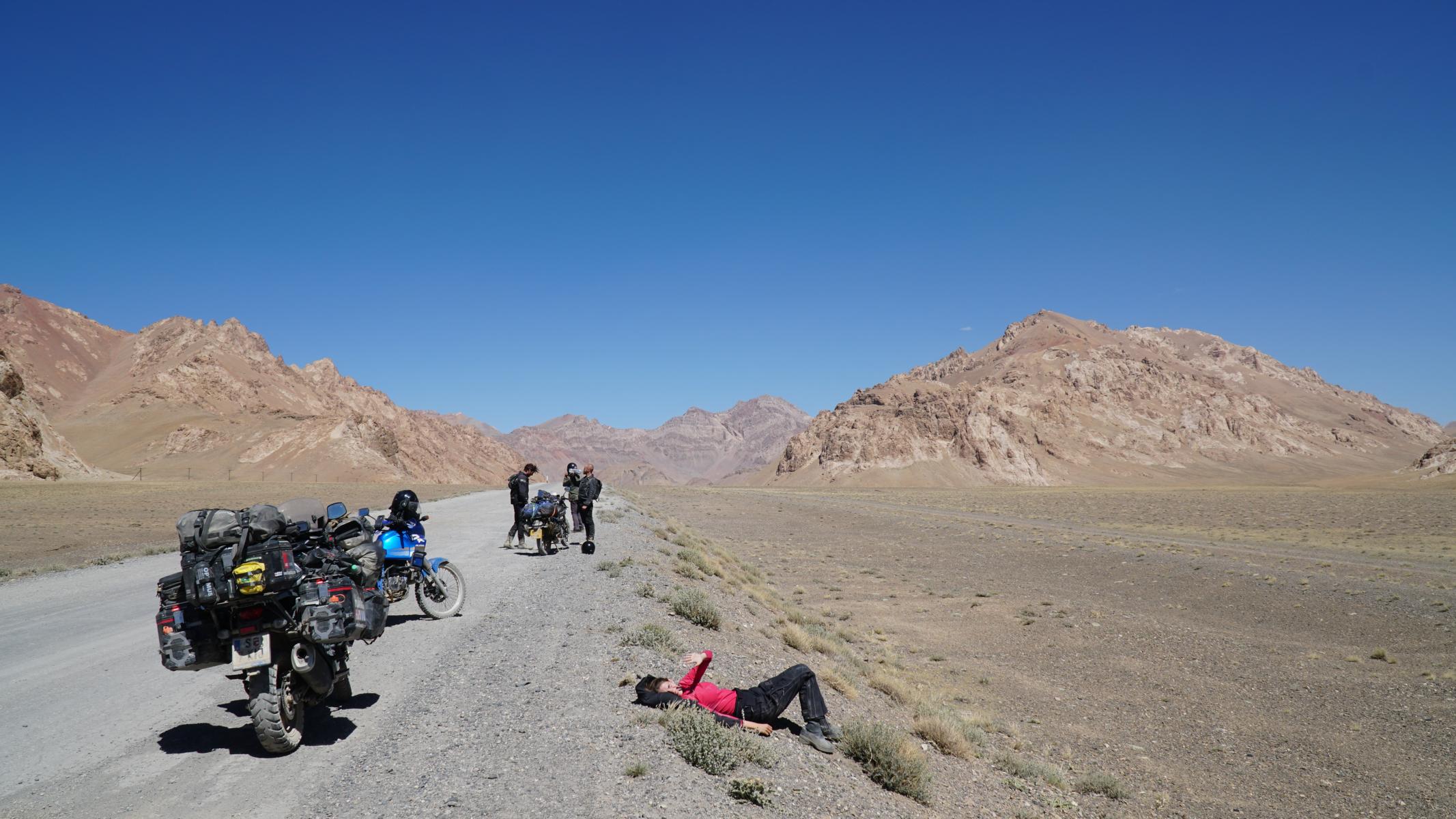
As we went closer to Murghab, a former Russian military outpost, we were surprised to see how people were living in that kind of area. Daily life must be really hard especially in winter. The warmest month is July with about 8,7 °C average. January is the coolest month with an average temperature of -18,7 °C. Nevertheless children were playing happily. We took a break at a small guesthouse to have some soup for lunch.
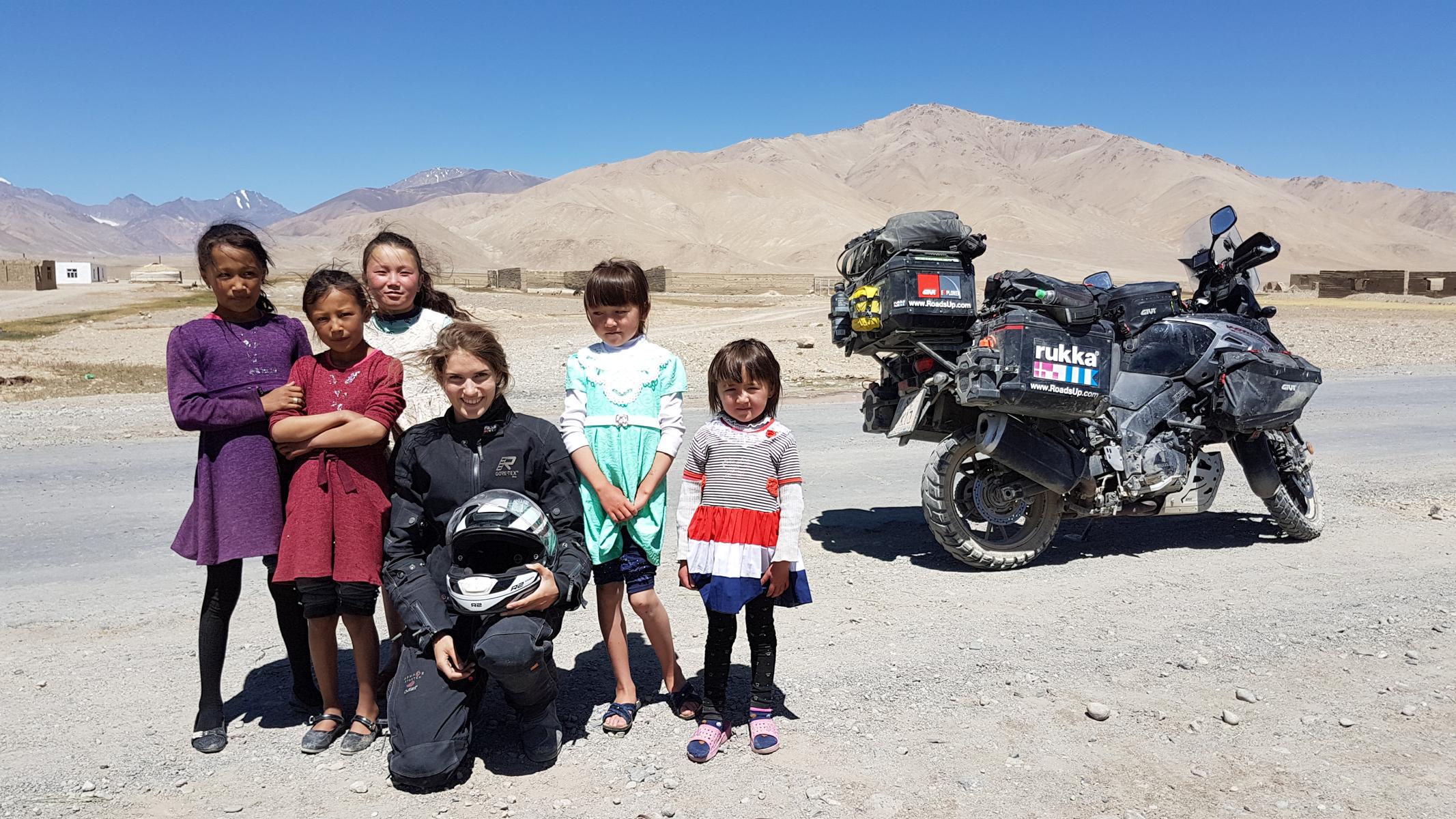
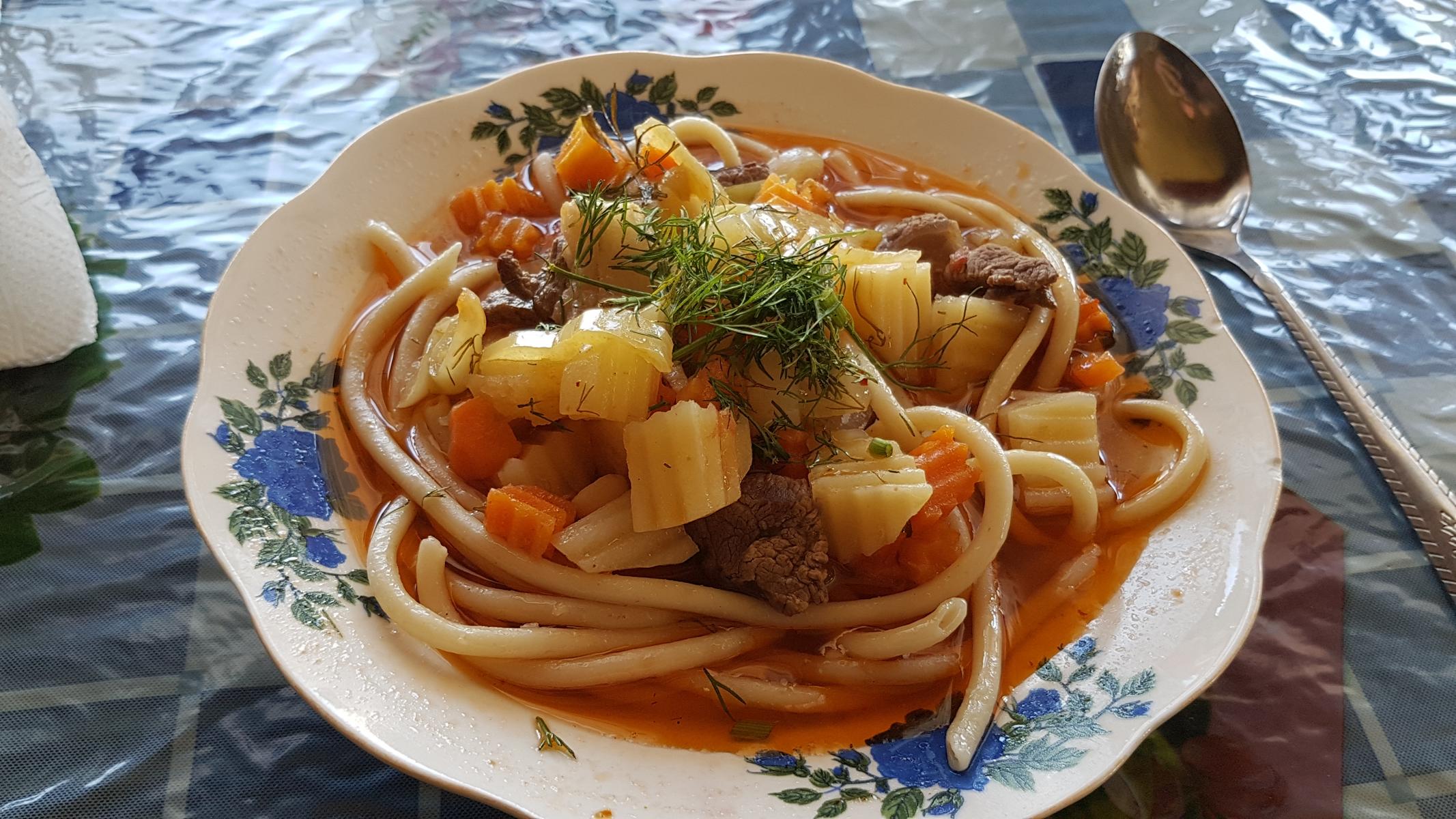
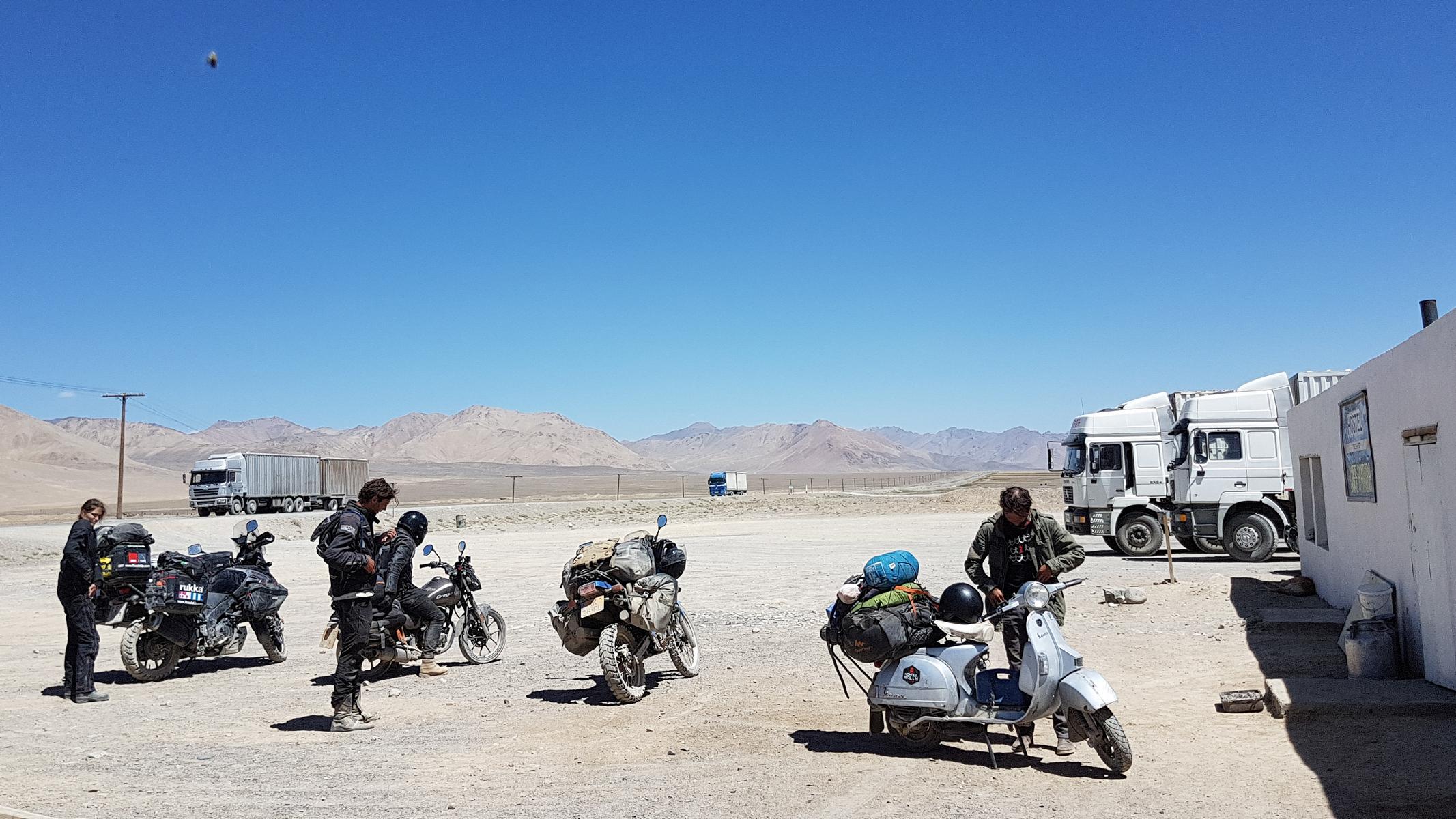
As we arrived in Murghab, the highest town in Tajikistan, at about 3600 meters above sea level, all of us were extremely exhausted. We were happy to find a hostel, where the five of us slept together in a dorm room. There was no internet and electricity only worked between 7 and 8 pm when they put on the generator. The friendly lady from the hostel showed us the simple toilet and the bathroom, where she heated up a bucket of water for us. With a paddle we could mix the boiling water with the cold to get a comfortable temperature to wash ourselves.


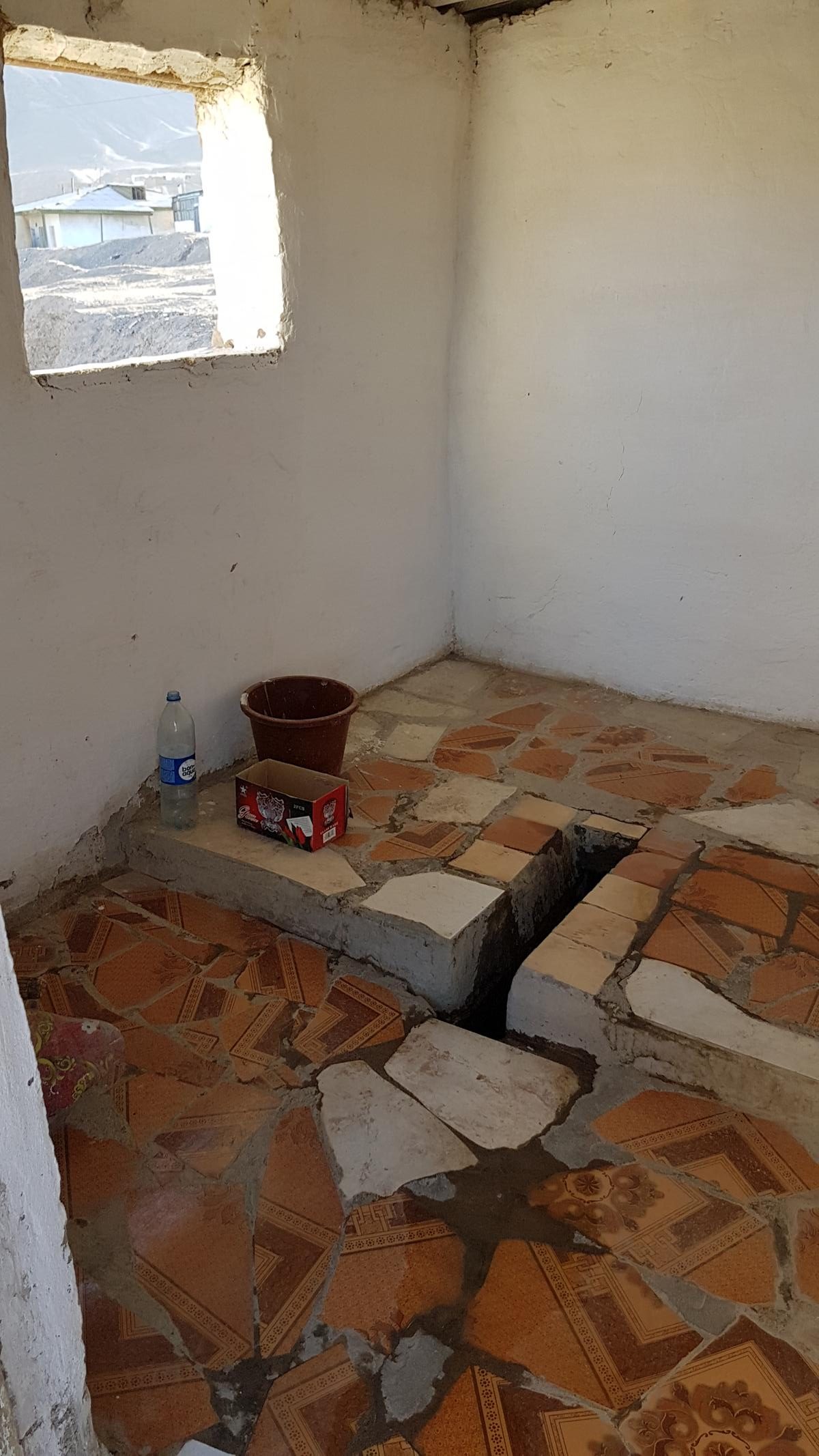
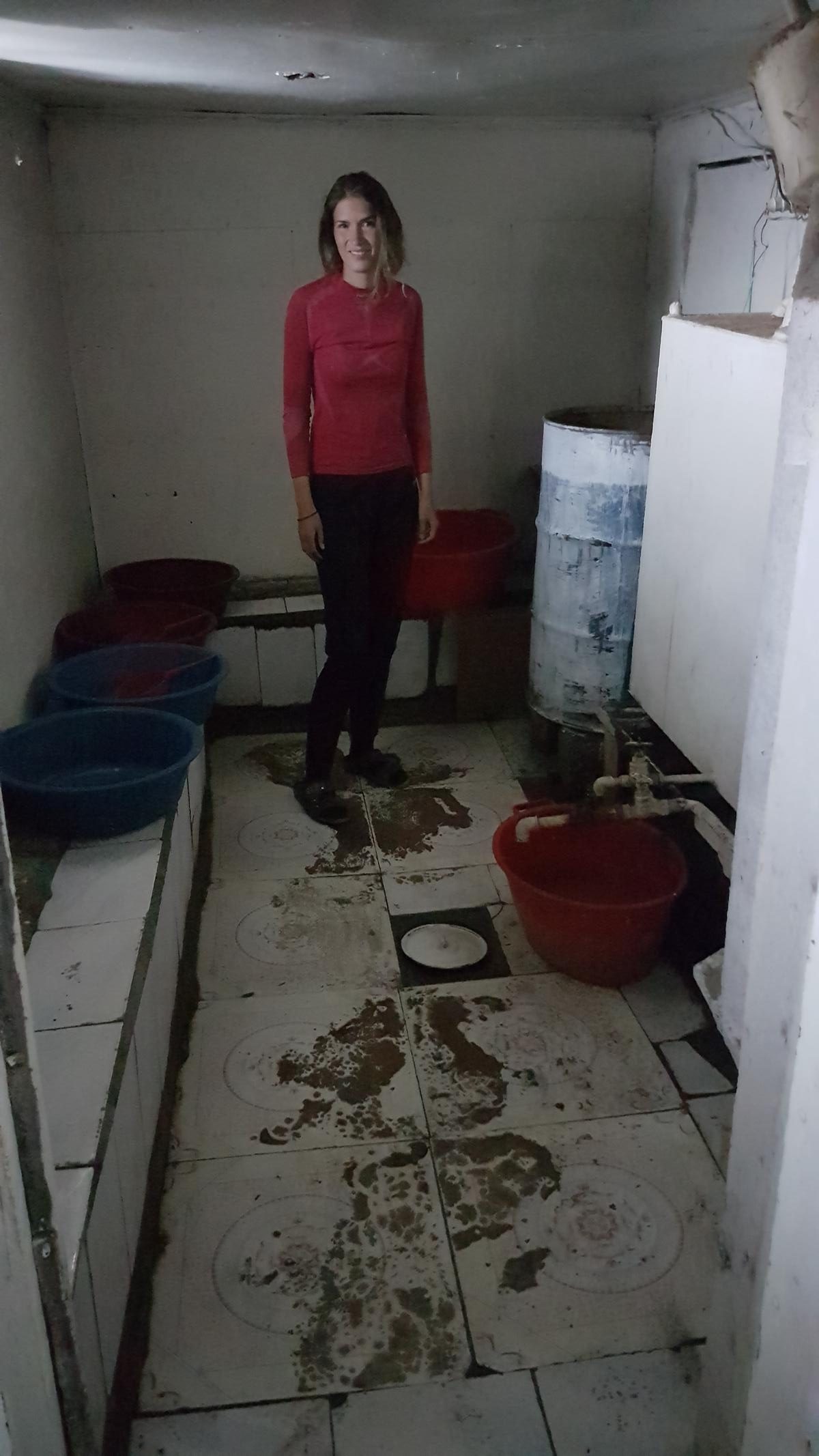
The following day we had to cross the highest point of the Pamir Highway, the Ak-Baital Pass with 4.655 meters above sea level. On the way we once again passed amazing landscapes. Next to the road we noticed an extremely long military fence. Even though the official Chinese border is still a few kilometers away, the Chinese have built these barriers. Tajik people who live behind them are no longer allowed to control their country. Locals told us that the Chinese government was moving the border farther and farther into Tajikistan.
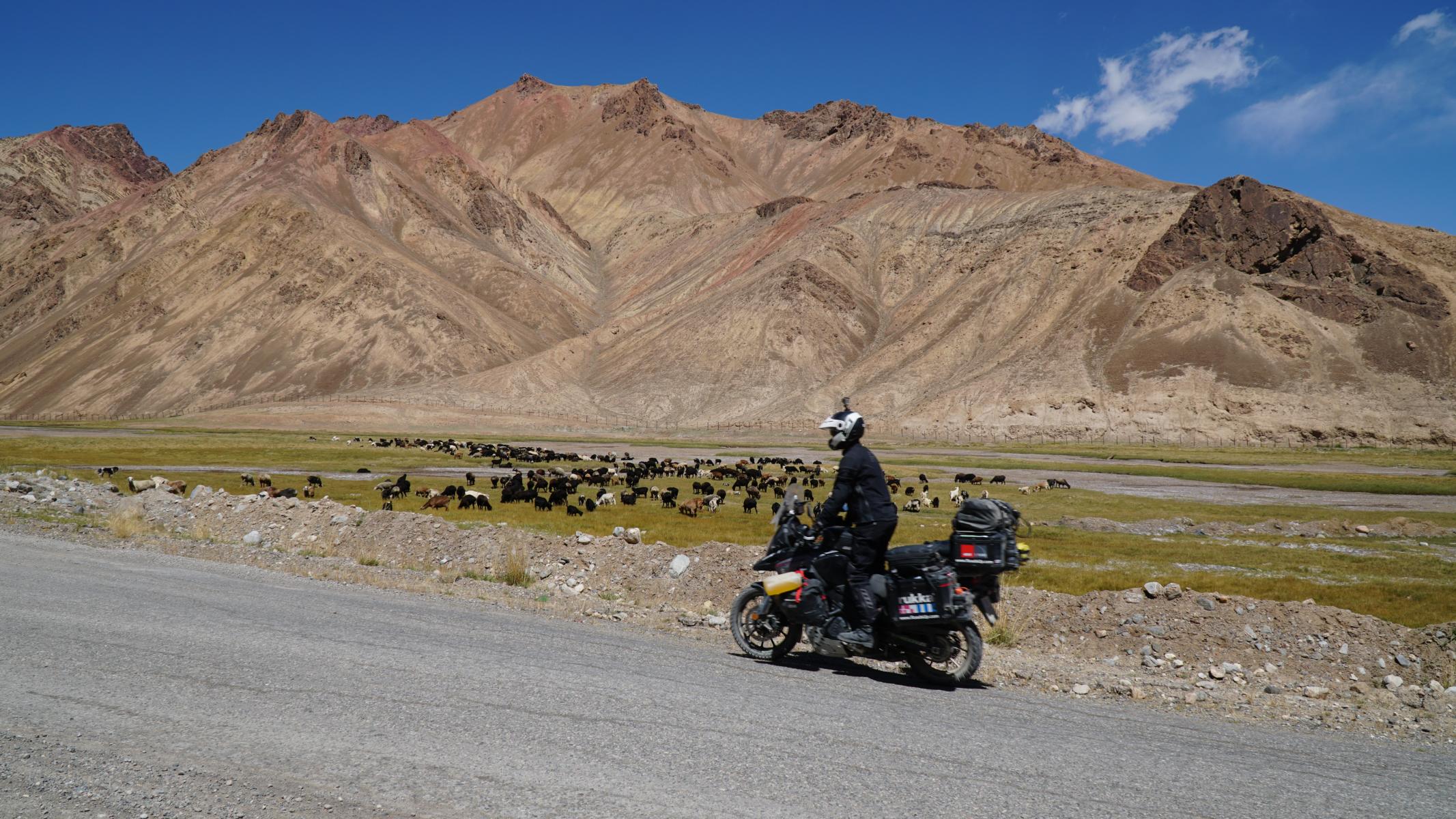
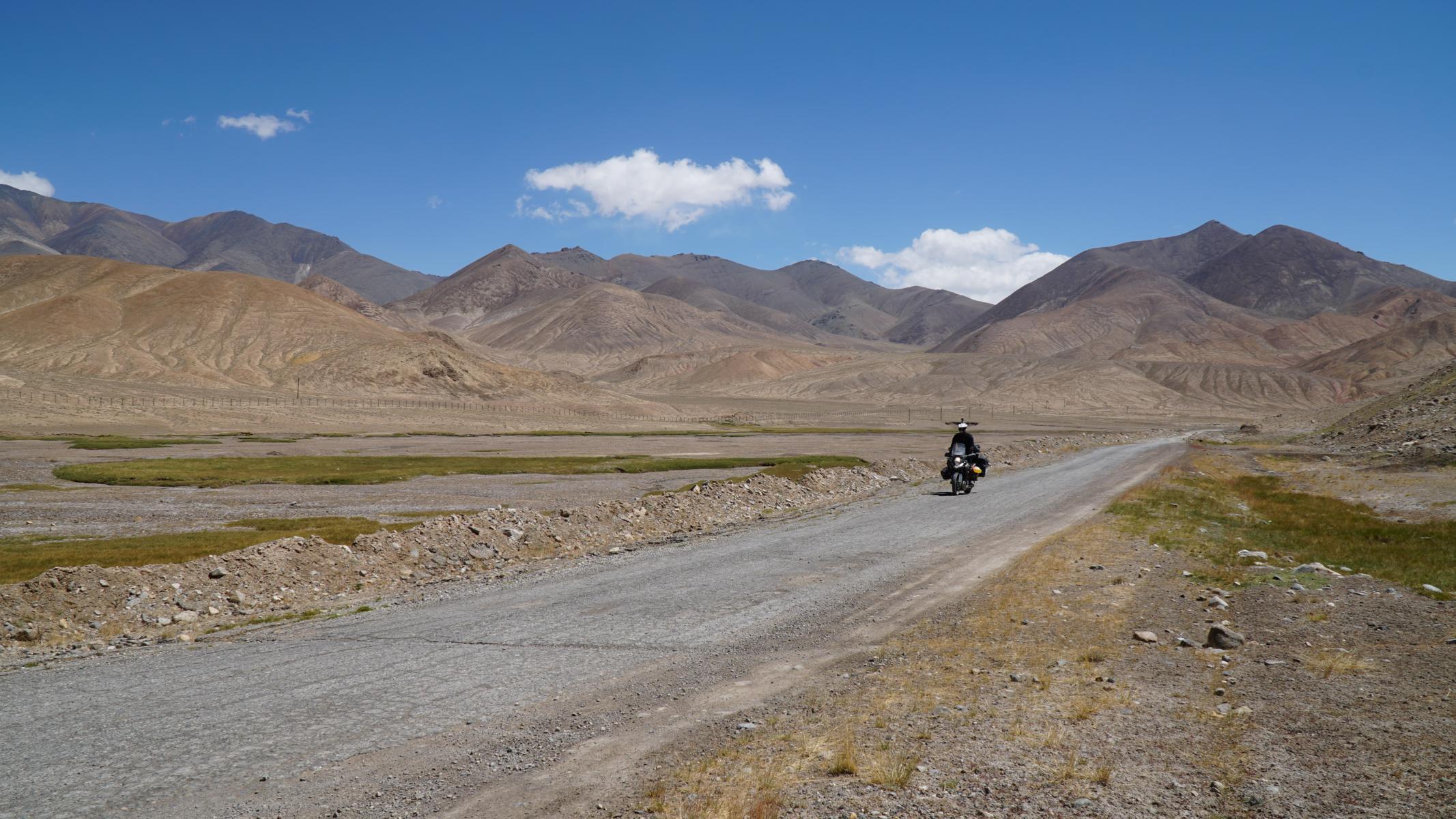
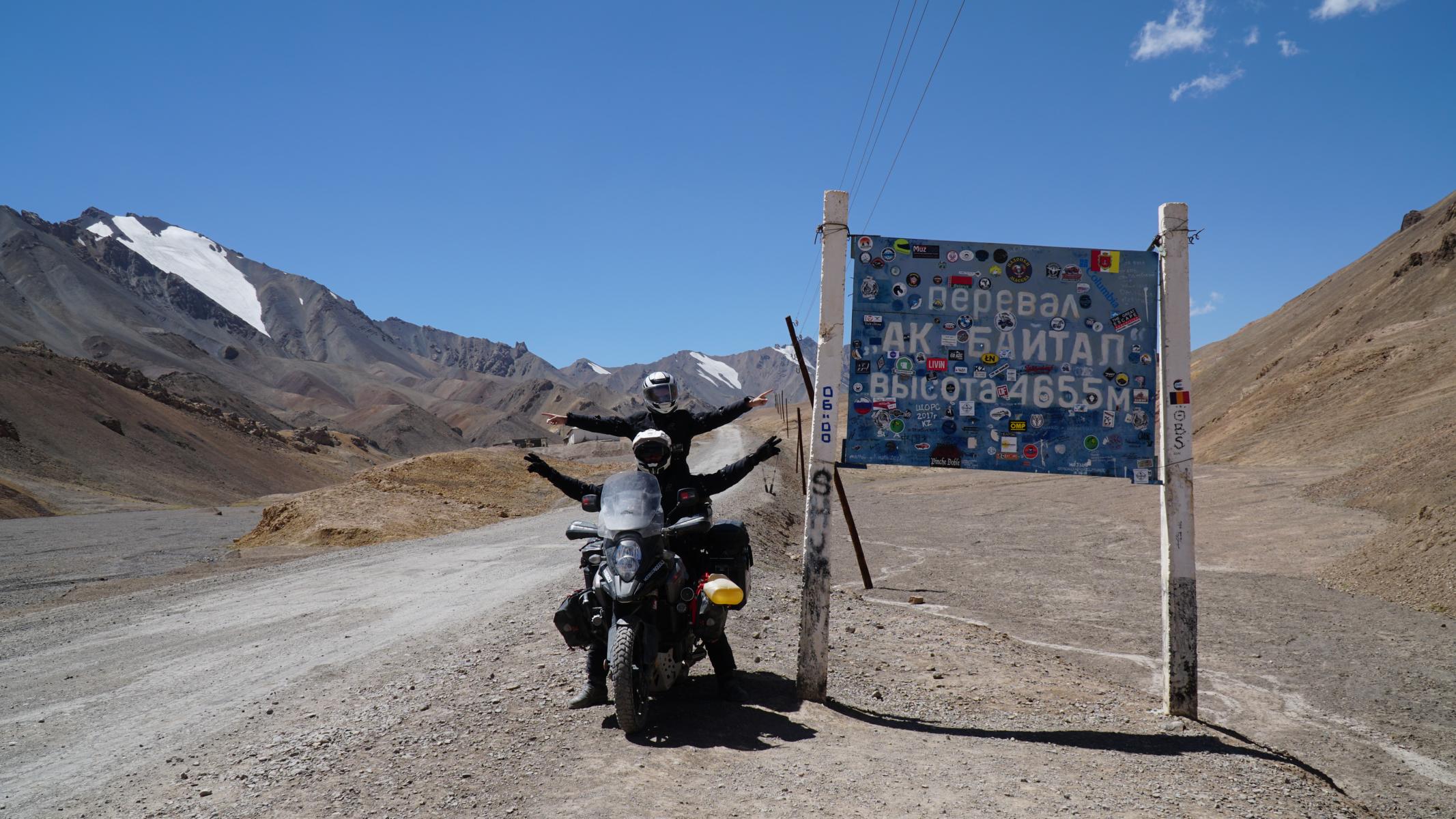
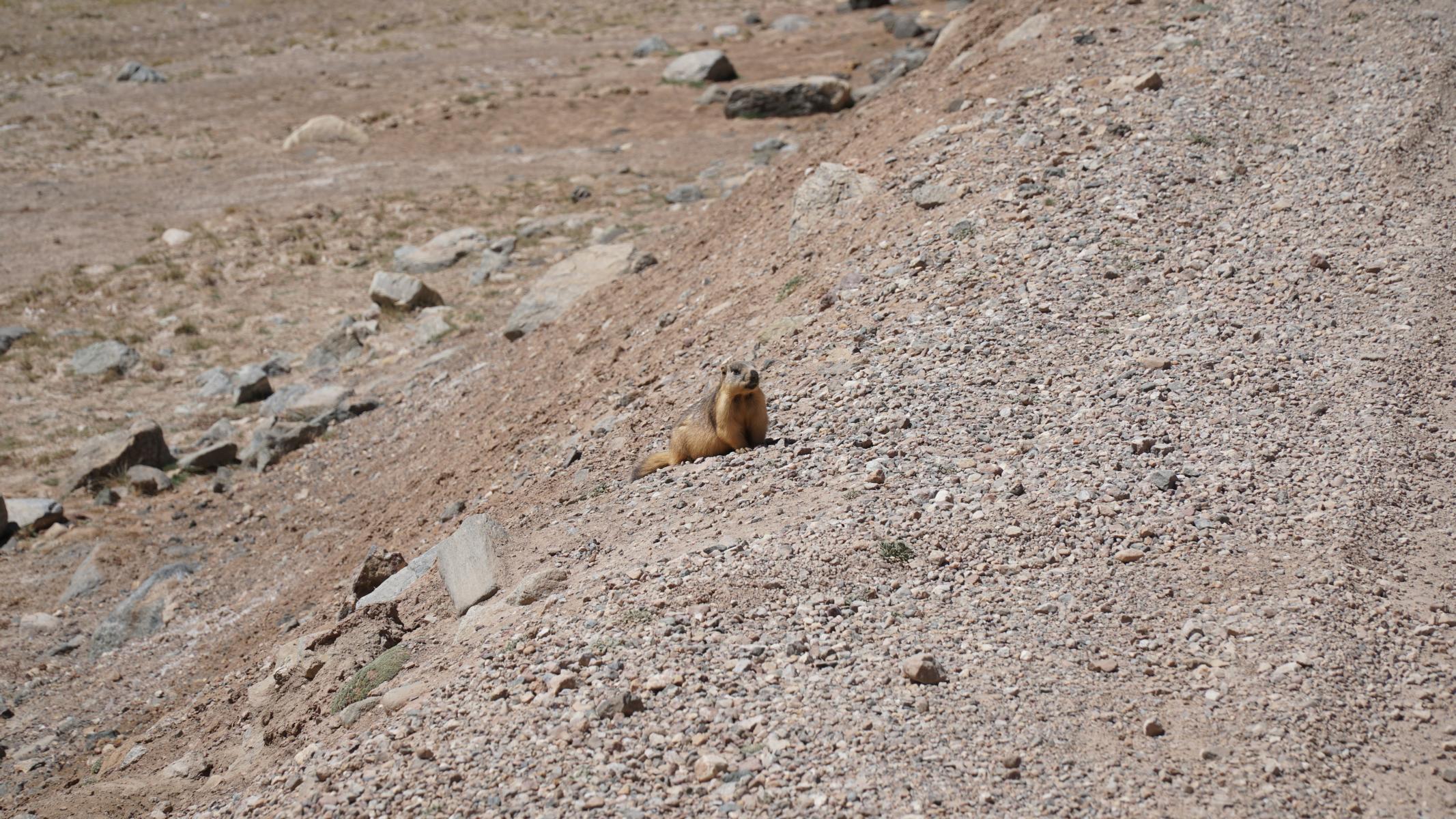
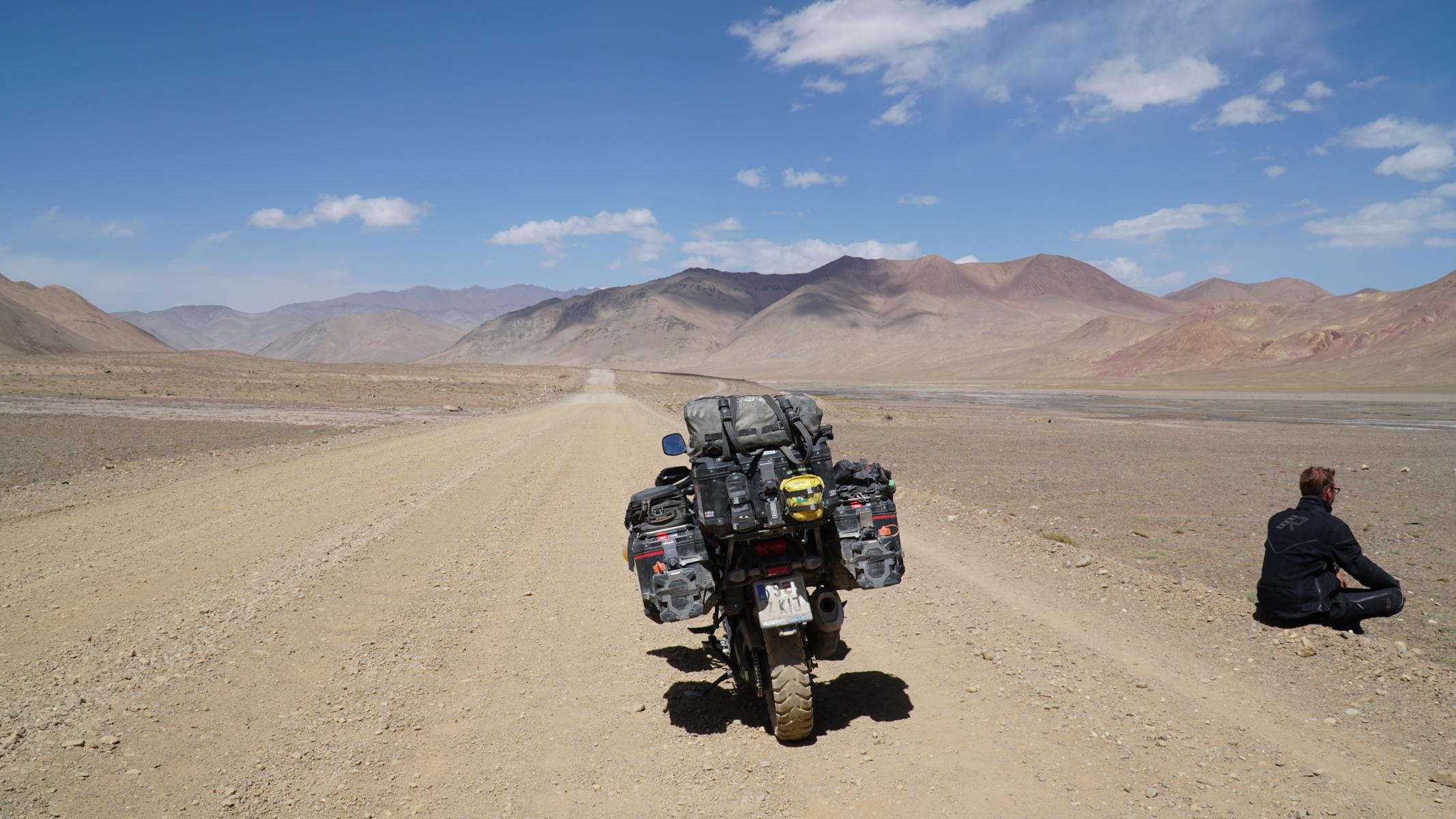
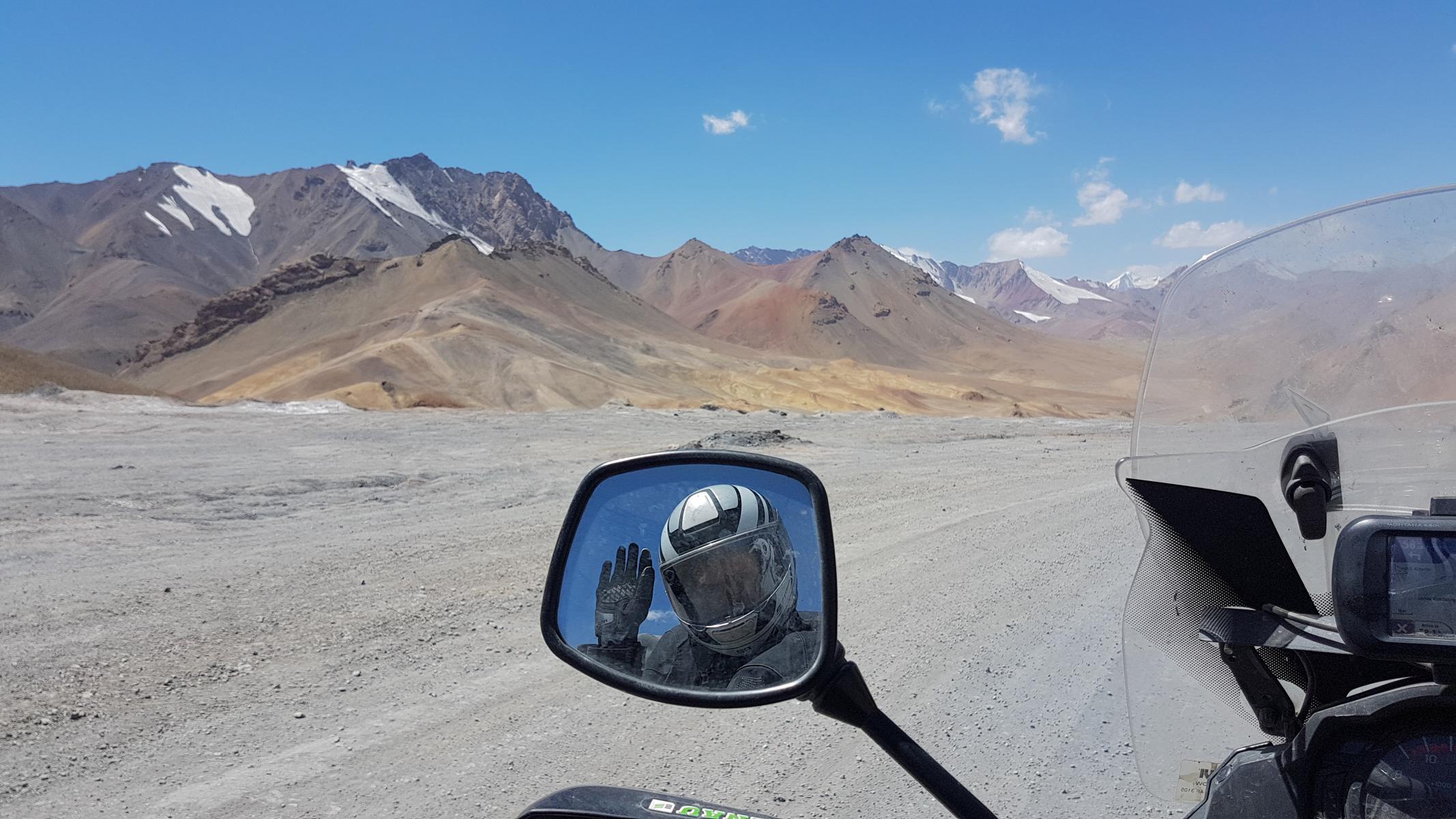
In the afternoon we reached the Karakul, a beautiful lake within a 52 km impact crater. We decided to spend the night there and cross the border to Kyrgyzstan in the next morning. First, we went to a small shop in the nearby village to buy some food. There was hardly anything there beside some vegetables, snickers and Coca Cola.
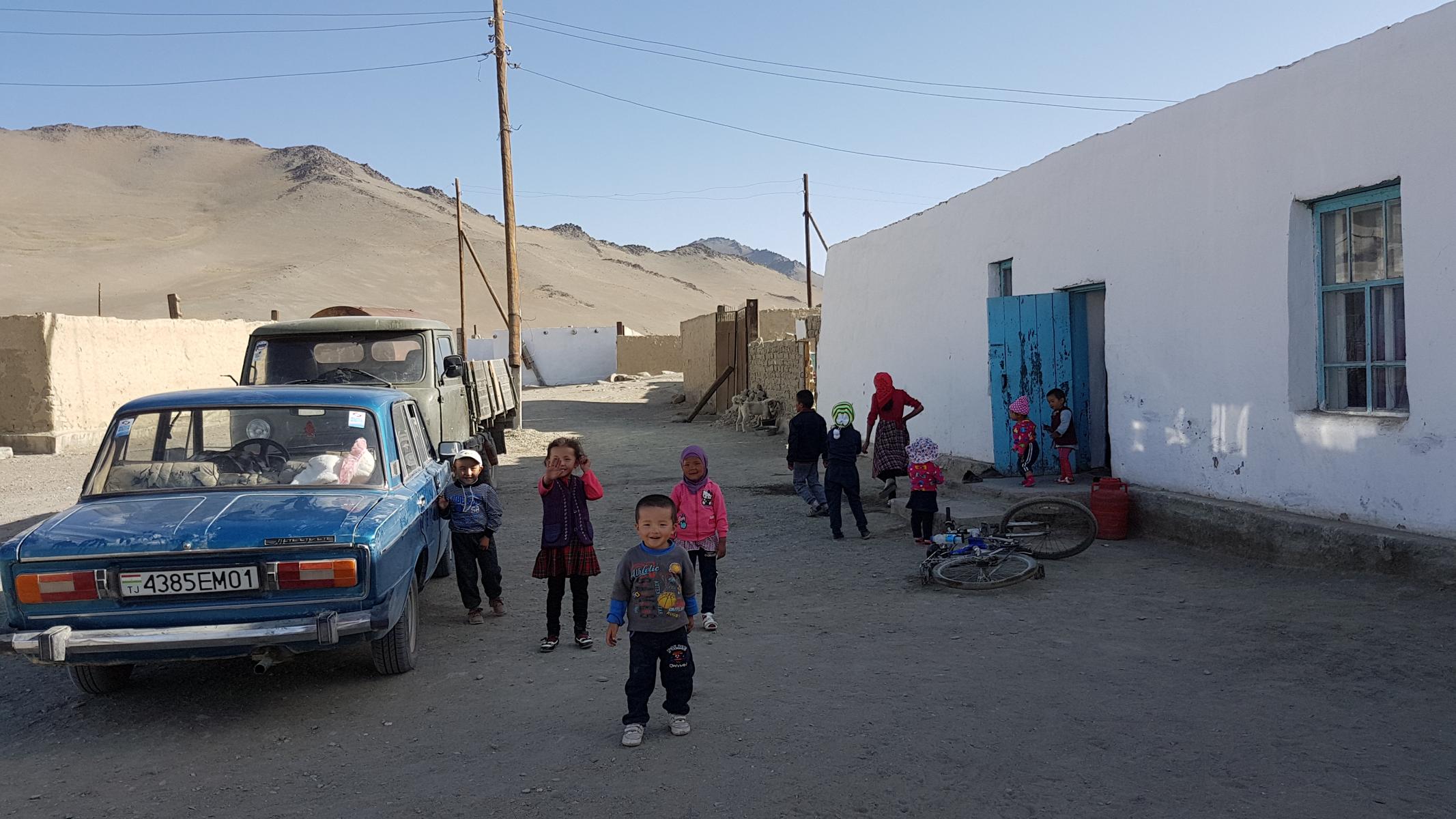
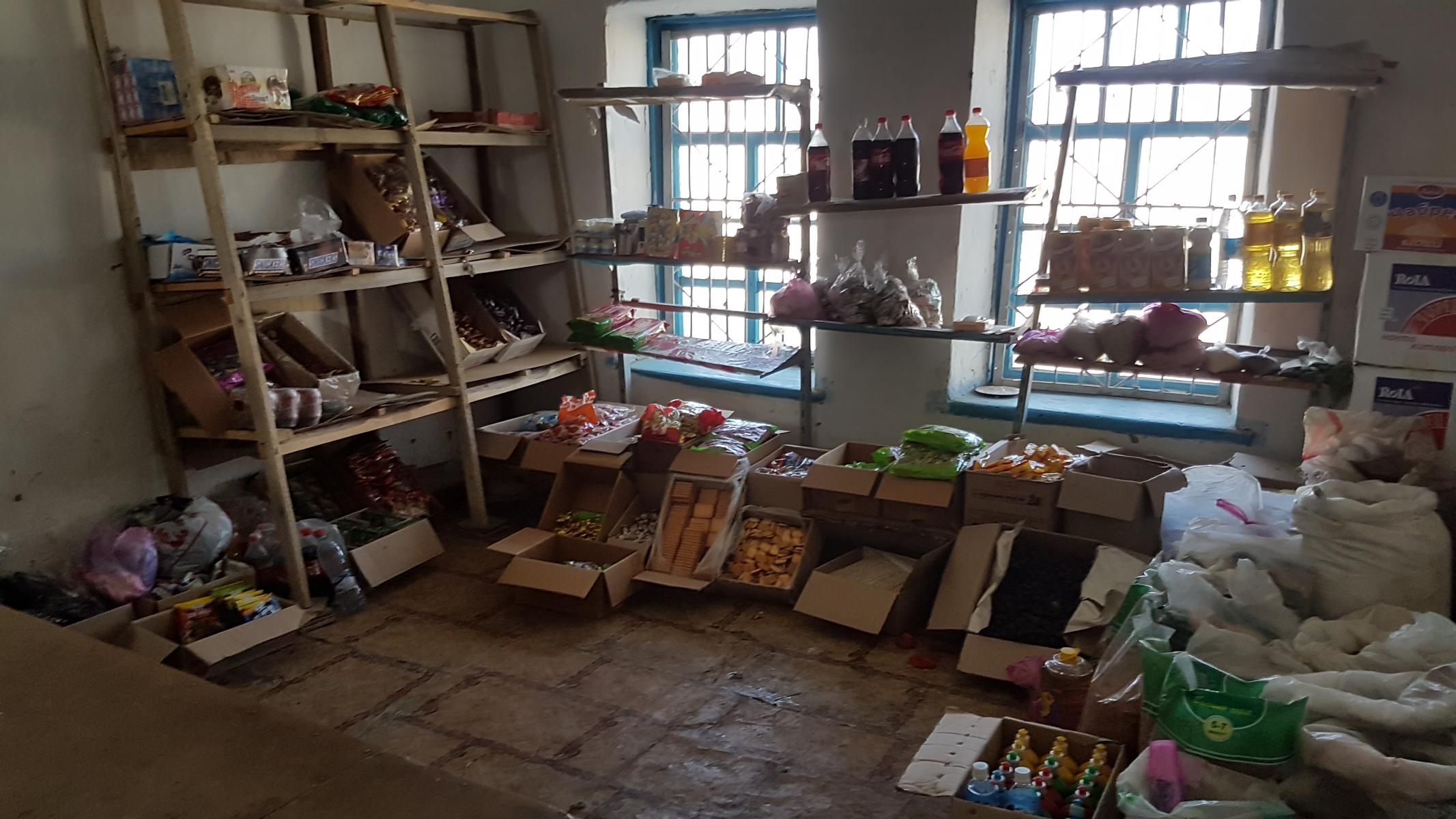
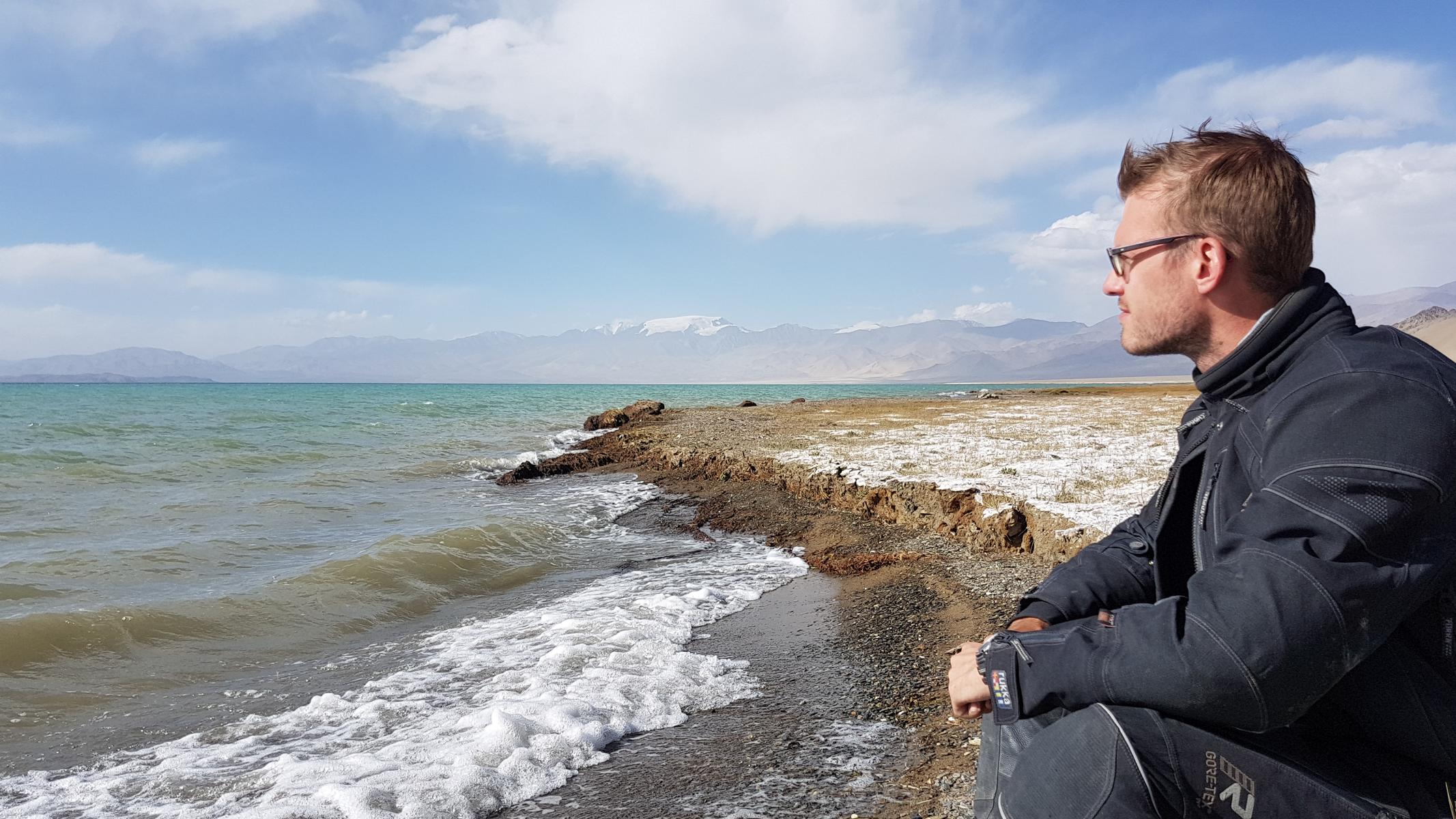
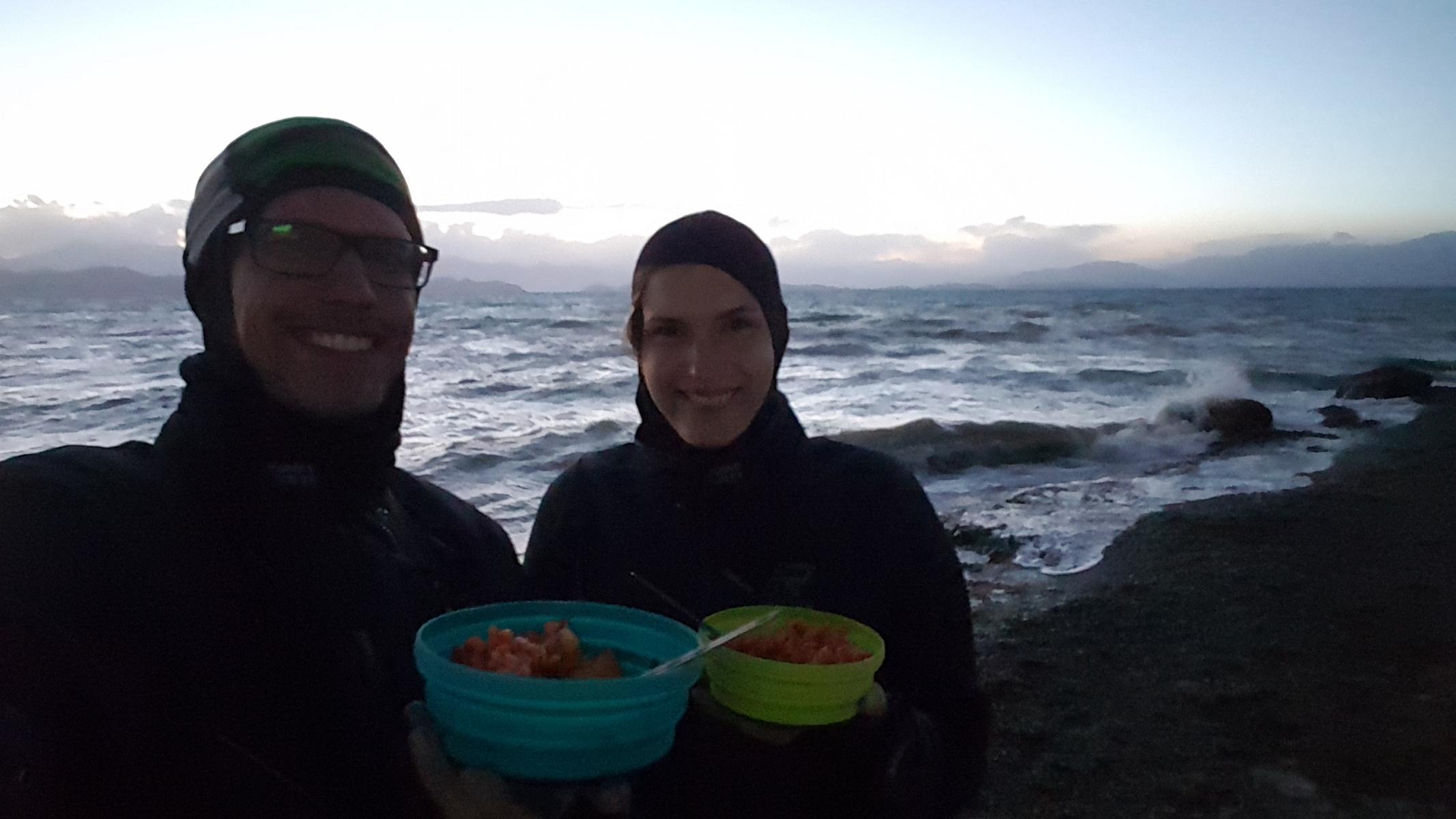
Goodbye Tajikistan
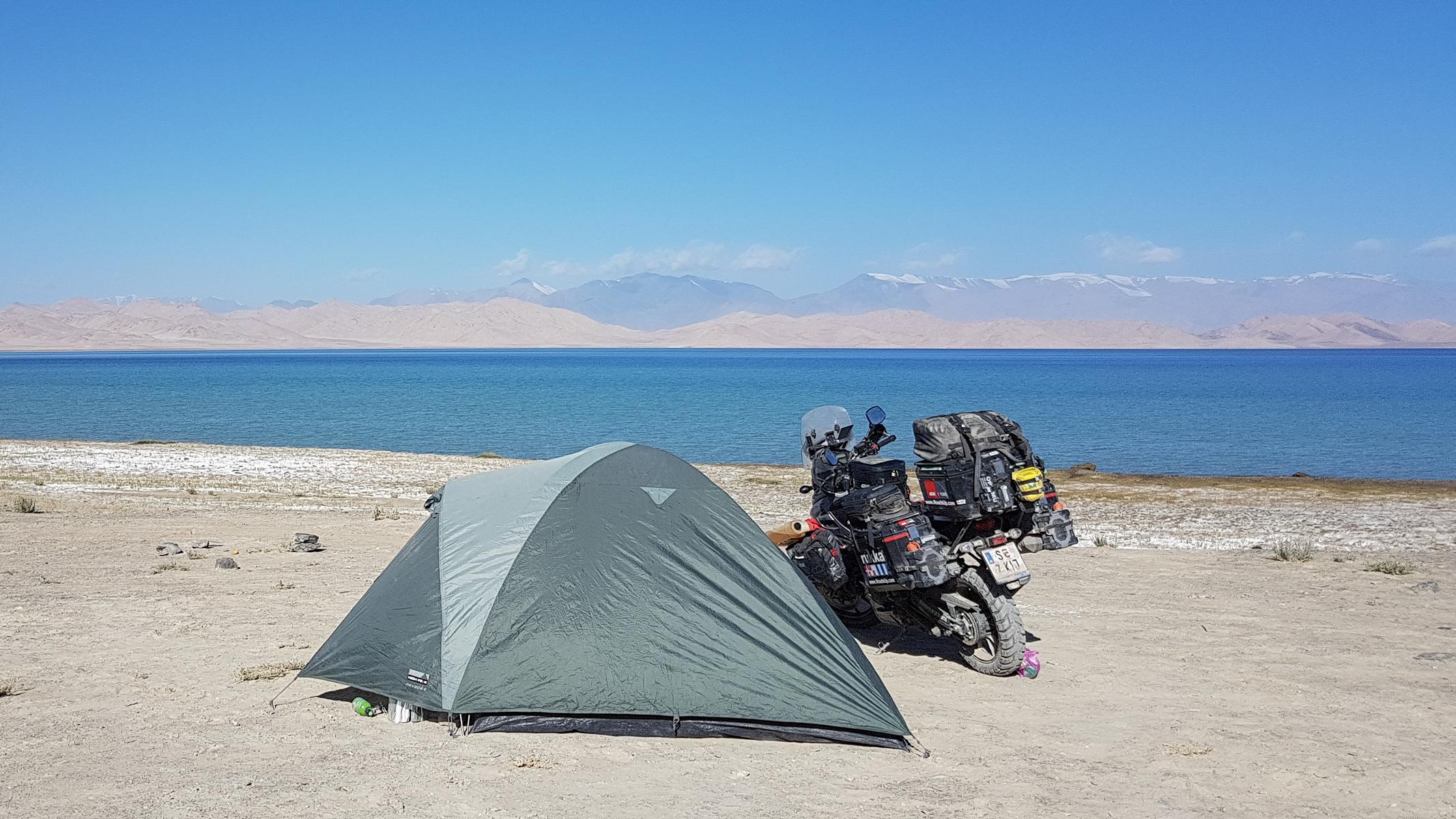

The way to the border was a straight washboard road with a fantastic panoramic view. Snowcapped mountains and rocks in unique formations and colors lay ahead of us.
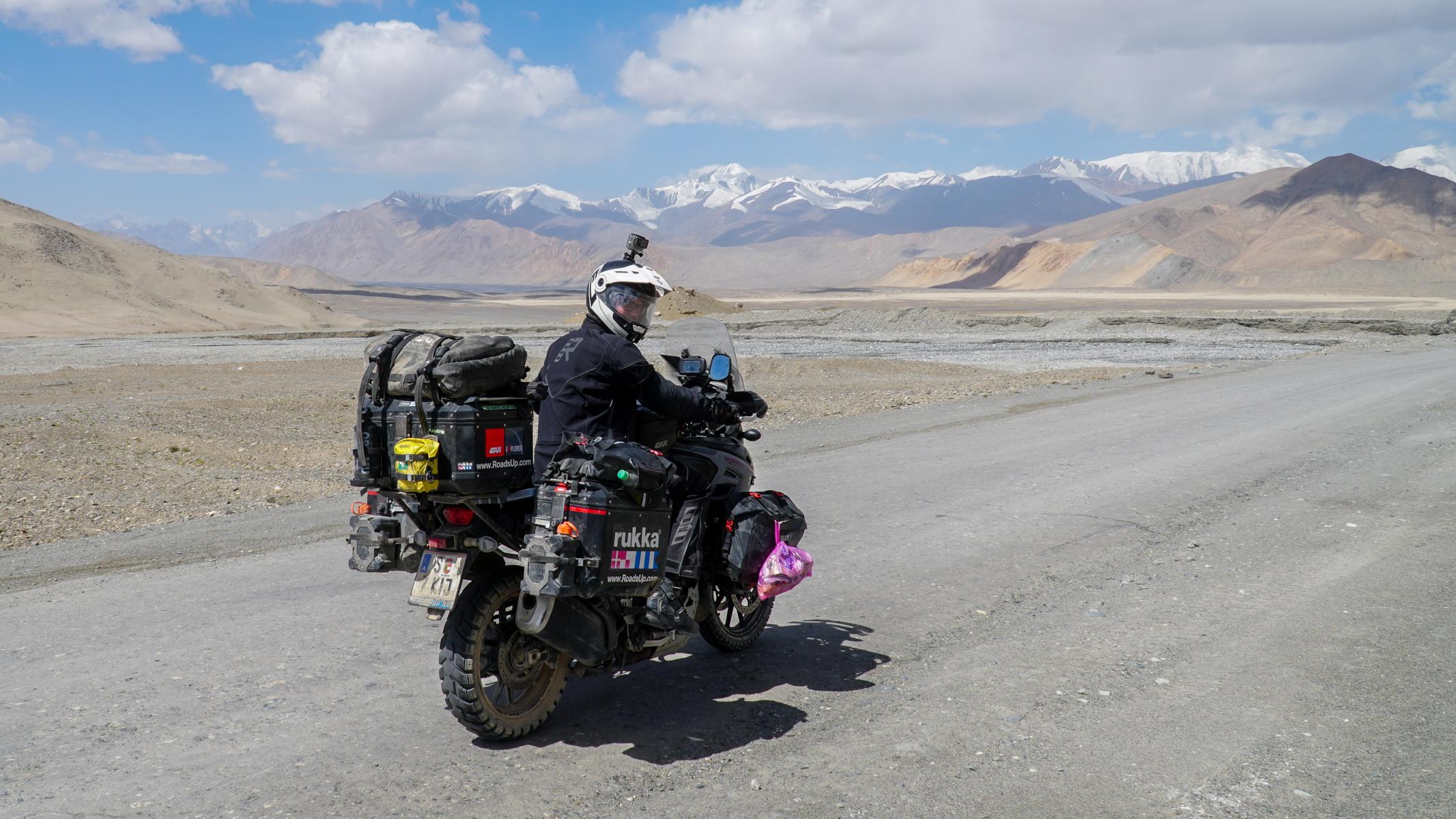
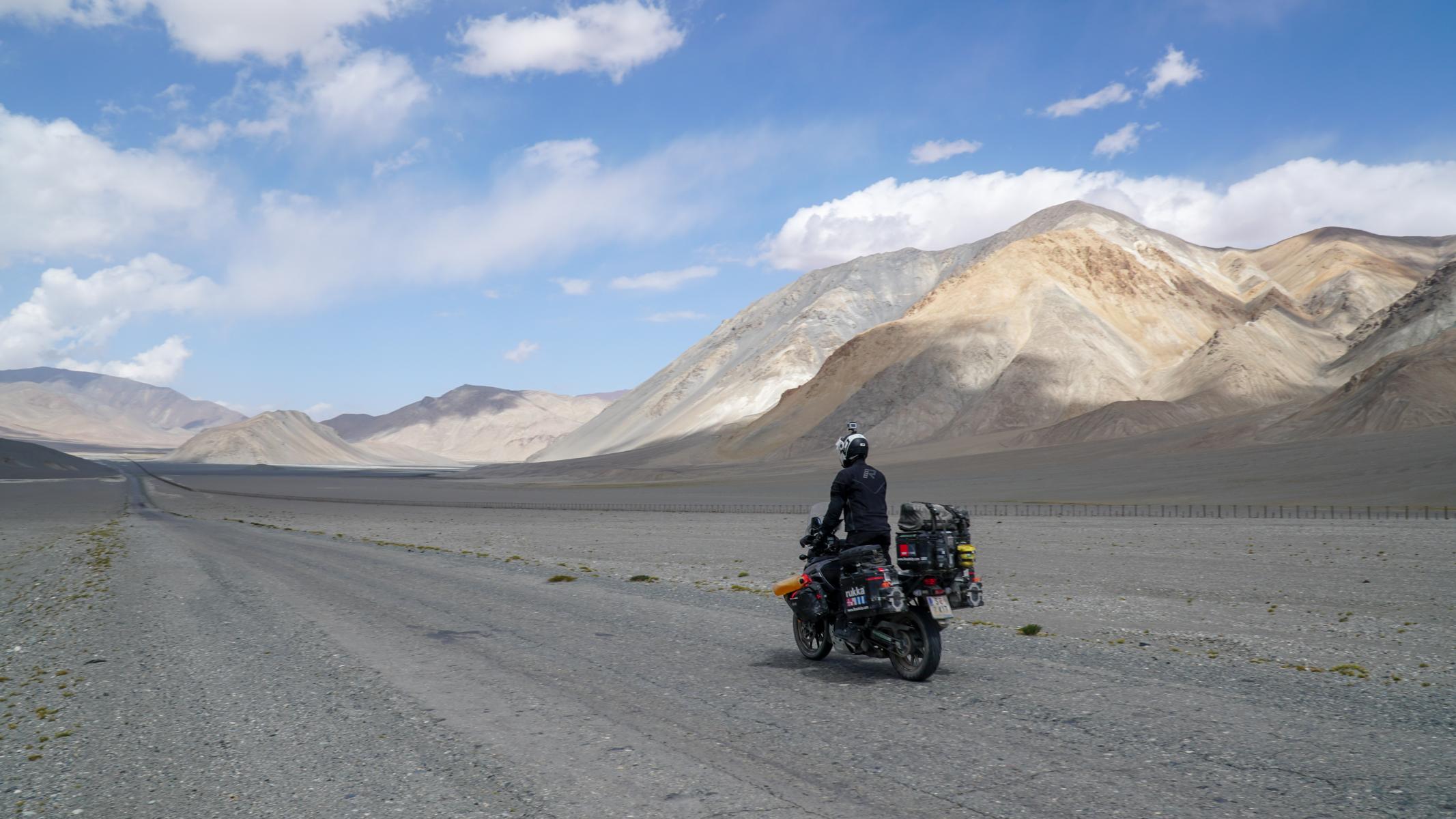
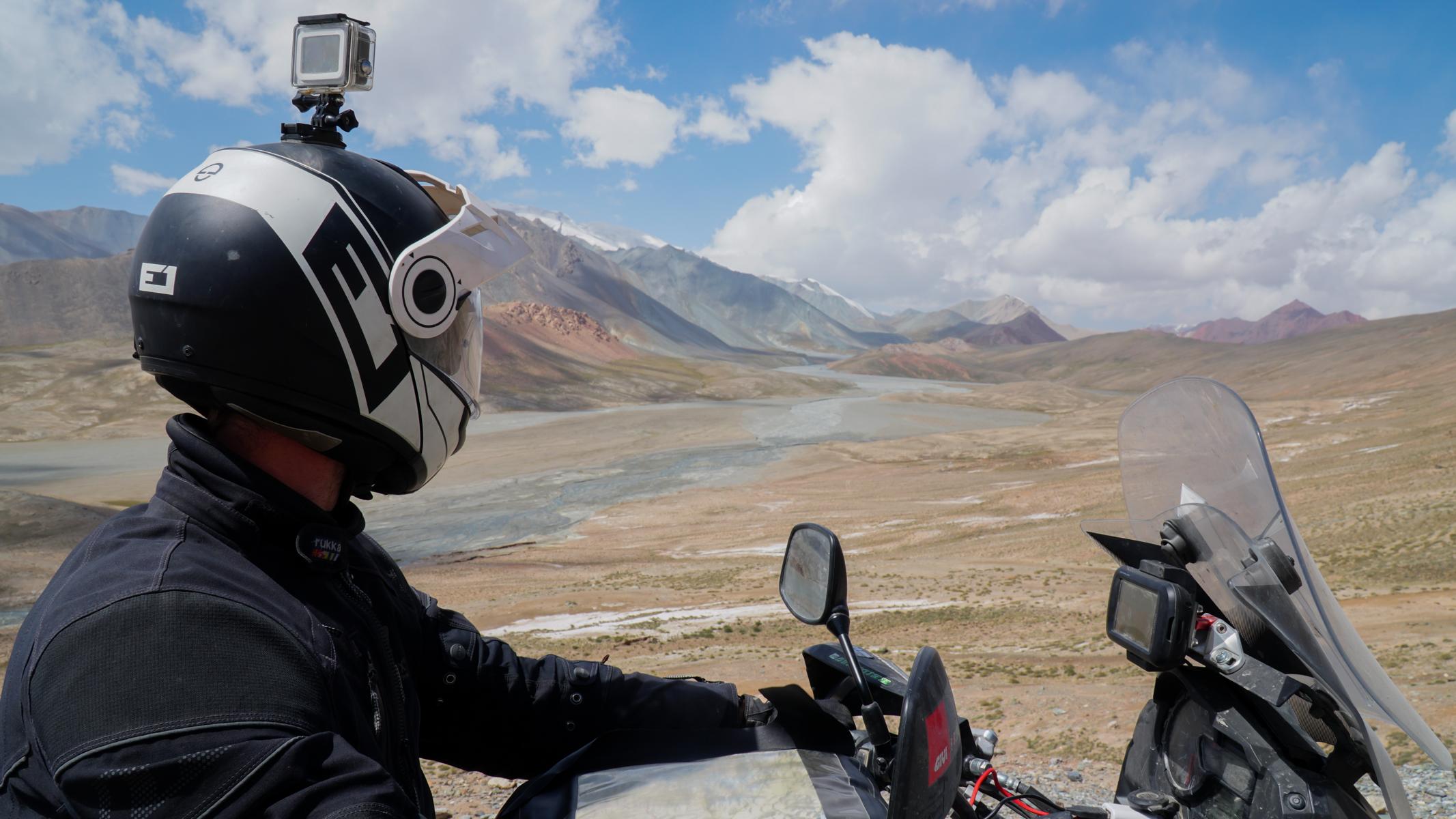
As we arrived at the small border building, we met Anne-Laure and Jérôme again. Together we waited for a while before asking the officers if we could enter. We got the rude answer to wait. After some time, Anne-Laure decided that we have already waited long enough and went inside. The grumpy guy inside told her angrily to take off her shoes before entering his “home”. Inside the small room was a bed. If we were living there, we would also be grumpy, we thought, as we went inside without shoes to get our passport stamped.
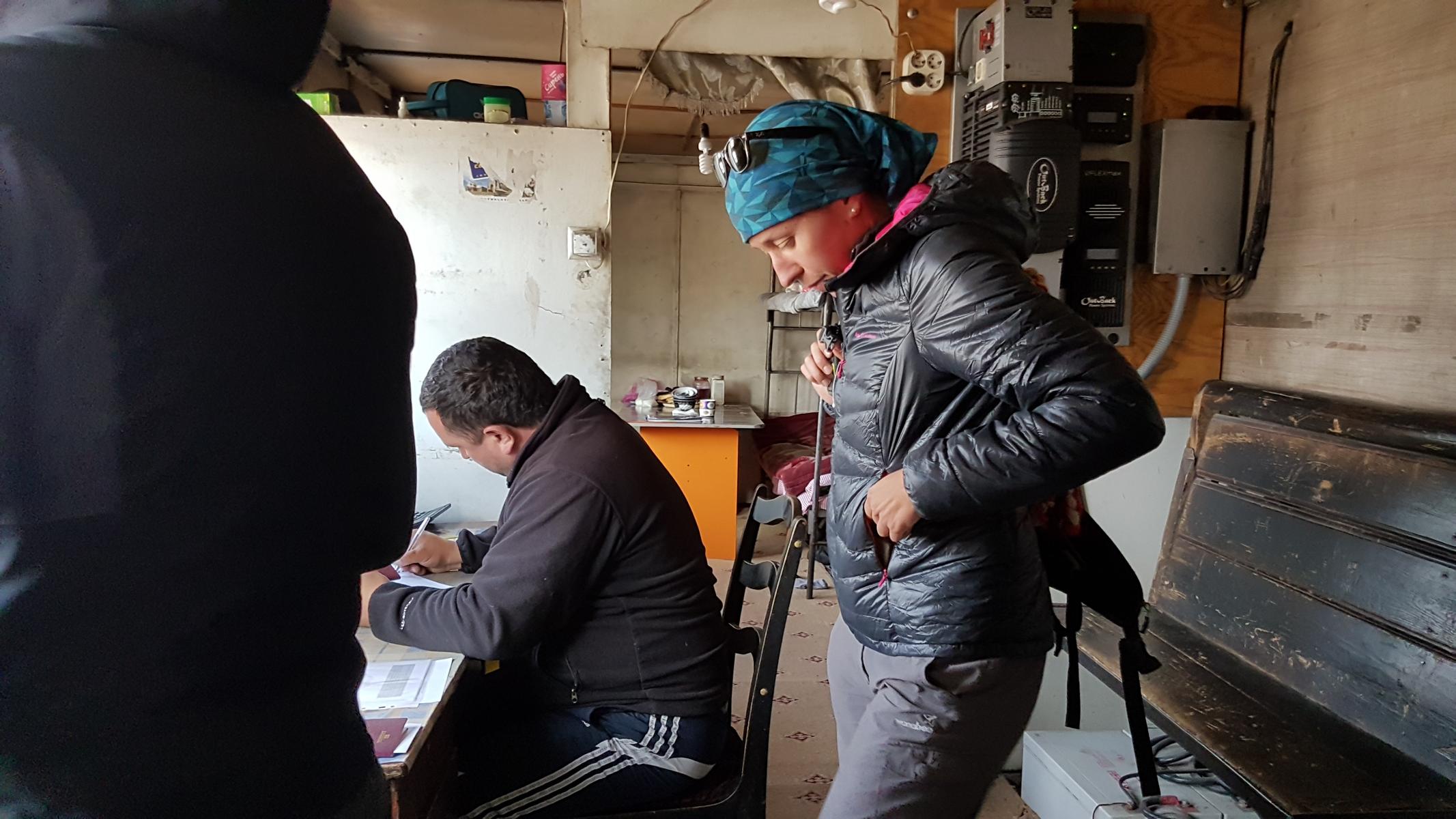
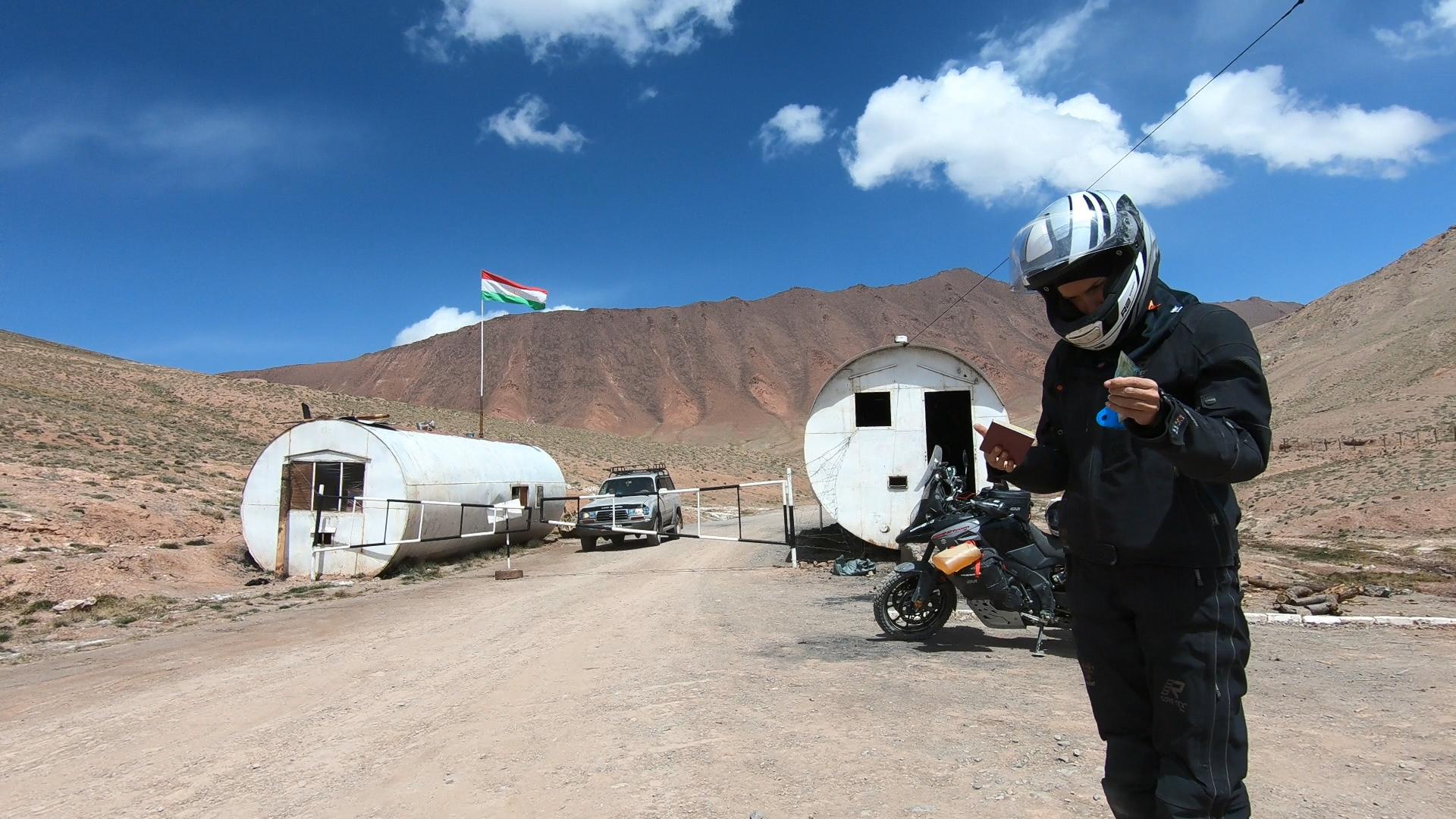
About 30 km of no man’s land followed. We wondered who would help us if we had a breakdown. The scenery was spectacular as we crossed the Kyzyl Art Pass and finally arrived at the Kyrgyz side of the border.
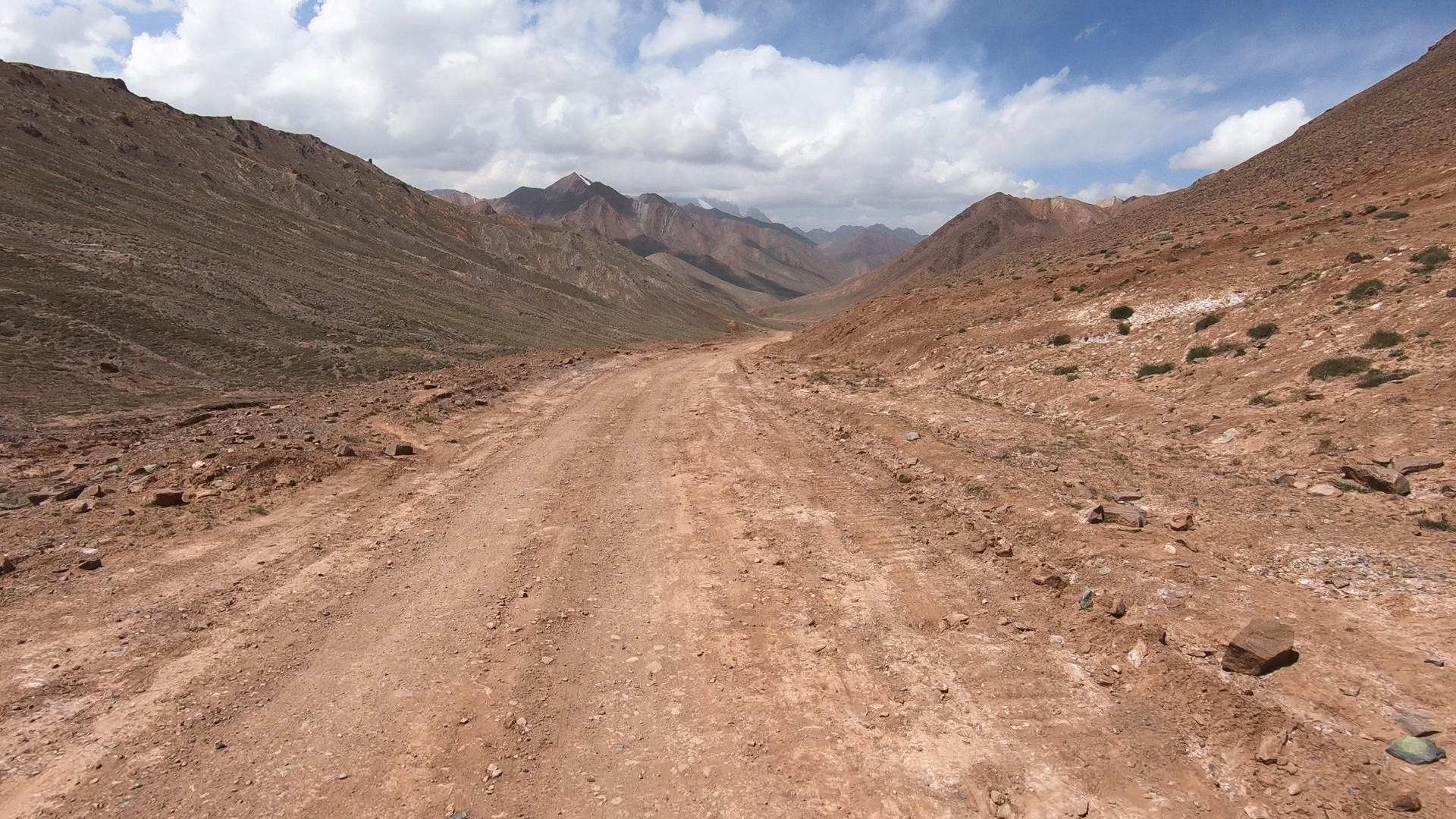
Tajikistan was an amazing experience and a unique country. It was challenging. We love, that it was a real adventure. It is one of the last countries on earth, where you get a real exciting and fascinating experience and feel like a true adventure rider. After crossing the border at high altitude, we were already curious about the next country awaiting us: “Kyrgyzstan, we are coming!”
Route
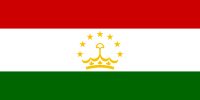
Info Box
Duration of stay
19 Jul 2018 – 13 Aug 2018
15 Aug 2018 – 23 Aug 2018
Entry point
Panjakent (Tajikistan)
Exit point
Kyzyl-Art-Pass (Kyrgyzstan)
Currency
Somoni (Latin script)
cомонӣ (Cyrillic script)
Population
about 9,000,000
Visa
We got our e-visa with GBAO permit (Gorno-Badakhshan Autonomous Region) for the Pamir region very easy and within two days. We paid 70 $ (50 $ for the visa plus 20 $ for the GBAO permit). It is valid for 45 days within a three months’ time period.
Weather
very hot in Dushanbe (35-40 °C),
very cold (about 2°C) in the mountains at night
The Pamir Highway
is also referred to as the “Heroine Highway” due to the massive transport of drugs from Afghanistan. It was built partly in the 19th century during the Great Game, the confrontation between Russia and Great Britain, and partly from the Soviet Union.
Depending on the source it starts in Dushanbe (Tajikistan) or in Mazari Sharif (Afghanistan) and ends in Osh (Kyrgyzstan). Most parts of the road are heavily damaged due to avalanches, earthquakes and landslides.
Best experience
Meeting so many travelers from all over the world was really inspiring. As there was only one main road we met the same people at different parts of the Pamir Highway several times. It felt like being part of a big traveler family.
Worst experience
Peter got food poisoning in Ishkashim, a small town on the Afghan border. We had to go to the hospital where he got an intravenous infusion for rehydration.
Religion
The majority of the population (about 85 %) are Muslims. About 12 % describe themselves as nonreligious and a small minority (mostly Russians) are Christians. Although Tajikistan is a secular country, Islam has become an essential part of Tajik culture.
Interesting fact
The Nurek-Dam, the world’s second largest hand-made dam generates hydroelectric power in Tajikistan. It is only surpassed by the Jinping-I Dam in China.
Travel tip
Take enough US-Dollars with you. Getting money is very complicated and only possible at some ATMs in Dushanbe. DHL is also not operating in Tajikistan, so sending spare parts or documents can take some weeks.
Eat the same food as the locals.

Accommodation
near Panjakent
tent
Dushanbe
Greenhouse Hostel
Hello Hostel
after Dushanbe
(north route)
tent
Qal’ai Khumb
Hotel “Sangakov Bahrom”
Khorugh
Pamir Lodge
(first room then tent)
Ishkashim
Hani’s guest house
Lake Yashikul
tent
Murghab
Homestay Suhrob
Lake Karakul
tent
Workshops
motorcycle repair in Tajikistan:
Dushanbe
Bike House Dushanbe – Aziz is really helpful and tries to find a solution for every problem. He also knows the Pamir Highway by heart and can give you useful information about the road, accommodations and great places to visit.
Khorugh
Ali from Moto Peppers Guesthouse helped us find a mechanic that hammered back our bent rim. He went with Peter through the whole city of Khorugh to help.
Ishkashim
The local mechanic picked us up in his truck from the border to Afghanistan. We are very grateful for his spontaneous support. Unfortunately he couldn`t help us with the rim.

